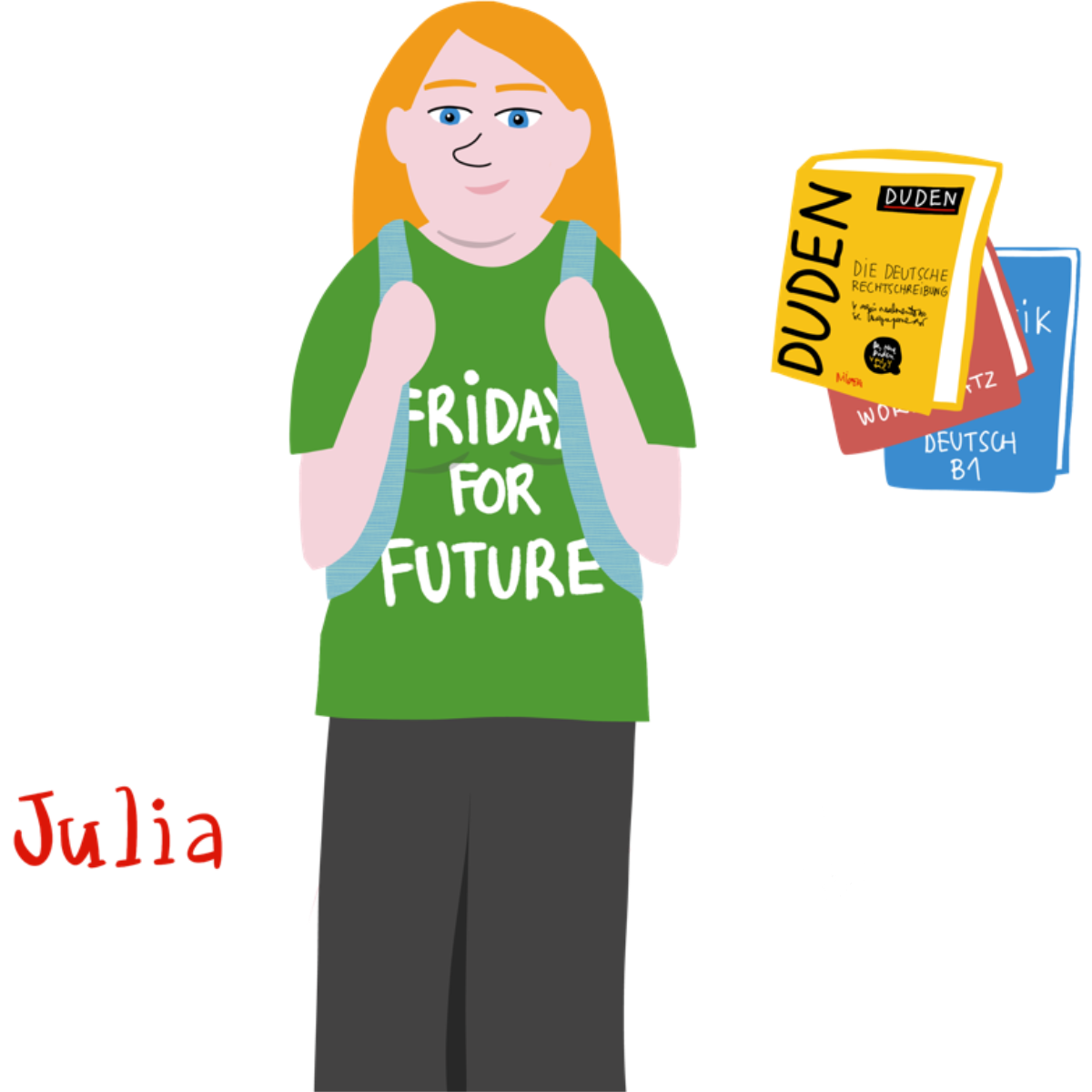Showing
100
of 465 Wendungen
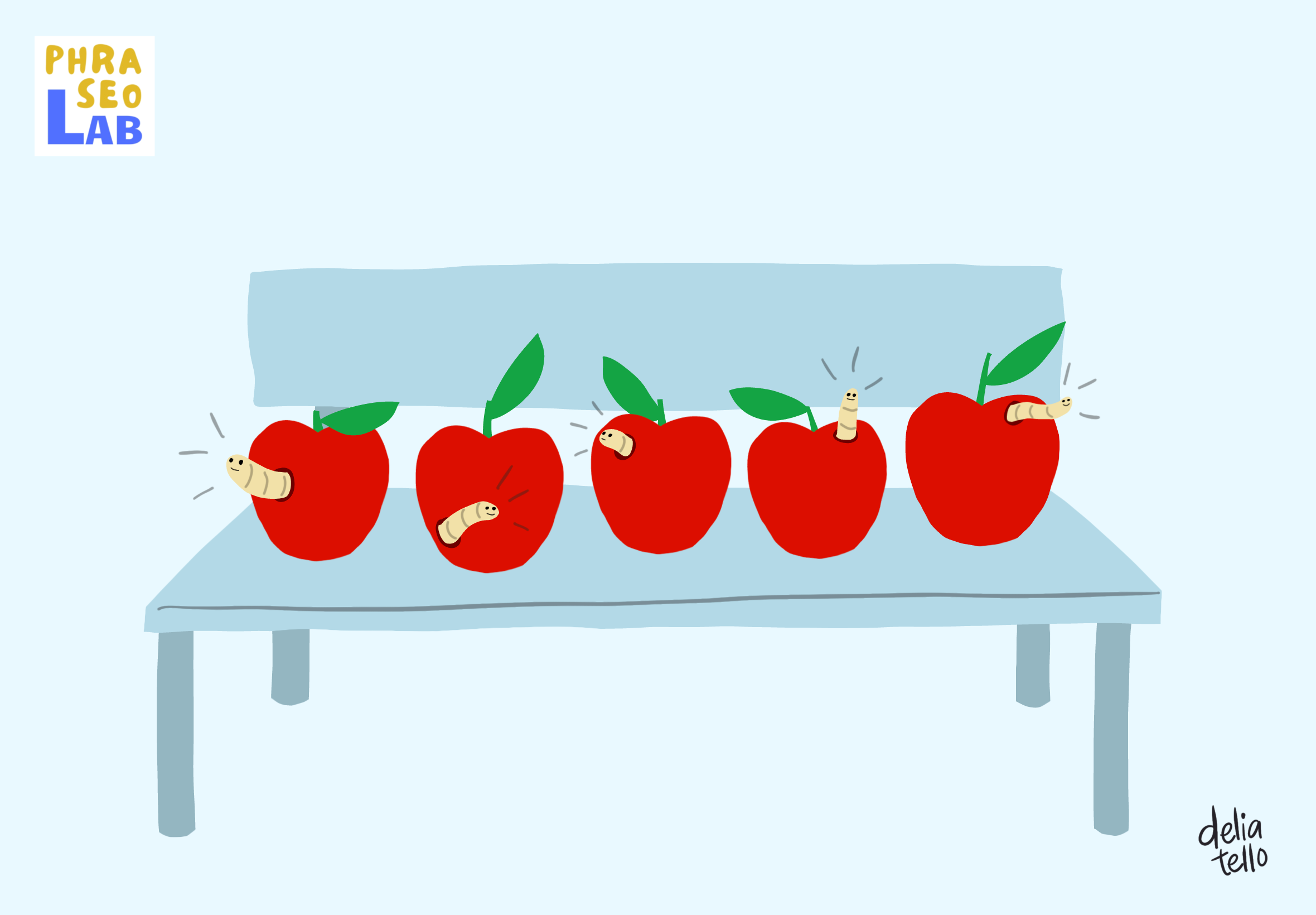
ohne Ausnahme oder Unterschied; durchweg
 across the board
across the board
involving or affecting everyone in a group, community, society, etc.
 over hele linjen
over hele linjen
 χωρίς εξαίρεση / μηδενός εξαιρουμένου
χωρίς εξαίρεση / μηδενός εξαιρουμένου
 bez wyjątku
bez wyjątku
 de forma generalizada/a todos los sectores
de forma generalizada/a todos los sectores
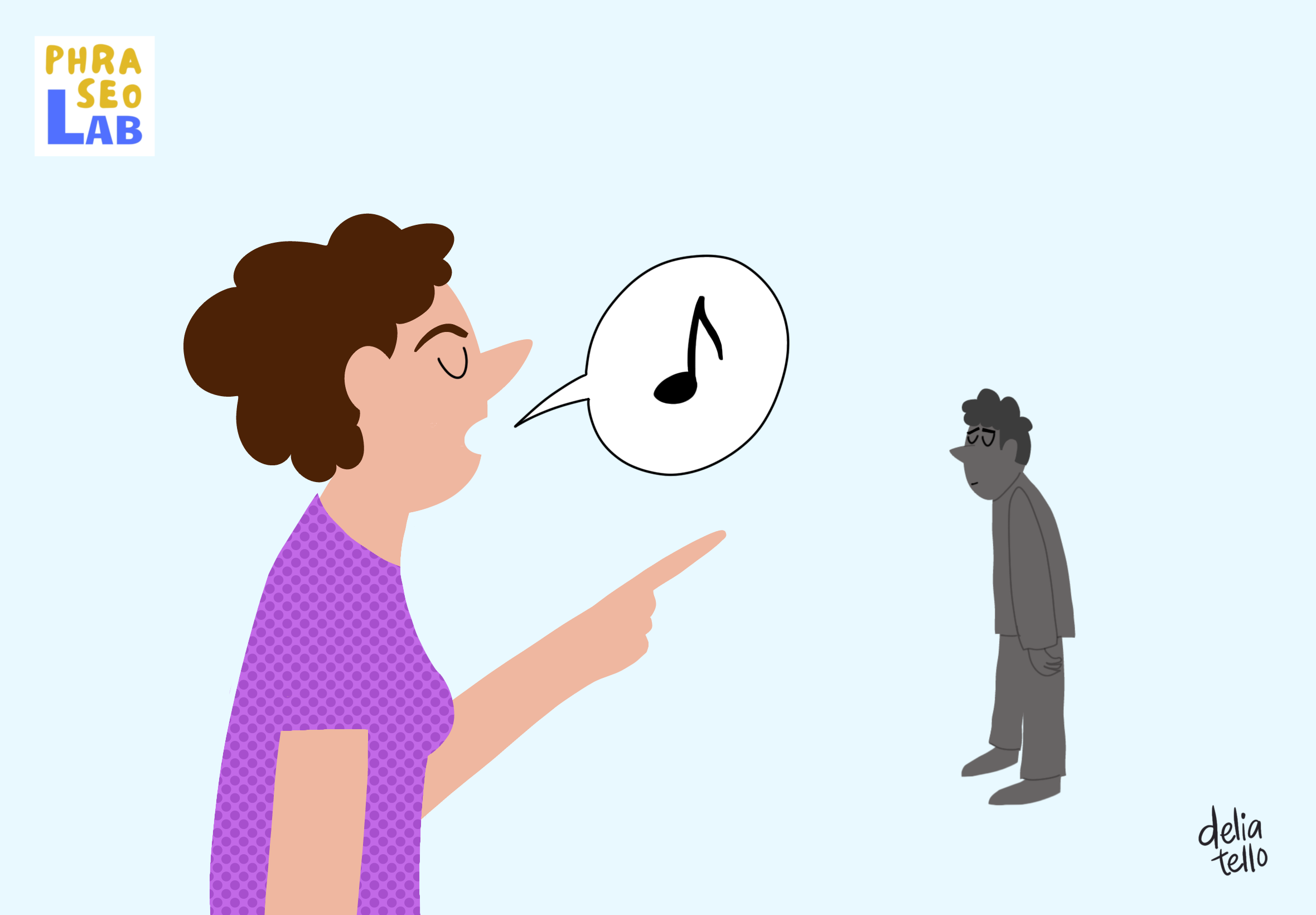
1. den Charakter, die Atmosphäre bestimmen; 2 dominierend, führend sein
 to set the tone (for something) (!)
to set the tone (for something) (!)
to establish the atmosphere of an event or the general character of something (for example, of a meeting)
 angive tonen; slå tonen an
angive tonen; slå tonen an
 δίνω τον τόνο
δίνω τον τόνο
 nadawać ton
nadawać ton
 marcar la pauta
marcar la pauta
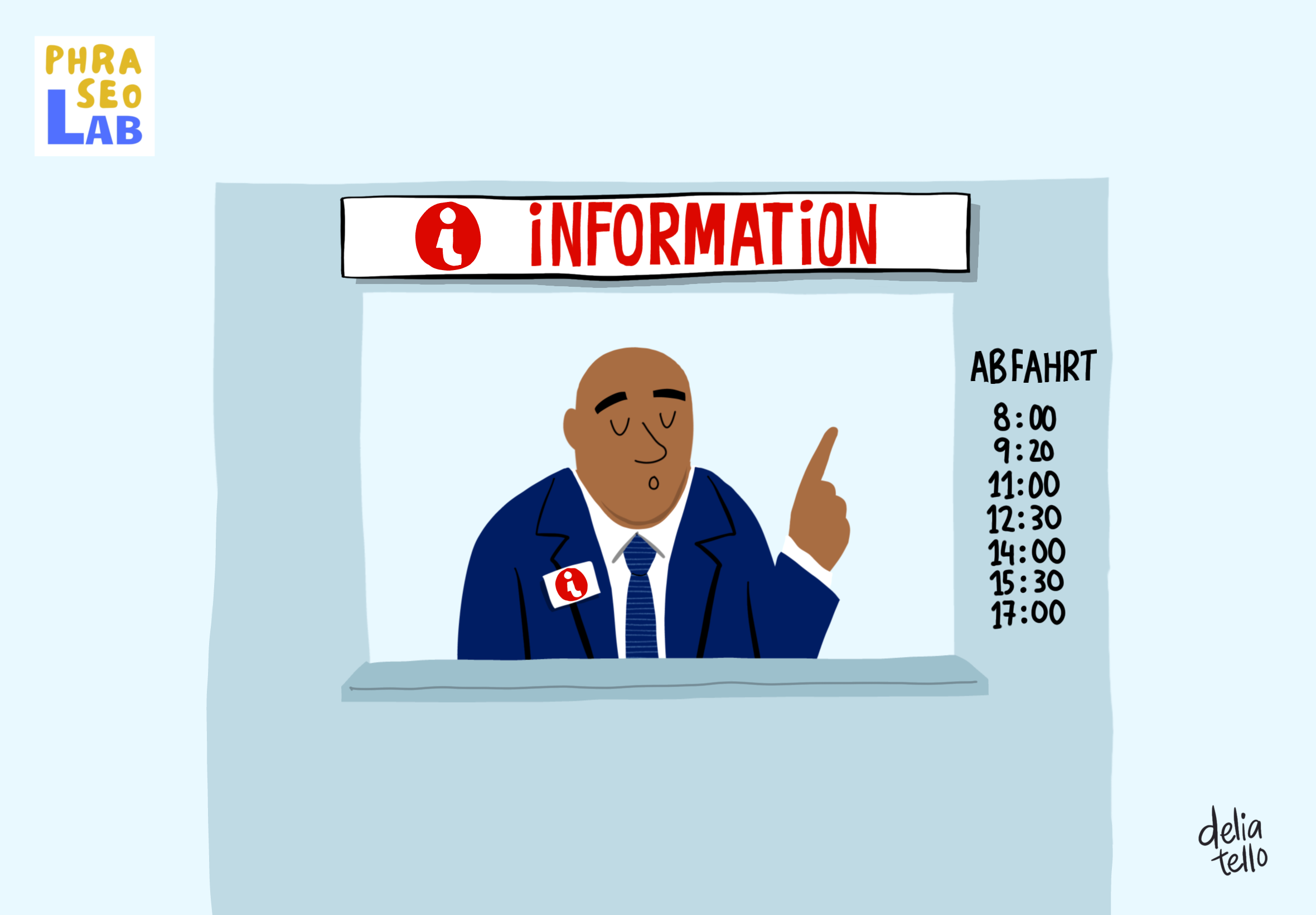
 to give / provide (somebody with) information
to give / provide (somebody with) information
 informere / oplyse
informere / oplyse
 δίνω μια πληροφορία
δίνω μια πληροφορία
 udzielić informacji
udzielić informacji
 dar información
dar información

die Ursache finden, die Erklärung suchen
 to get to the bottom of something (!)
to get to the bottom of something (!)
to get, discover the cause or truth of something which was not easy to find
 komme til bunds i noget
komme til bunds i noget
 ψάχνω μια υπόθεση σε βάθος
ψάχνω μια υπόθεση σε βάθος
 gruntownie coś zbadać, dotrzeć do sedna
gruntownie coś zbadać, dotrzeć do sedna
 llegar hasta el fondo
llegar hasta el fondo
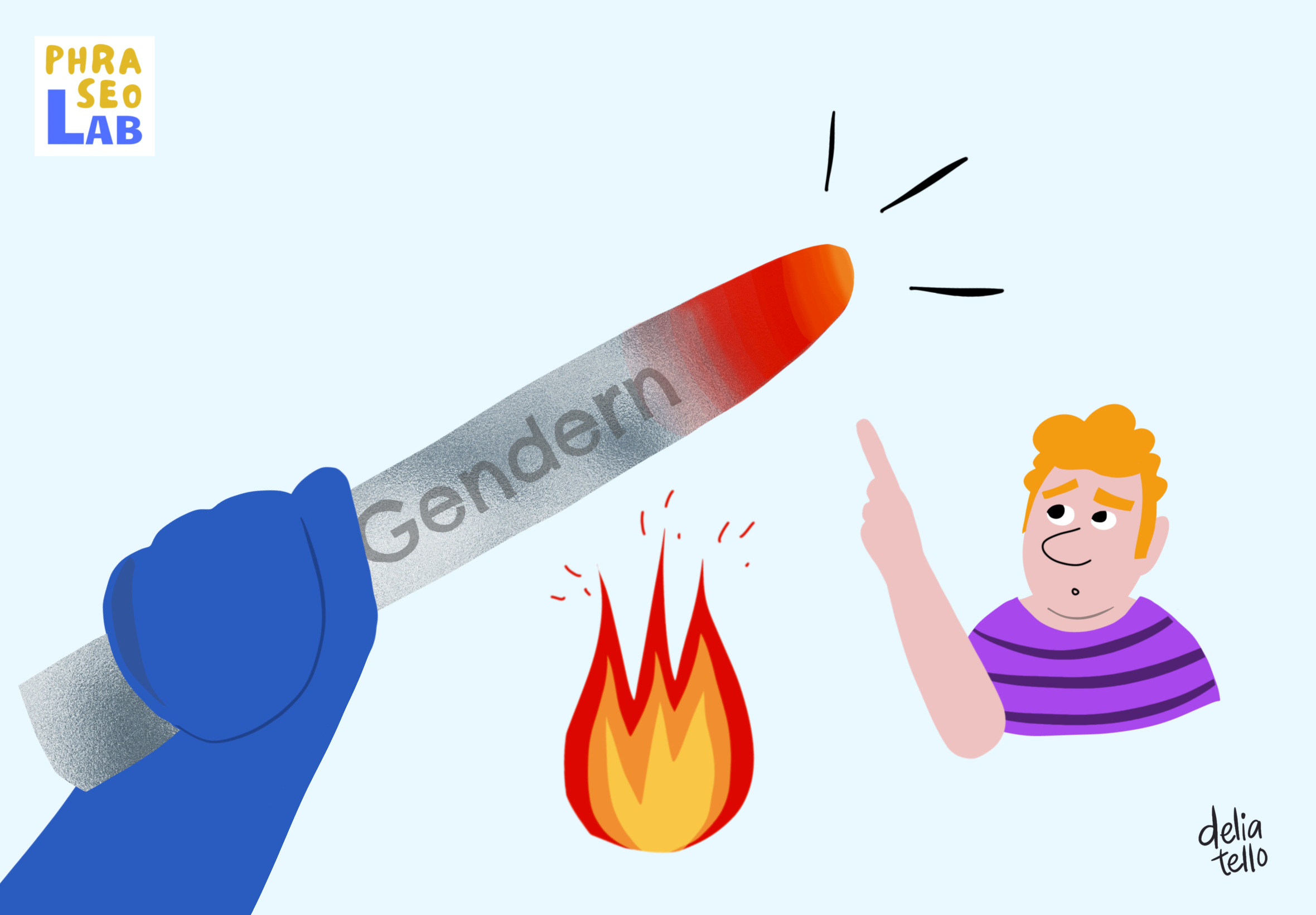
ein umstrittenes Thema; eine Angelegenheit, die Schwierigkeiten verursacht
 hot potato
hot potato
a problem or issue which is difficult to deal with and causes discrepancies
 (noget er) en varm kartoffel
(noget er) en varm kartoffel
 δύσκολο / καυτό θέμα
δύσκολο / καυτό θέμα
 gorący / drażliwy temat
gorący / drażliwy temat
 ser una patata caliente
ser una patata caliente
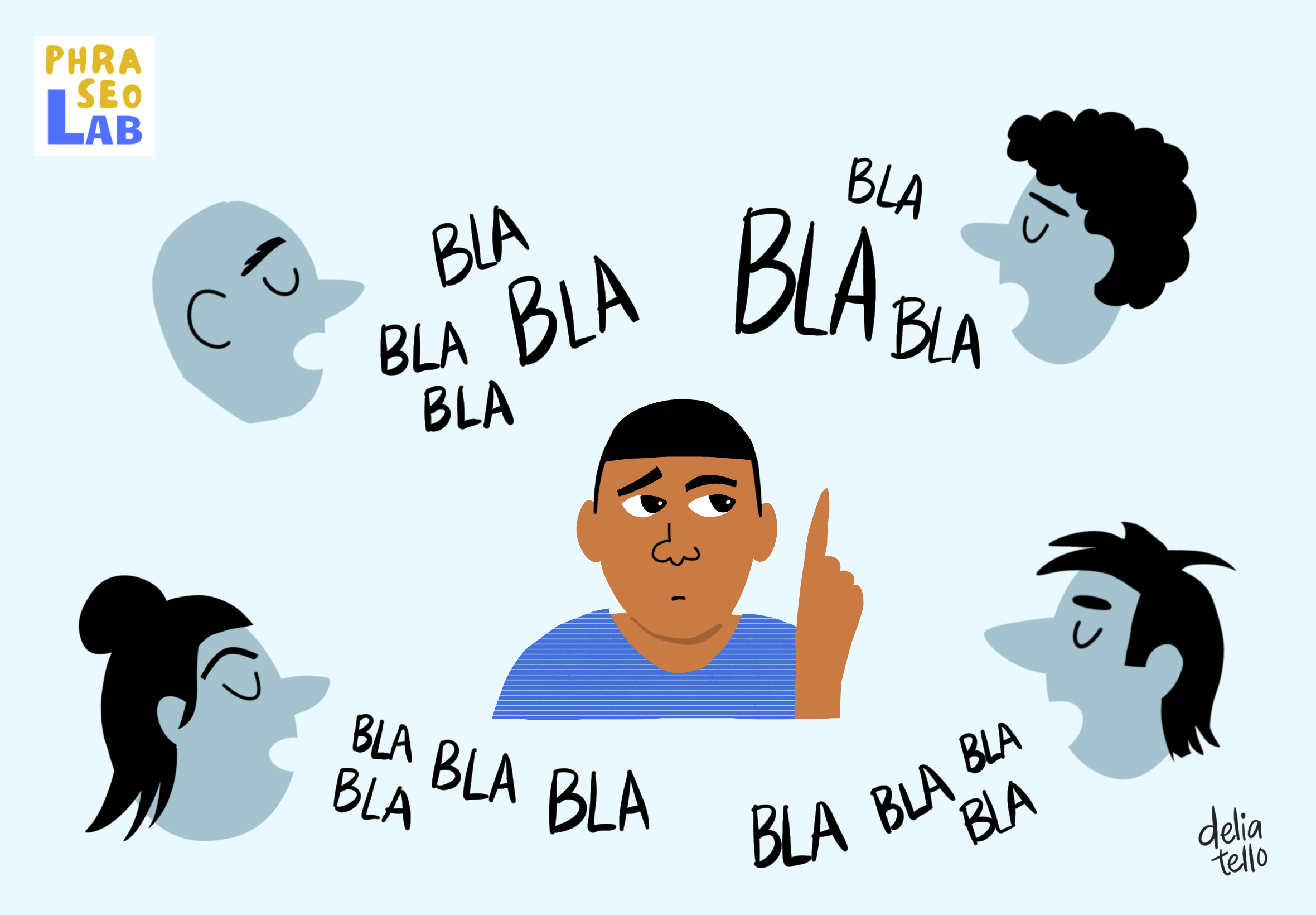
die / keine Gelegenheit bekommen, etwas zu sagen
 to (not) get a word in edgeways / edgewise
to (not) get a word in edgeways / edgewise
not to be able to say anything because other people do not stop talking
 (ikke) komme til orde
(ikke) komme til orde
 (δεν) μου δίνεται η ευκαιρία να πάρω τον λόγο
(δεν) μου δίνεται η ευκαιρία να πάρω τον λόγο
 (nie) dojść do słowa
(nie) dojść do słowa
 no poder meter baza
no poder meter baza
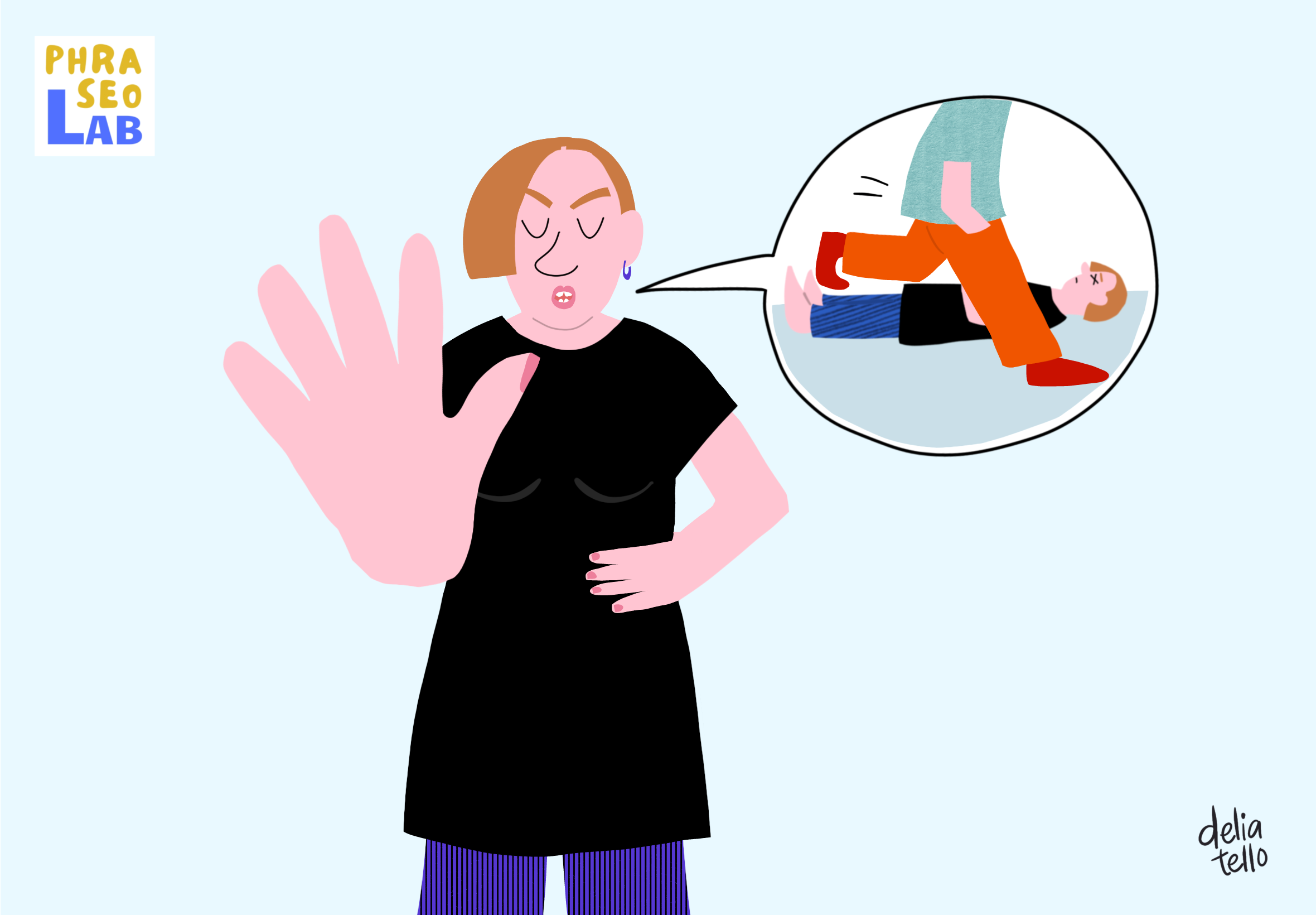
sagt man, wenn man etwas nicht akzeptieren will. "Das geschieht nicht, solange ich lebe!"
 over my dead body
over my dead body
said to emphasise how strongly you oppose something and how determined you are to prevent it from happening. "I won't accept that"
 kun over mit lig!
kun over mit lig!
 Μόνο πάνω από το πτώμα μου!
Μόνο πάνω από το πτώμα μου!
 Po moim trupie!
Po moim trupie!
 (Sólo) por encima de mi cadaver
(Sólo) por encima de mi cadaver
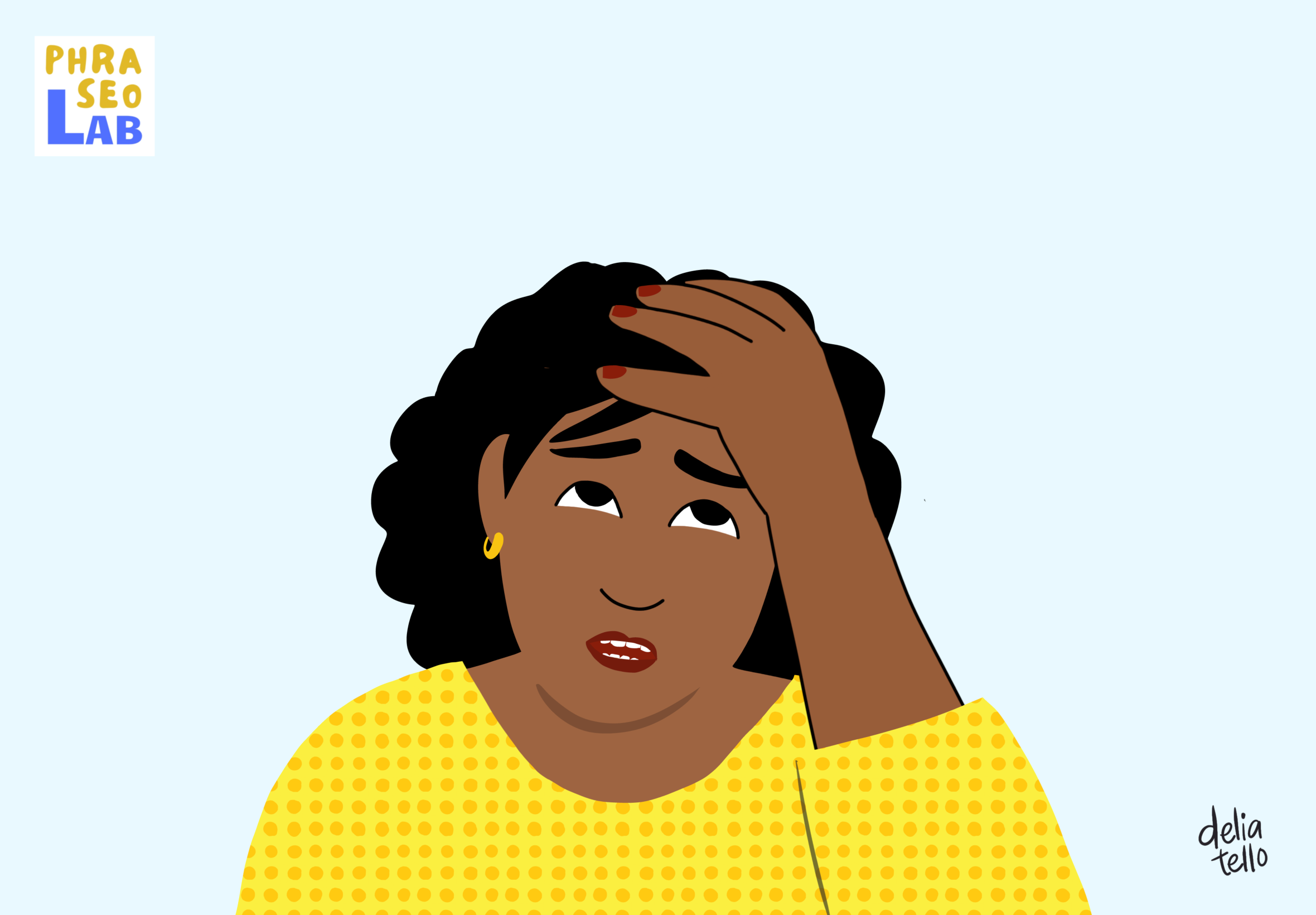
wird verwendet, um Verärgerung, Ungeduld, Aufregung, Überraschung auszudrücken
 Oh my God!
Oh my God!
(informal) used to express feelings such as anger, shock, surprise, excitement, fear, etc.
 Du godeste!
Du godeste!
 Ωχ, Θεέ μου!
Ωχ, Θεέ μου!
 O Boże! O matko!
O Boże! O matko!
 ¡Oh, Dios mio!
¡Oh, Dios mio!
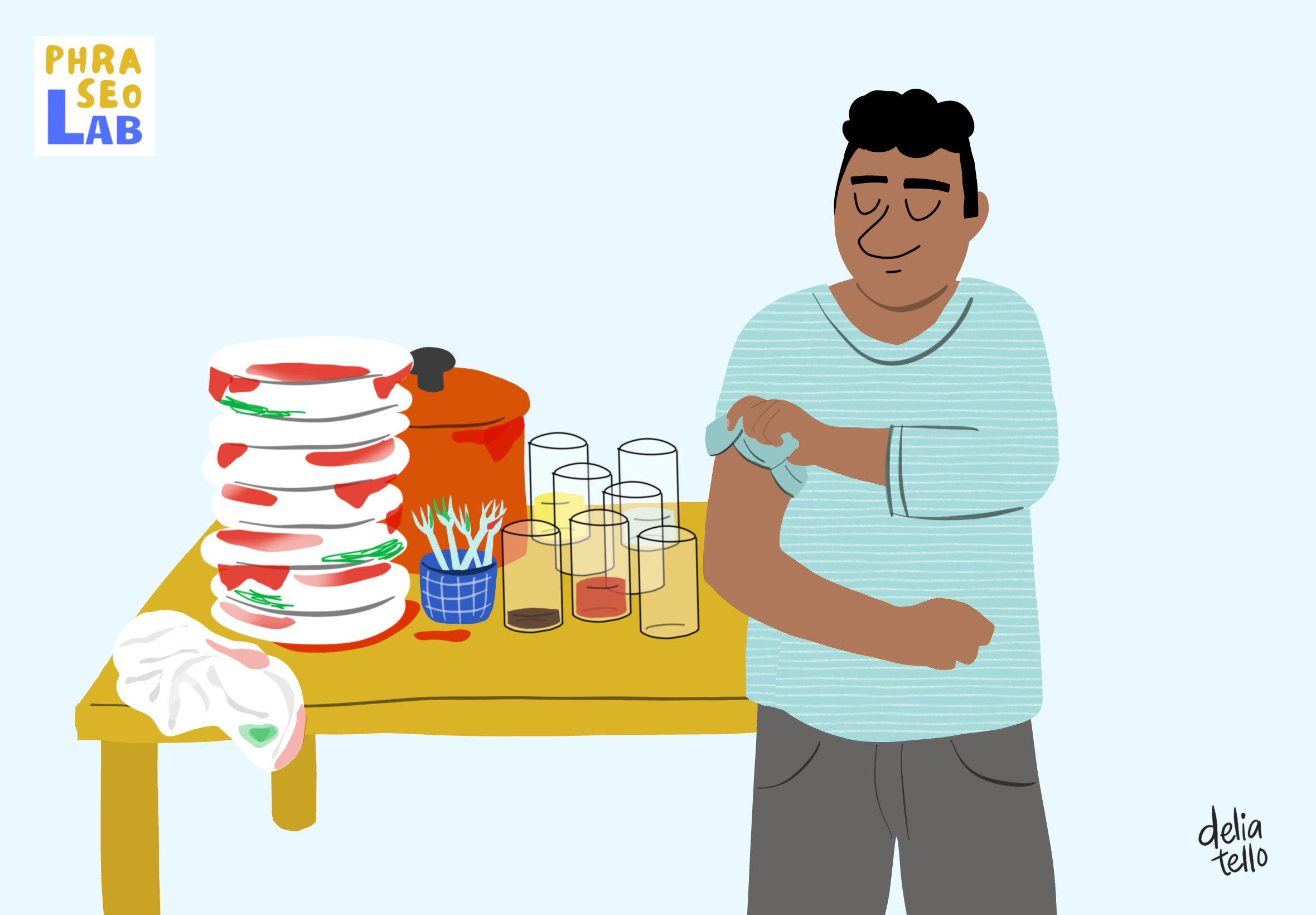
sich mit viel Energie an die Arbeit machen; viel, tüchtig arbeiten
 to roll up your sleeves
to roll up your sleeves
to get ready for hard work
 smøge ærmerne op
smøge ærmerne op
 σηκώνω τα μανίκια, στρώνομαι στη δουλειά
σηκώνω τα μανίκια, στρώνομαι στη δουλειά
 zakasać rękawy
zakasać rękawy
 remangarse (para trabajar)
remangarse (para trabajar)
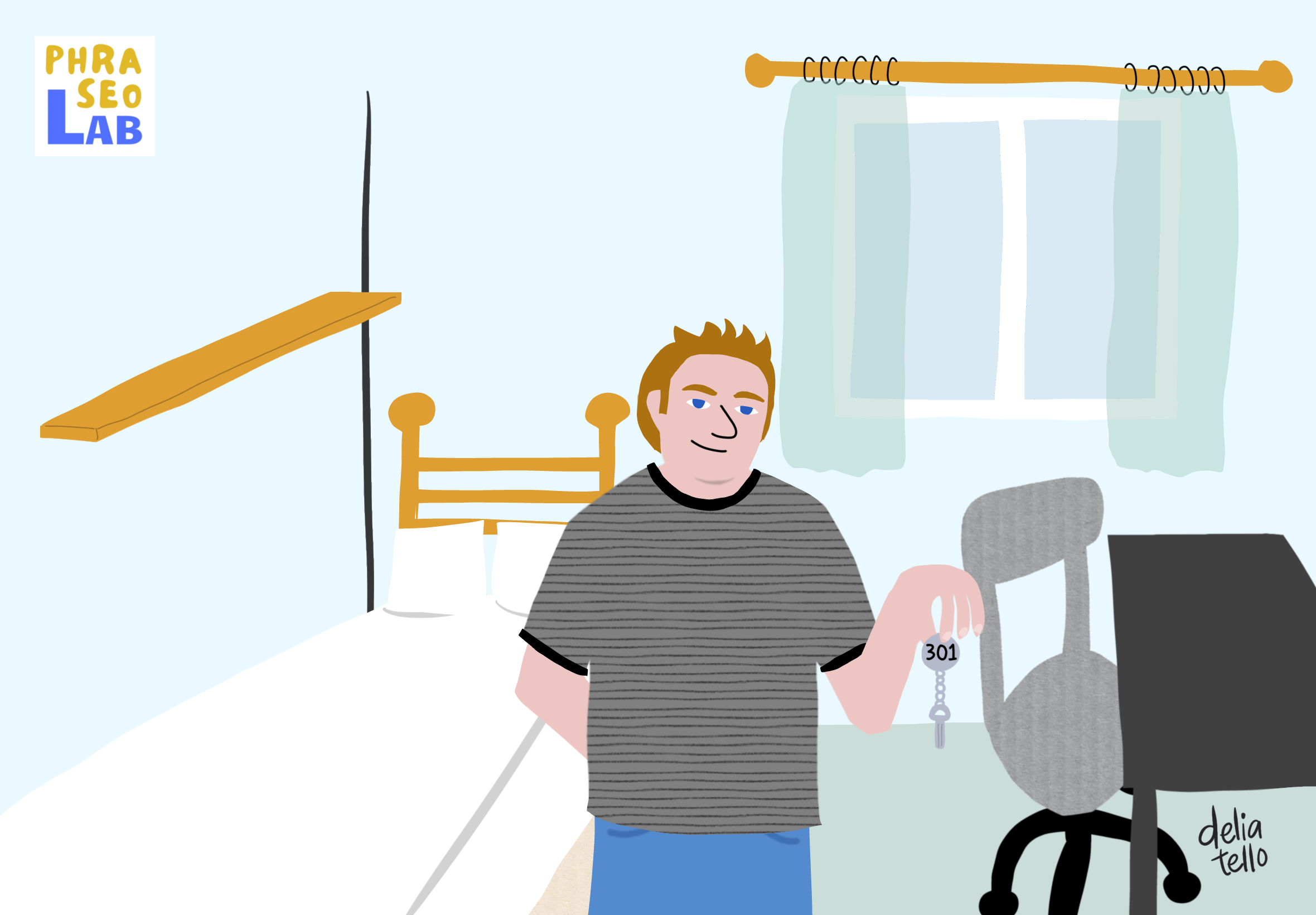
 to take / rent a room
to take / rent a room
 leje et værelse
leje et værelse
 νοικιάζω ένα δωμάτιο
νοικιάζω ένα δωμάτιο
 wziąć / wynająć pokój
wziąć / wynająć pokój
 coger/alquilar una habitación
coger/alquilar una habitación
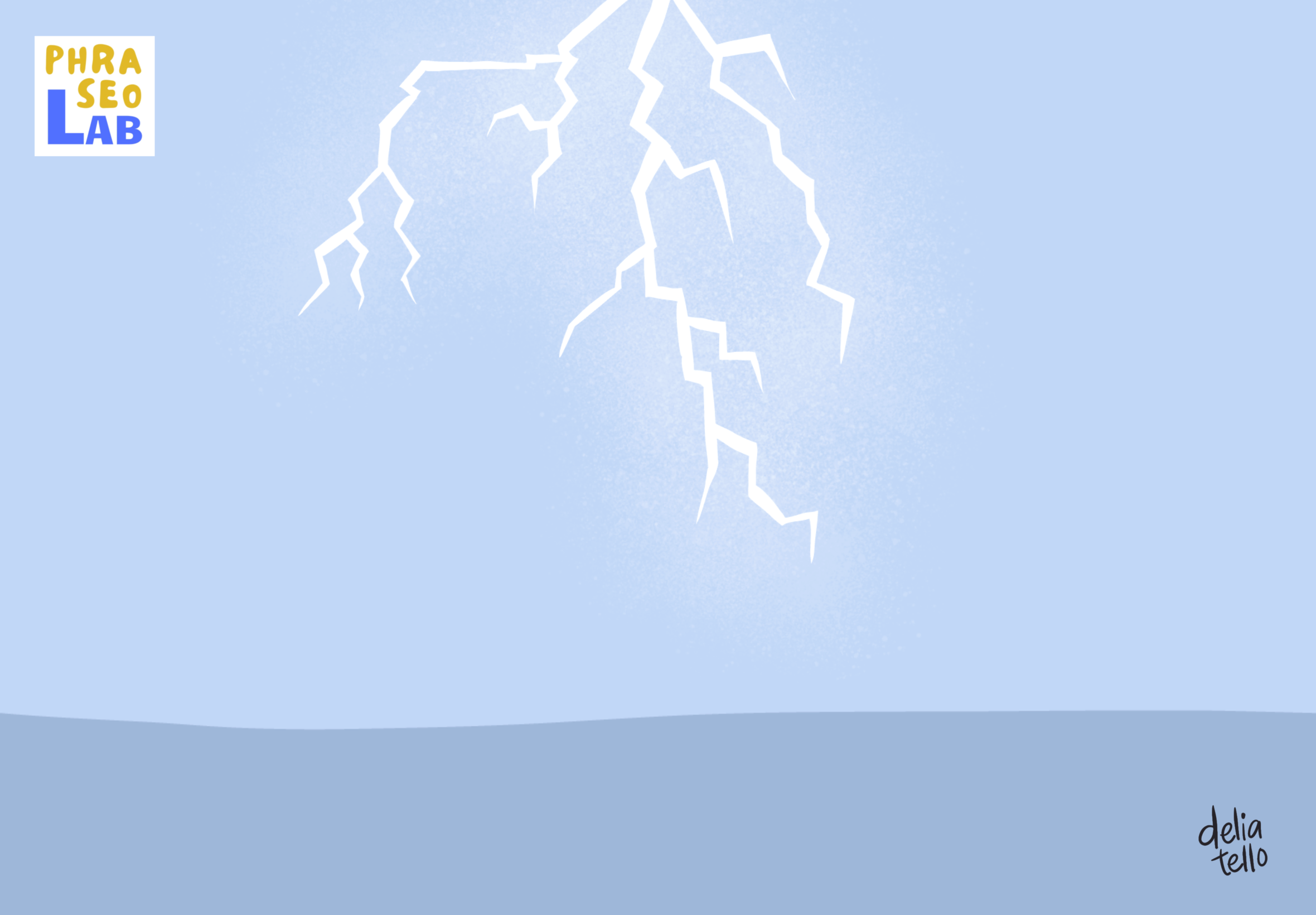
völlig unerwartet, plötzlich, unvorhersehbar
 out of the blue
out of the blue
which happens unexpectedly
 (som) ud af det blå
(som) ud af det blå
 στα καλά καθούμενα
στα καλά καθούμενα
 jak grom z jasnego nieba
jak grom z jasnego nieba
 inesperadamente / de la nada
inesperadamente / de la nada
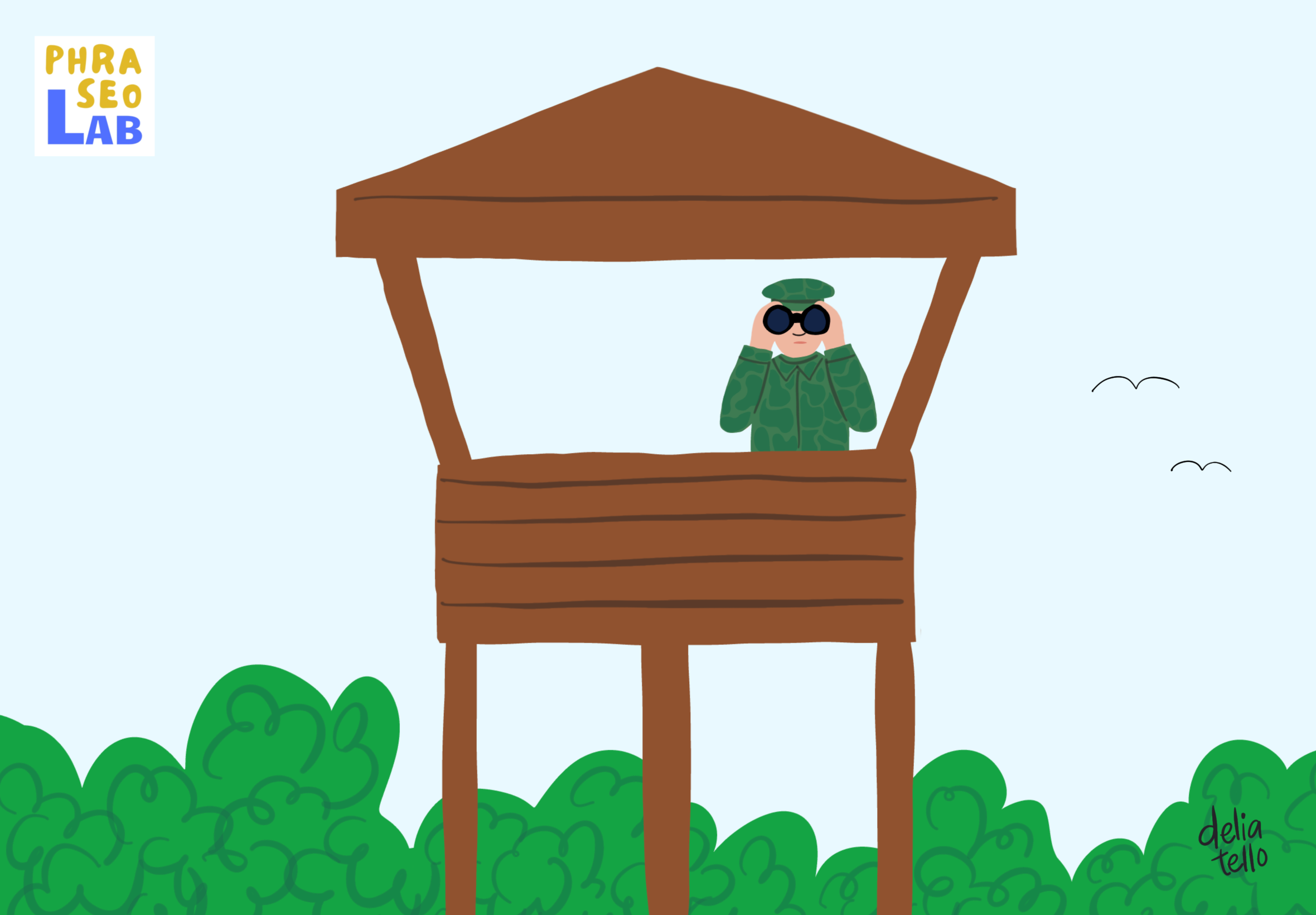
1. (wieder) gesund sein, (wieder) in guter körperlicher Verfassung sein; 2. aufpassen, wachsam sein
 to be / get back on your feet (!)
to be / get back on your feet (!)
to recover from an illness, to be healthy again; to recover after a time of trouble
 at være kommet på benene igen
at være kommet på benene igen
 είμαι καλά στην υγεία μου (μετά από ασθένεια)
είμαι καλά στην υγεία μου (μετά από ασθένεια)
 być w dobrej kondycji / nie być w dobrej kondycji / znów być w dobrej konducji
być w dobrej kondycji / nie być w dobrej kondycji / znów być w dobrej konducji
 volver a estar al 100% / recuperarse
volver a estar al 100% / recuperarse
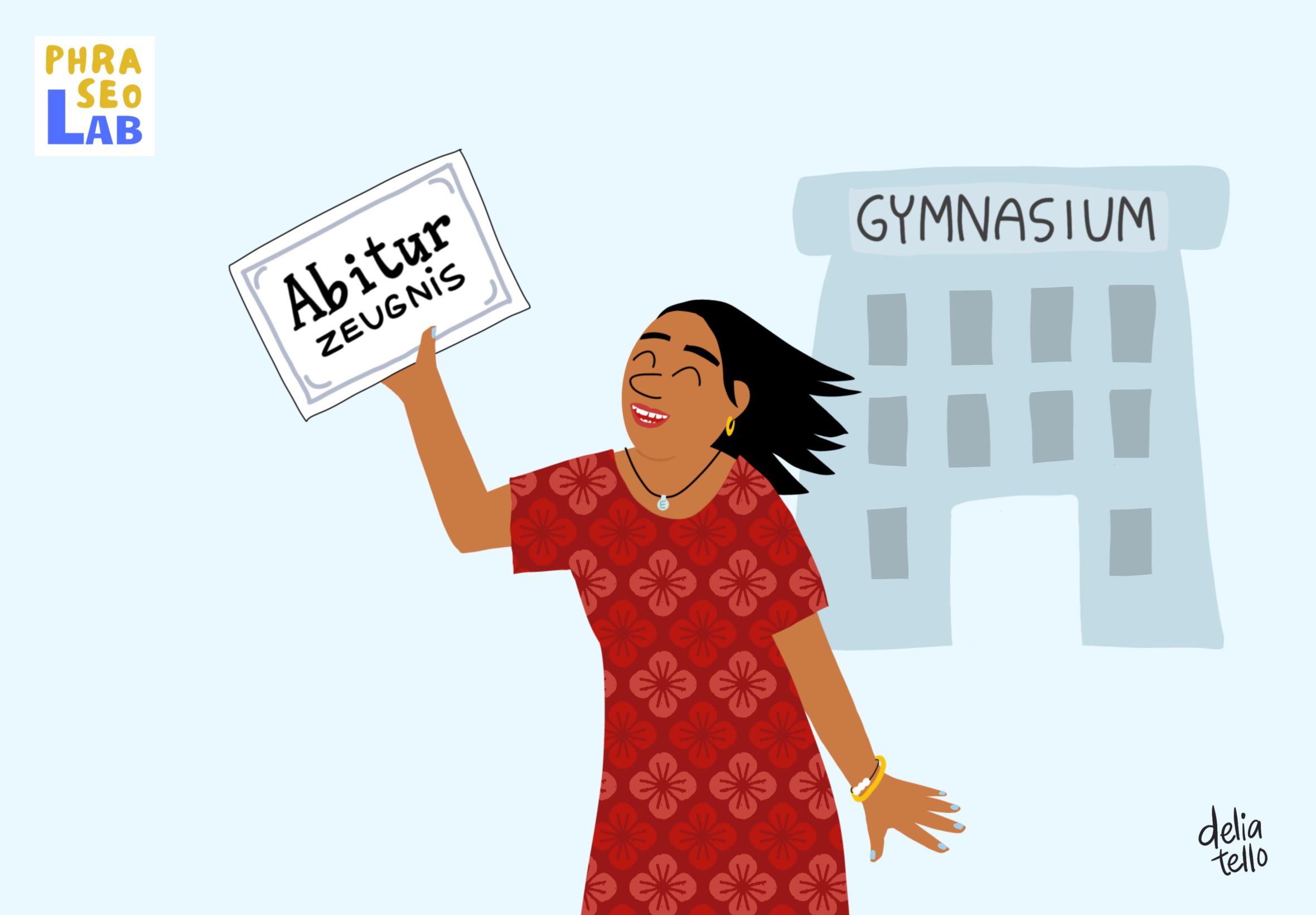
 ≈ to do / sit [one's] A levels
≈ to do / sit [one's] A levels
 blive student
blive student
 δίνω απολυτήριες εξετάσεις
δίνω απολυτήριες εξετάσεις
 zrobić maturę
zrobić maturę
 presentarse al examen de bachillerato
presentarse al examen de bachillerato
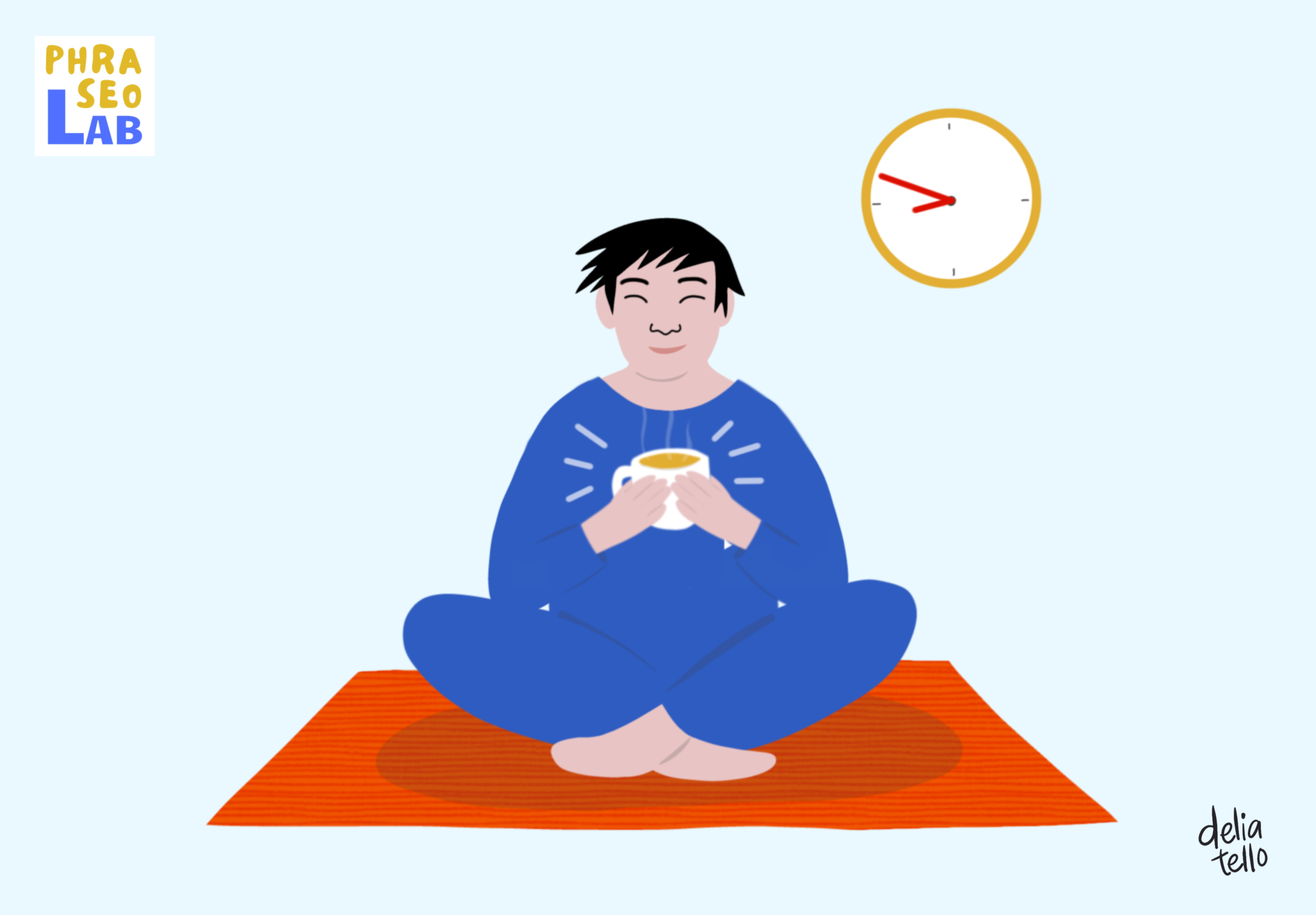
wird als Rat verwendet. Man soll geduldig beobachten, wie sich eine Lage entwickelt. "Warten wir es ab!", "Es wird bestimmt nicht so schlimm!"
 Wait and see
Wait and see
used to tell someone that they must stay calm or not worry while waiting to find out what happens
 (Bare) Vent og se!
(Bare) Vent og se!
 Ας κάνουμε υπομονή, βλέποντας και κάνοντας
Ας κάνουμε υπομονή, βλέποντας και κάνοντας
 Trzeba odczekać! Spokojnie poczekajmy, jak się sprawa rozwinie!
Trzeba odczekać! Spokojnie poczekajmy, jak się sprawa rozwinie!
 Tranquilo(a)/ Paciencia
Tranquilo(a)/ Paciencia
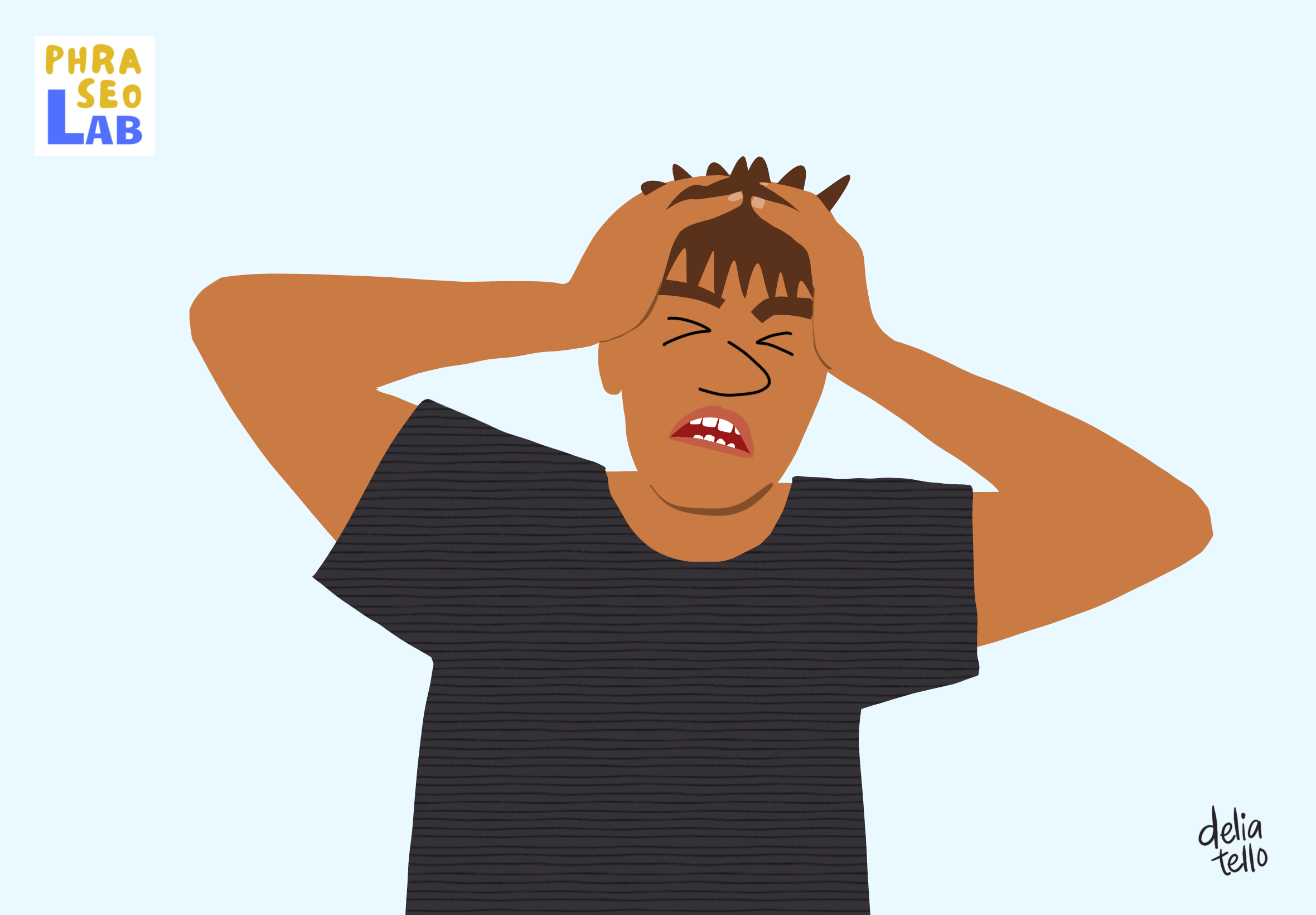
wird verwendet, um positive oder negative Überraschung auszudrücken. "Ach du lieber Gott!"
 Oh, my Godness
Oh, my Godness
used to express how surprised you are
 Du godeste!
Du godeste!
 Αχ Θεέ μου!
Αχ Θεέ μου!
 O mój Boże!
O mój Boże!
 ¡Madre mía! /¡Cielo santo!
¡Madre mía! /¡Cielo santo!

1. zwischen Personen, Gruppen keinen Unterschied machen; 2. Dinge oder Menschen undifferenziert betrachten, (zu stark) verallgemeinern
 to tar everyone with the same brush (!)
to tar everyone with the same brush (!)
to think that someone has the same flaws or faults as other people in a group
 skære alle / alt over én kam
skære alle / alt over én kam
 τους/τα βάζω όλους/όλα σ' ένα καζάνι
τους/τα βάζω όλους/όλα σ' ένα καζάνι
 wrzucać wszystkich do jednego worka
wrzucać wszystkich do jednego worka
 meter a todo el mundo en el mismo saco
meter a todo el mundo en el mismo saco
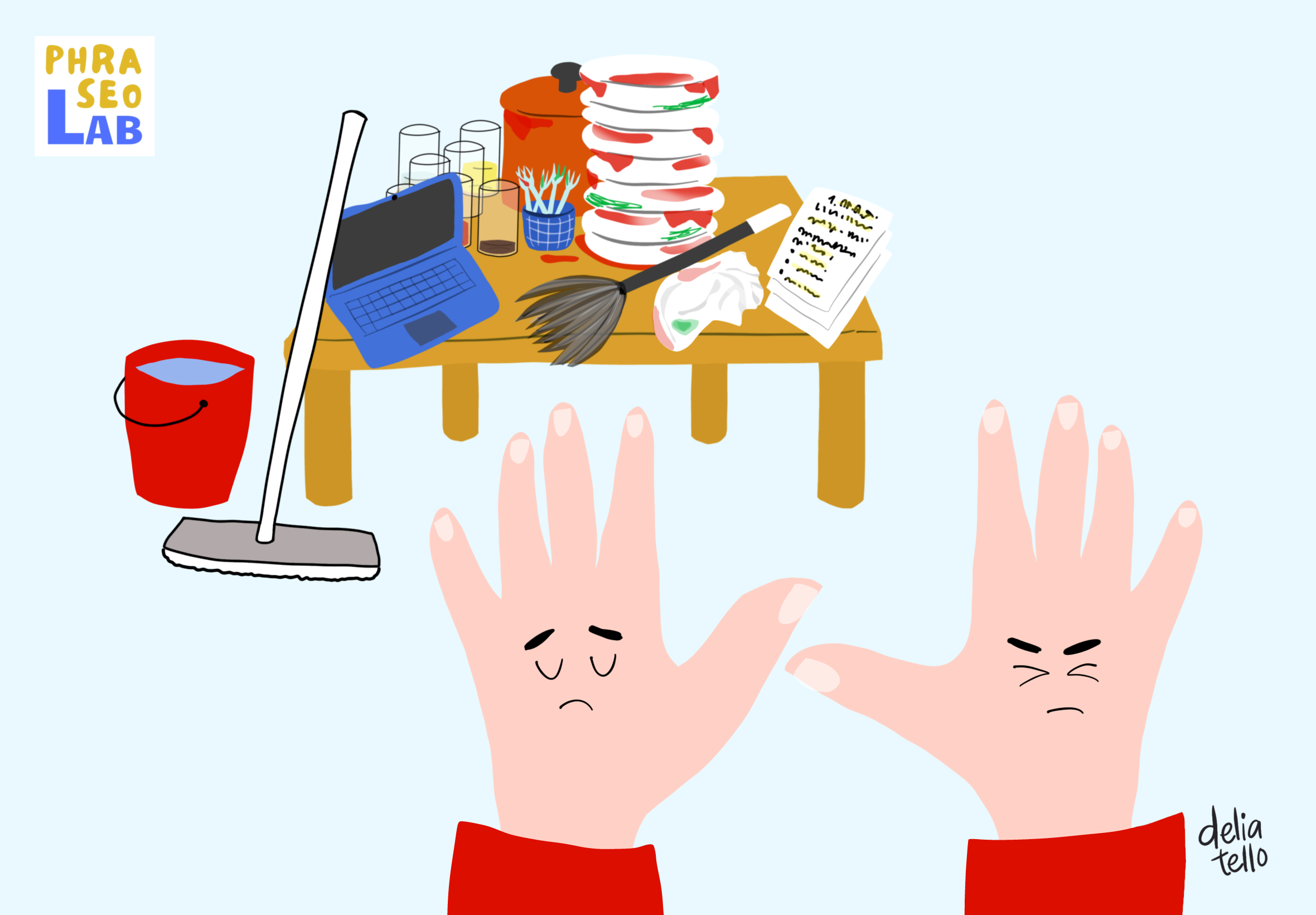
viel Arbeit haben, sehr beschäftigt sein
 to have your hands full
to have your hands full
to be extremely busy and not have time to do other things
 have begge hænder fulde; have nok at gøre
have begge hænder fulde; have nok at gøre
 πνίγομαι στη δουλειά
πνίγομαι στη δουλειά
 mieć ręce pełne roboty
mieć ręce pełne roboty
 estar muy ocupado
estar muy ocupado
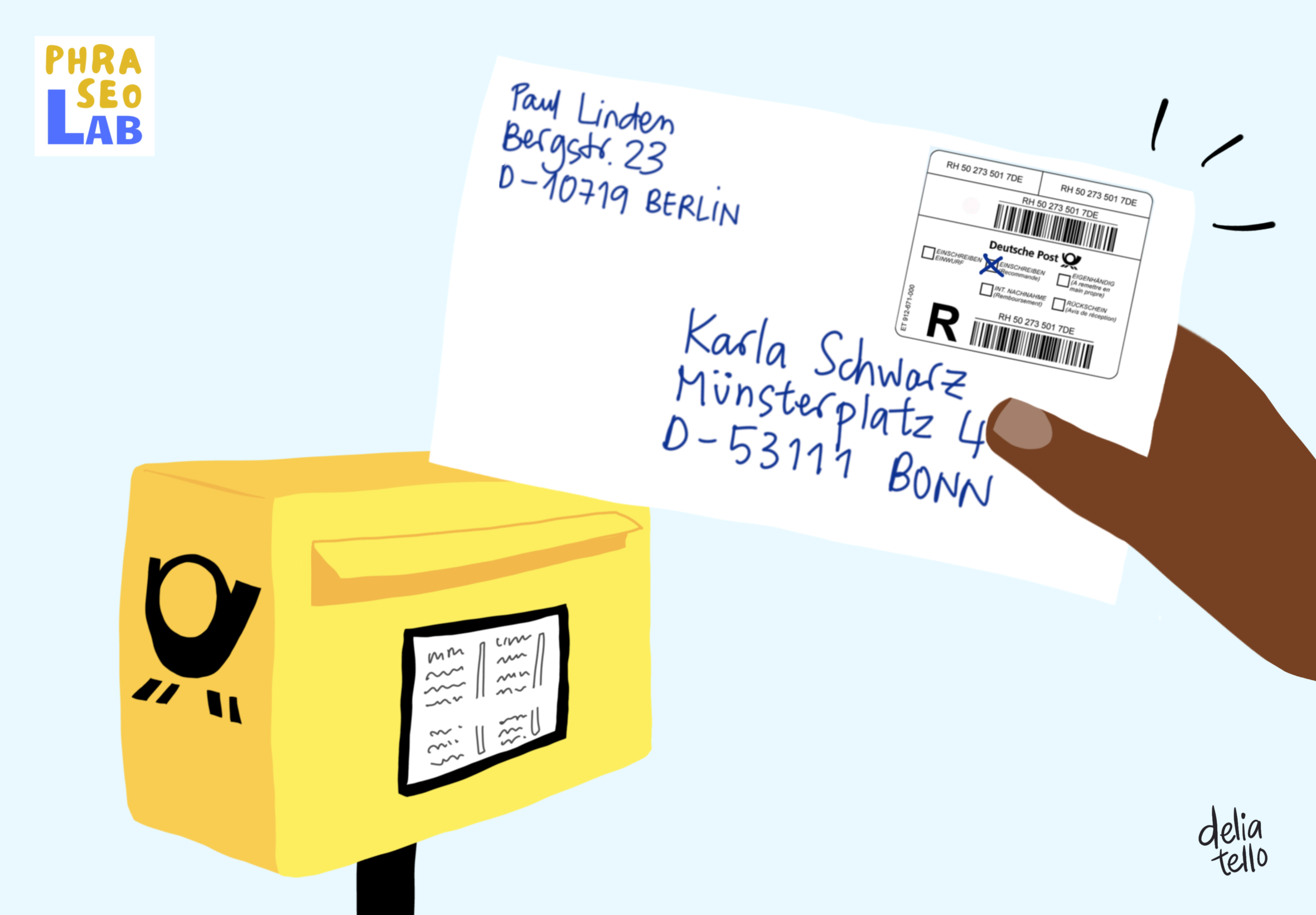
 to send something by registered mail / post
to send something by registered mail / post
 sende som anbefalet post
sende som anbefalet post
 στέλνω συστημένο / συστημένη επιστολή
στέλνω συστημένο / συστημένη επιστολή
 wysłać jako list / przesyłkę poleconą
wysłać jako list / przesyłkę poleconą
 enviar por correo certificado
enviar por correo certificado
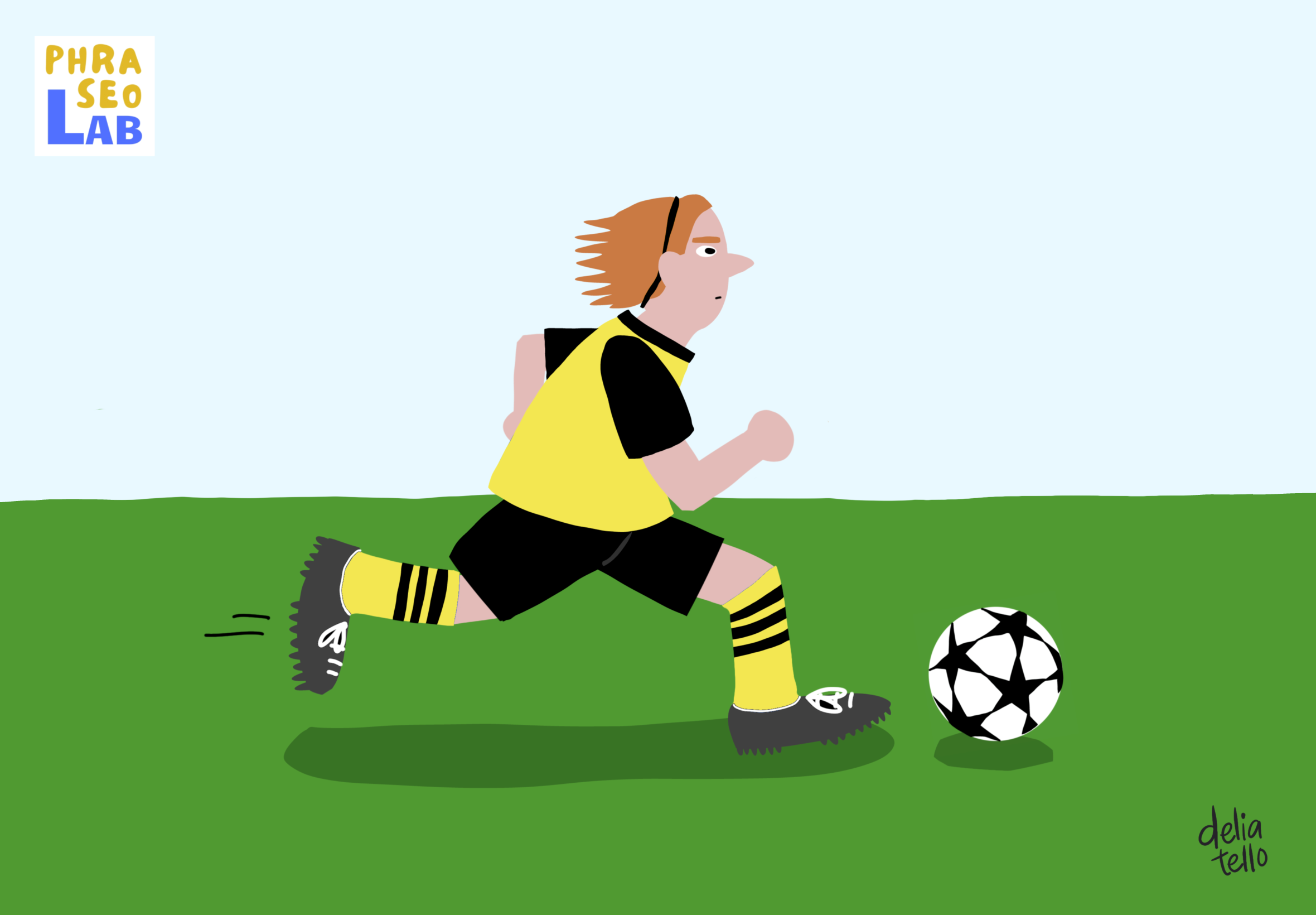
aktiv beteiligt bleiben, sich ständig über die Entwicklungen informieren
 to be on the ball
to be on the ball
to understand and be aware of what is happening and be able to react quickly
 have bolden, være aktiv / på dupperne
have bolden, være aktiv / på dupperne
 συνεχίζω τις προσπάθειές μου
συνεχίζω τις προσπάθειές μου
 pozostawać w grze, trzyma rękę na pulsie
pozostawać w grze, trzyma rękę na pulsie
 estar al tanto / estar a la última
estar al tanto / estar a la última
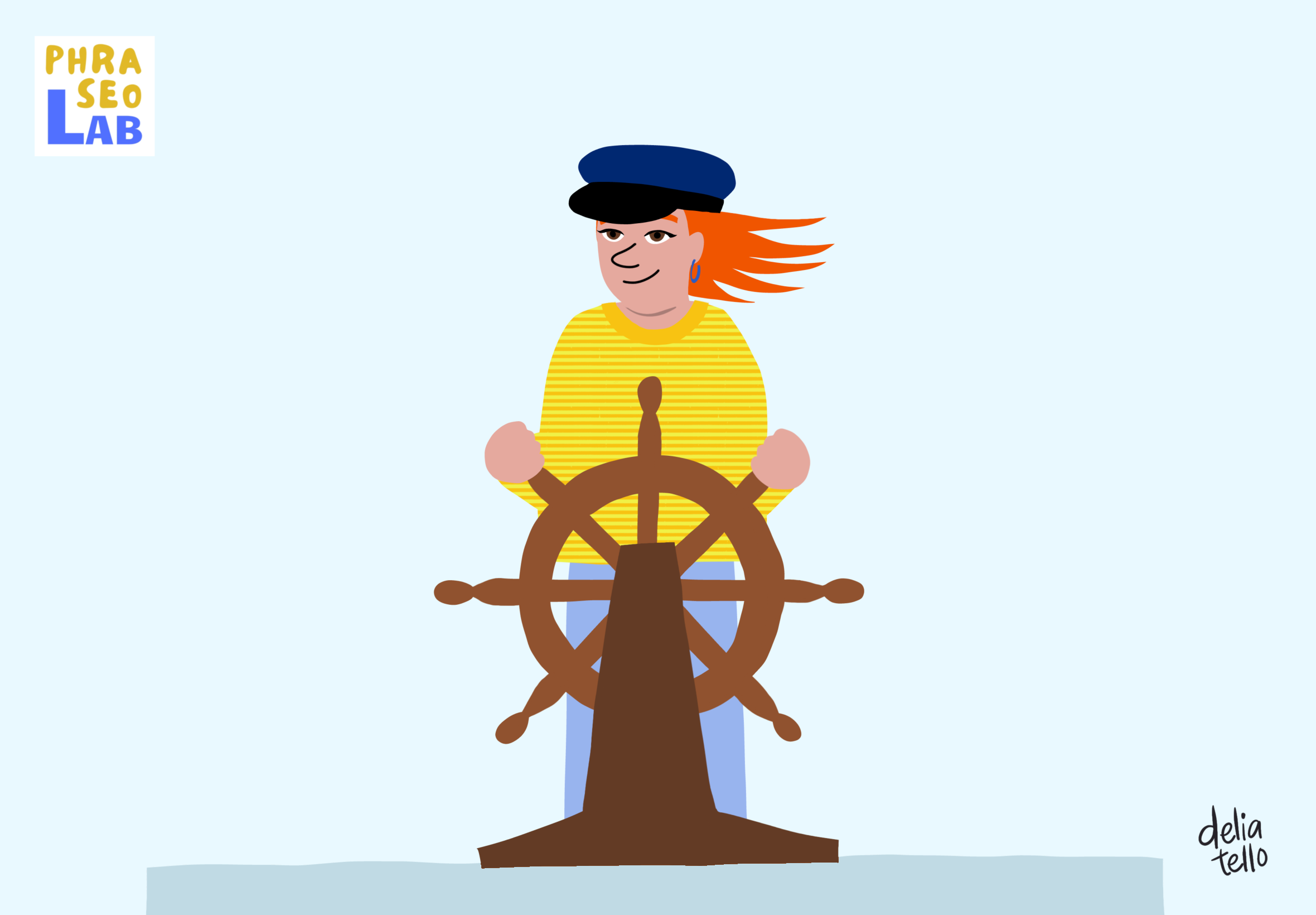
die Führung / Leitung / Macht haben
 to be at the helm
to be at the helm
to control or lead a company or project
 stå ved roret
stå ved roret
 είμαι / παραμένω στην εξουσία
είμαι / παραμένω στην εξουσία
 być u steru, rządzić czymś
być u steru, rządzić czymś
 estar en el poder / llevar la voz cantante
estar en el poder / llevar la voz cantante
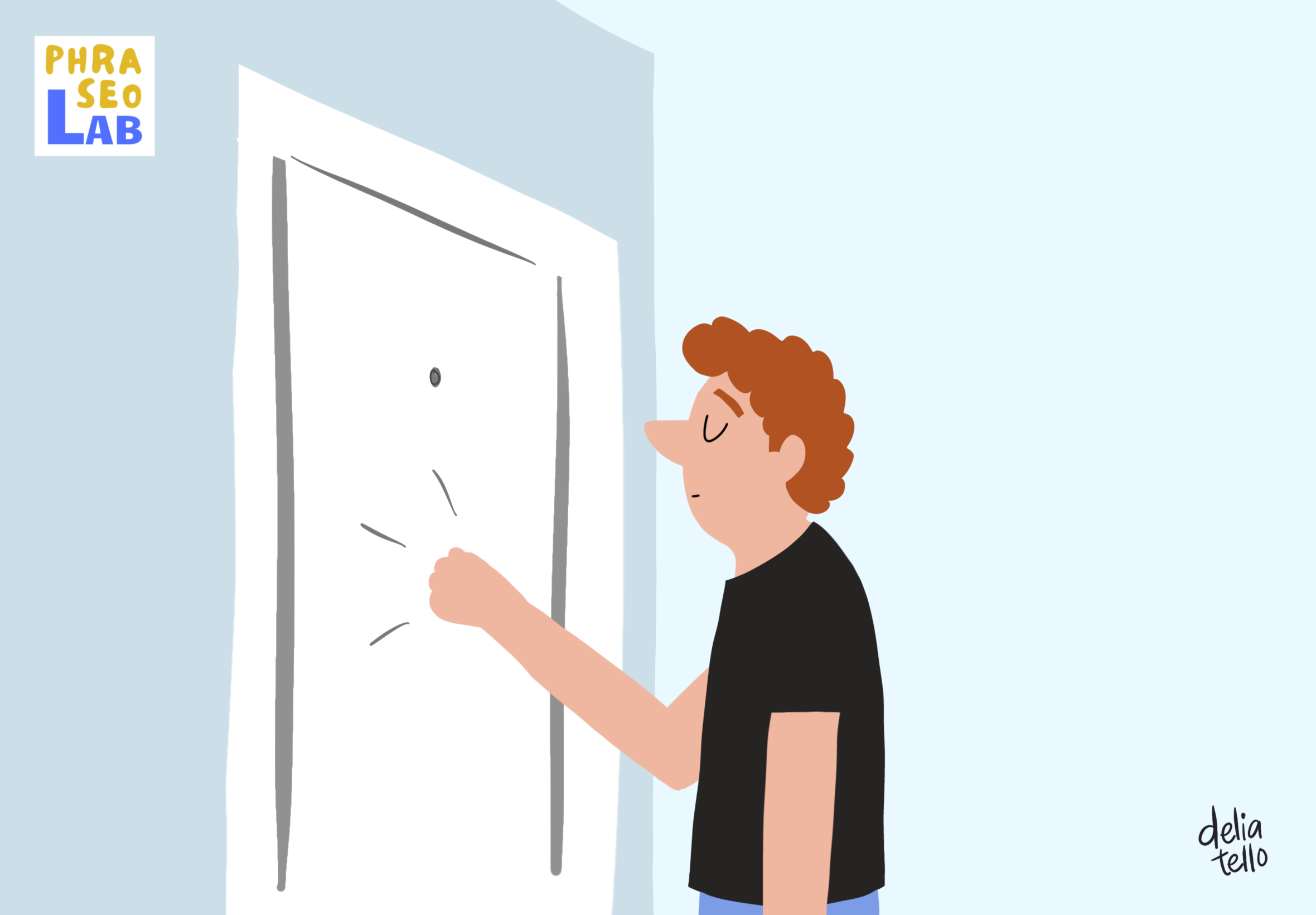
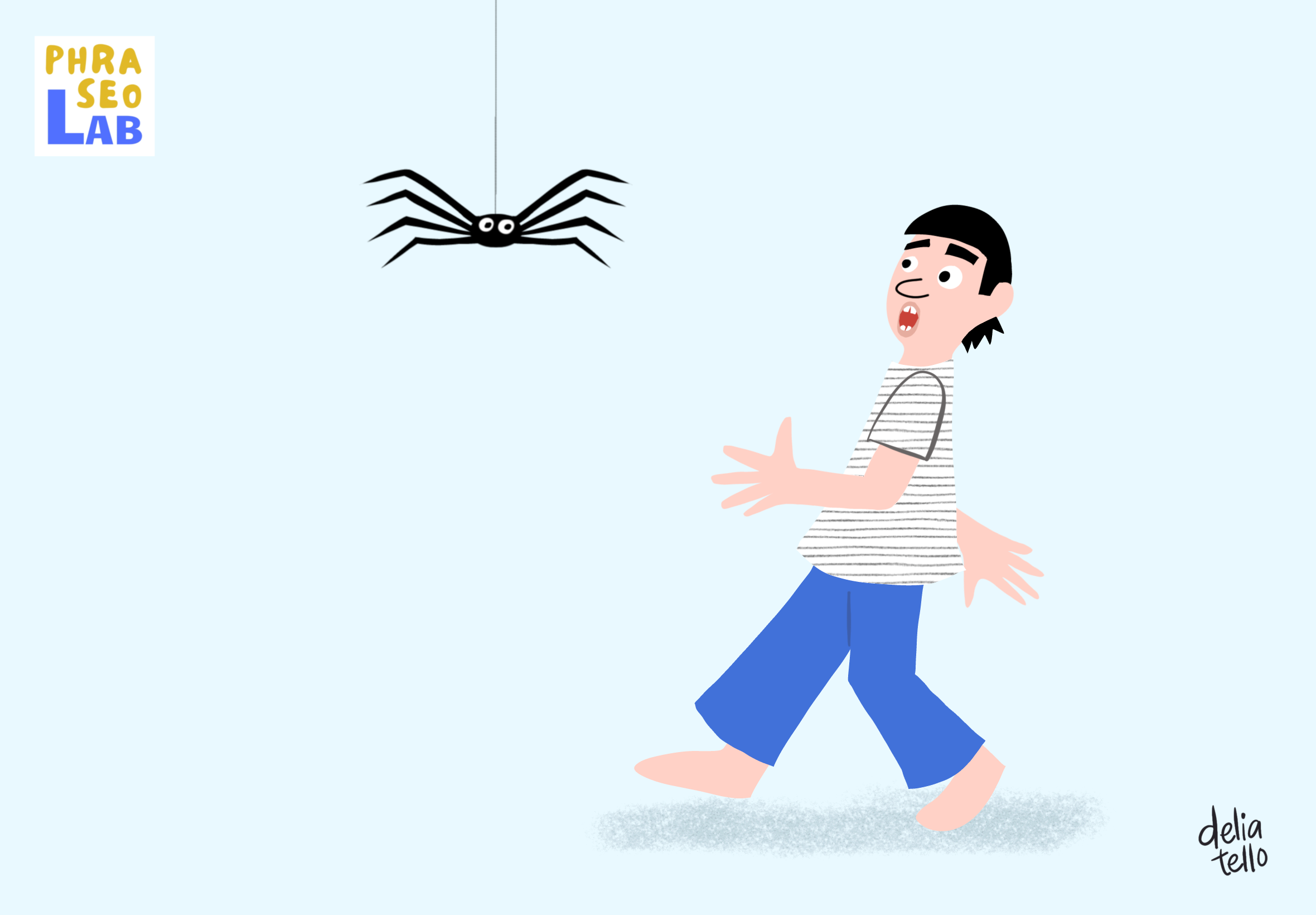
 to be afraid of/to have (no) fear of somebody / something
to be afraid of/to have (no) fear of somebody / something
 være bange for
være bange for
 φοβάμαι κάποιον/κάποια/κάτι
φοβάμαι κάποιον/κάποια/κάτι
 bać się czegoś
bać się czegoś
 tener miedo de algo
tener miedo de algo
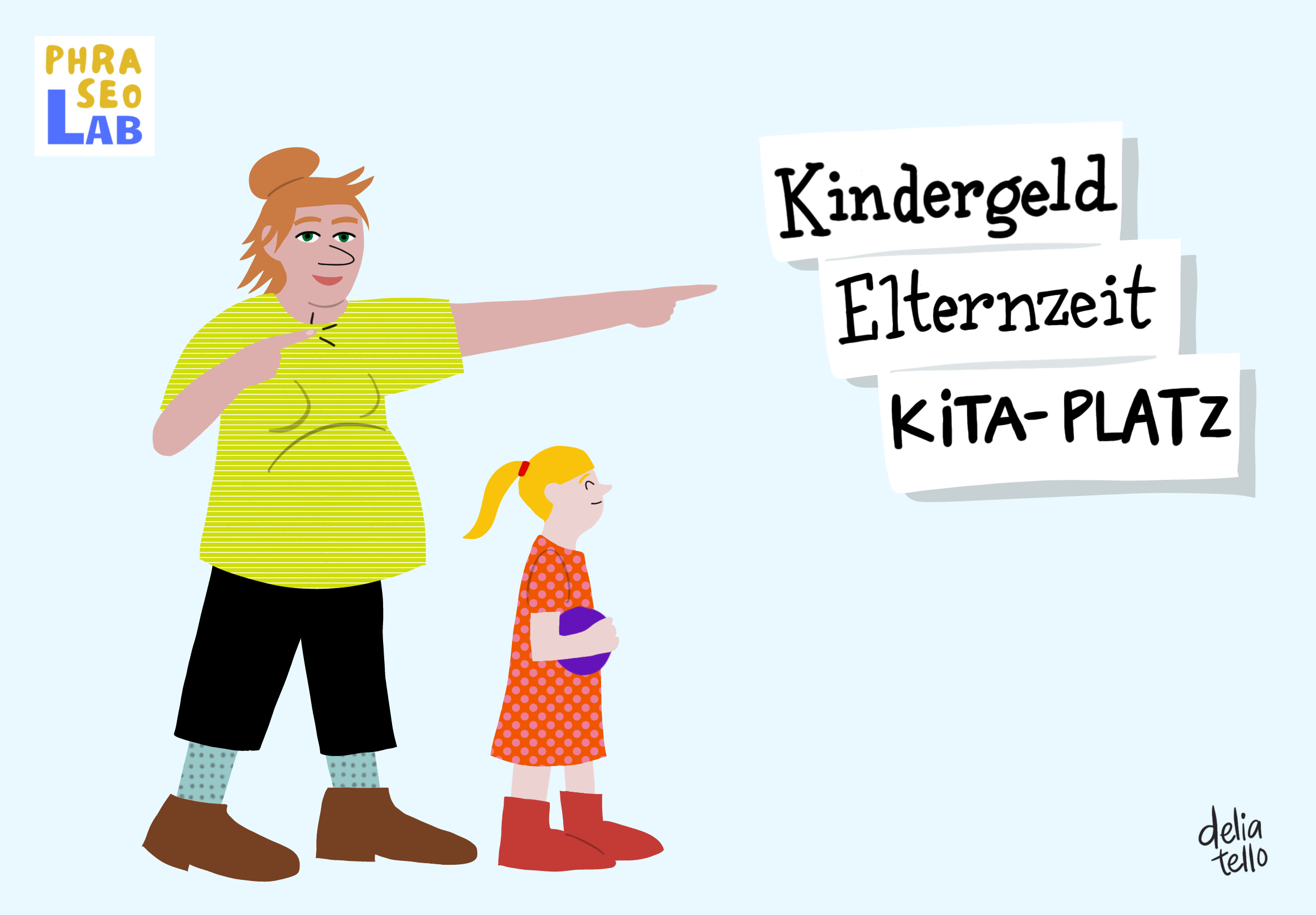
 to be entitled to something
to be entitled to something
 være berettiget til noget
være berettiget til noget
 δικαιούμαι κάτι
δικαιούμαι κάτι
 mieć prawo do czegoś
mieć prawo do czegoś
 tener derecho a algo
tener derecho a algo
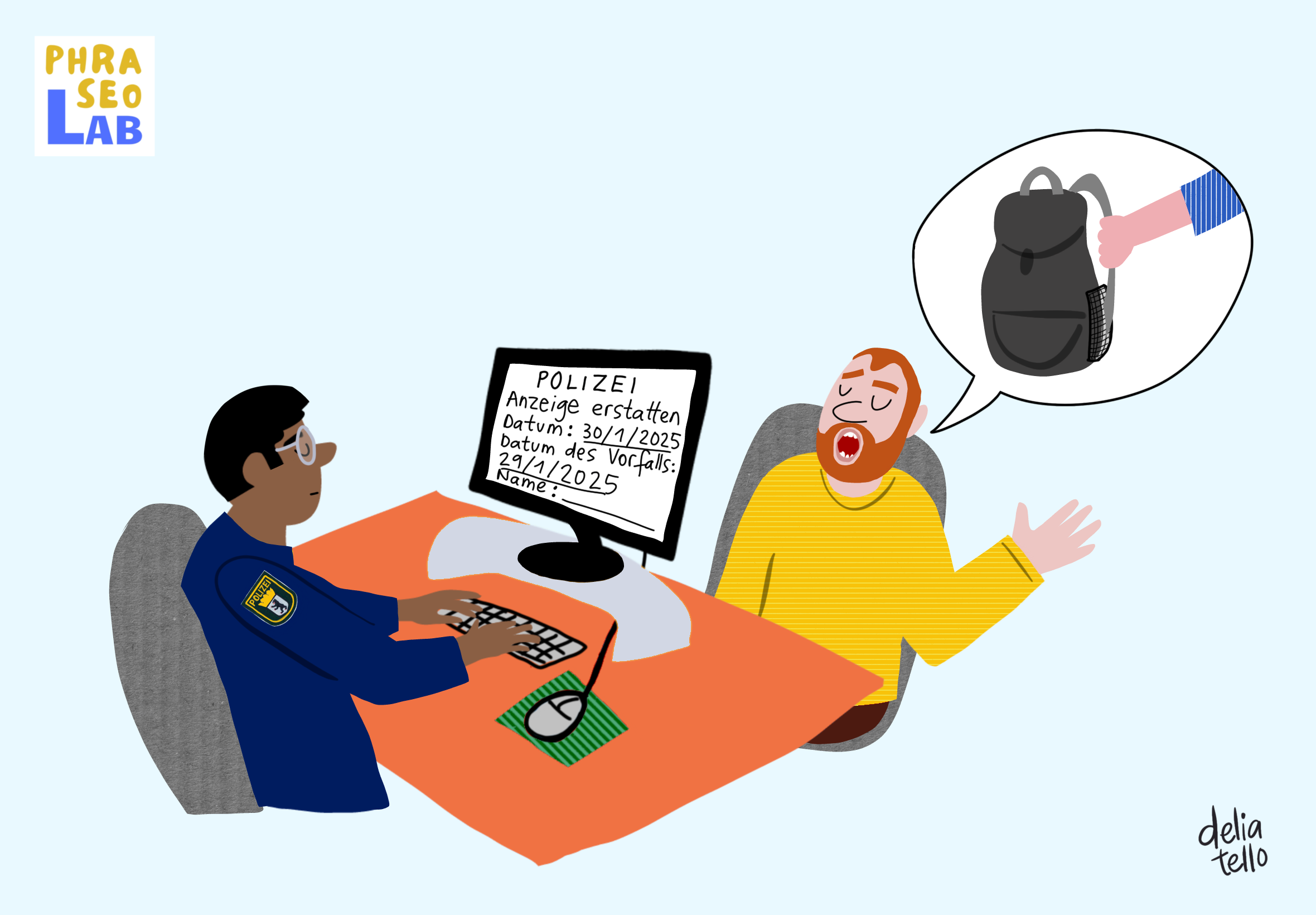
 to file a complaint
to file a complaint
 anmelde, foretage anmeldelse
anmelde, foretage anmeldelse
 καταθέτω μήνυση
καταθέτω μήνυση
 składać doniesienie
składać doniesienie
 poner una denuncia
poner una denuncia
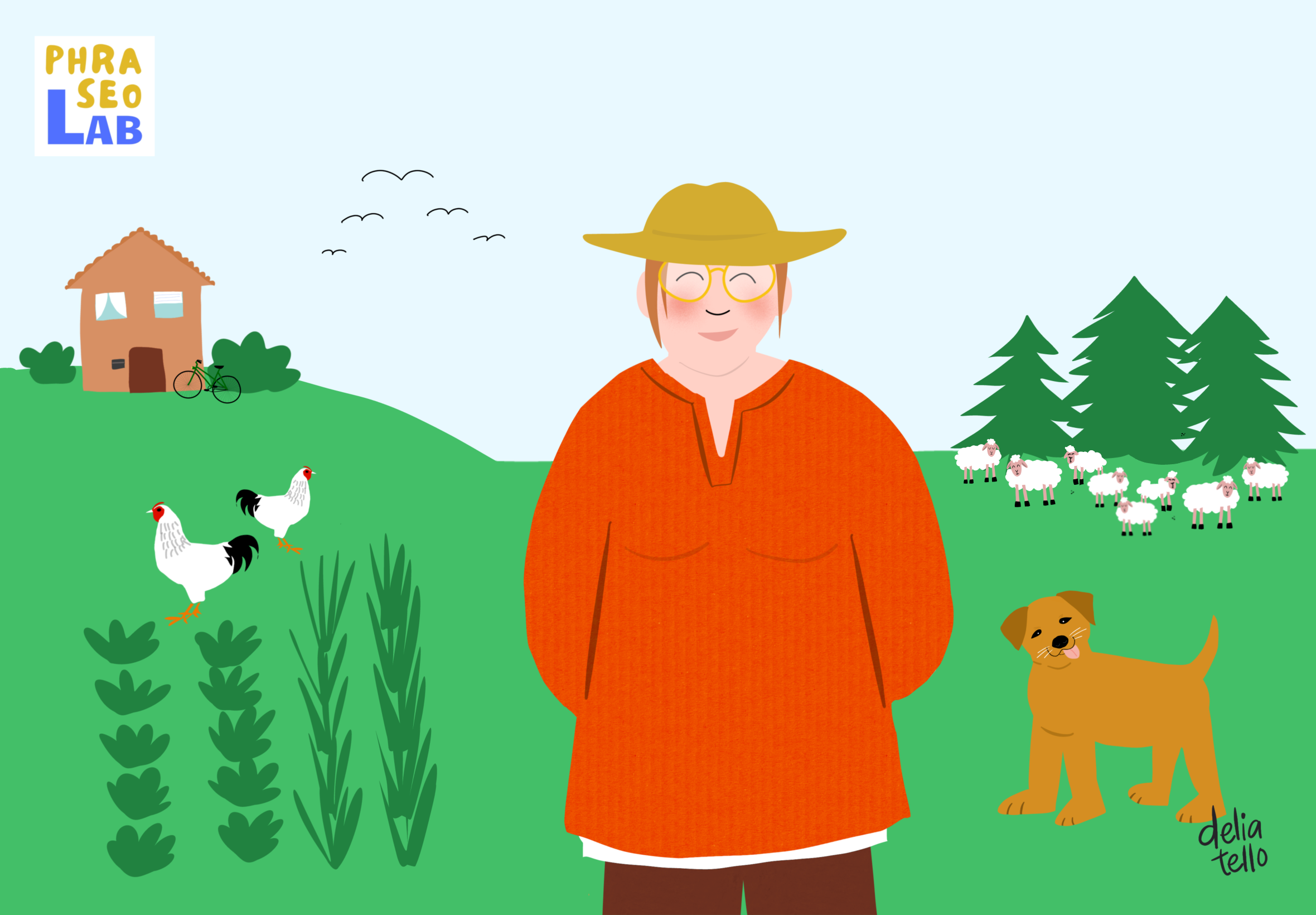
 to live in the country(side)
to live in the country(side)
 bo på landet
bo på landet
 μένω στην επαρχία / εξοχή
μένω στην επαρχία / εξοχή
 mieszkać na wsi
mieszkać na wsi
 vivir en el campo
vivir en el campo
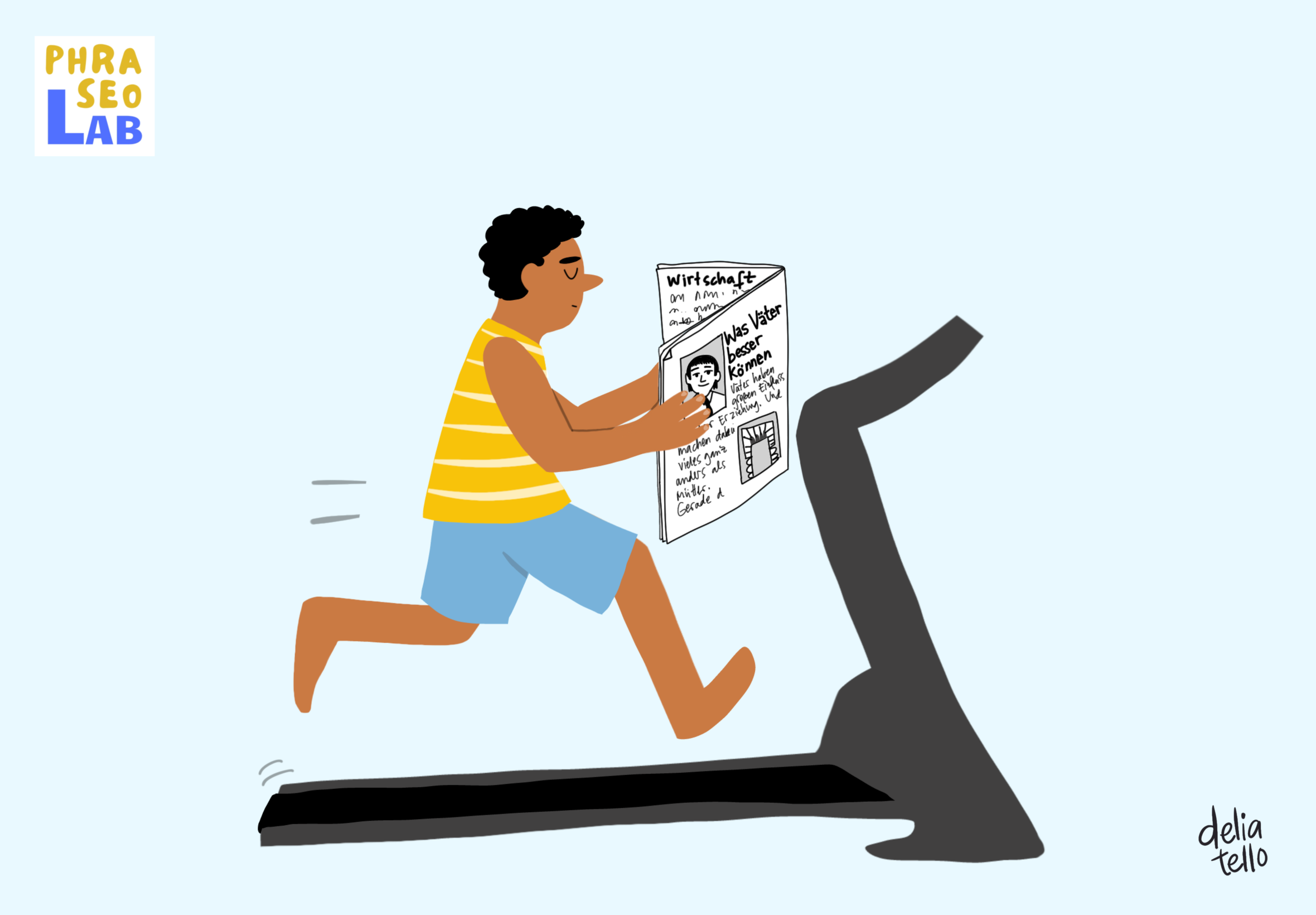
über den aktuellen Stand einer Situation informieren / informiert sein
 to be up to date
to be up to date
to be modern or recent; to include the latest developments or be informed about the latest news
 holde / være opdateret
holde / være opdateret
 κρατώ κάποιον / κάποια ενήμερο/η (για τα τρέχοντα ζητήματα)
κρατώ κάποιον / κάποια ενήμερο/η (για τα τρέχοντα ζητήματα)
 informować kogoś / być na bieżąco
informować kogoś / być na bieżąco
 estar al día
estar al día
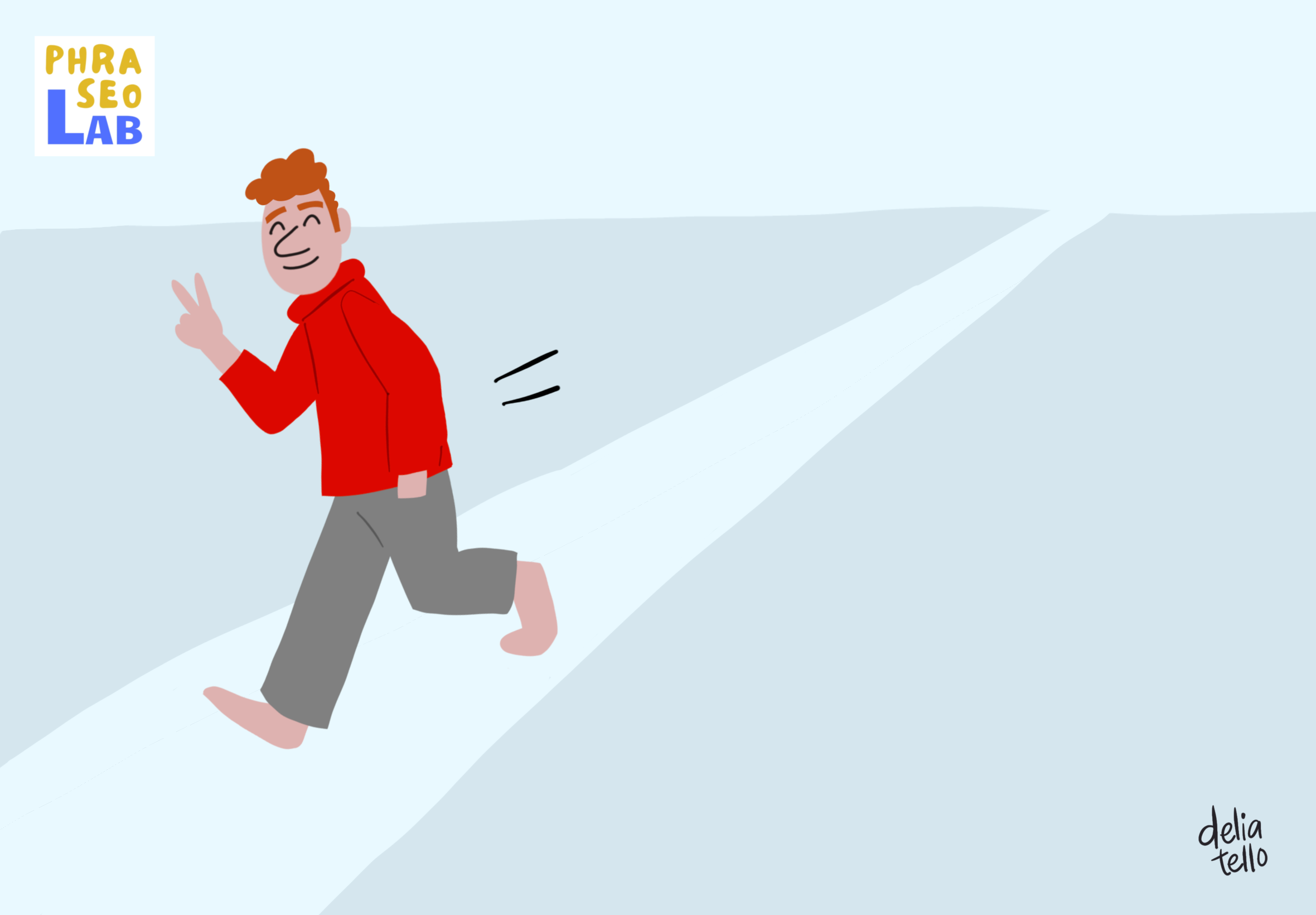
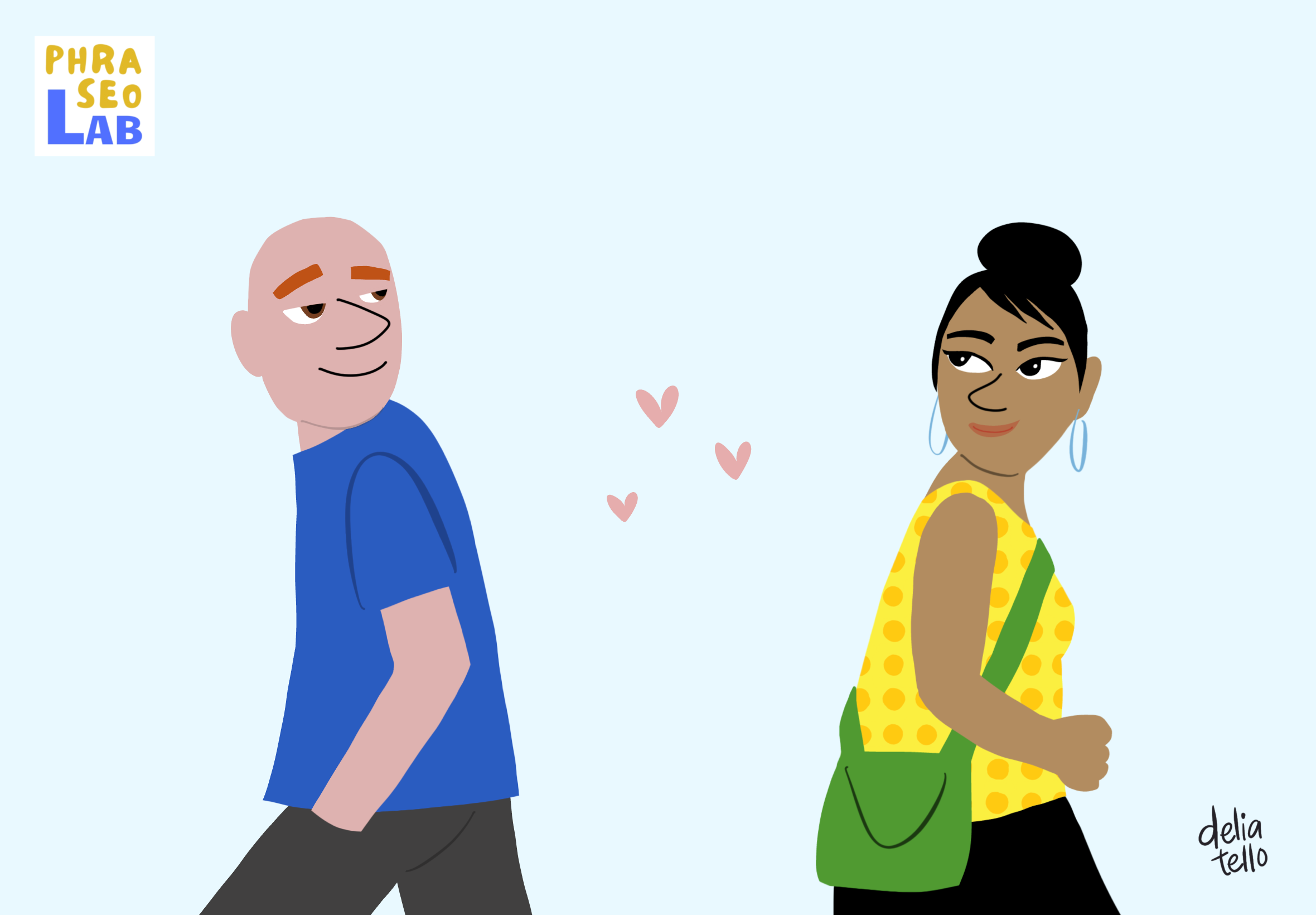
(schon) bei erster Betrachtung; ohne genaue Überprüfung / Überlegung; ein kurzer Blick genügt, um ...
 at first sight
at first sight
when you meet someone or see something for the first time; when you have an initial impression or opinion about something / somebody, which might be different from what you learn later
 ved første blik
ved første blik
 με την πρώτη ματιά
με την πρώτη ματιά
 na pierwszy rzut oka
na pierwszy rzut oka
 a primera vista / a simple vista
a primera vista / a simple vista
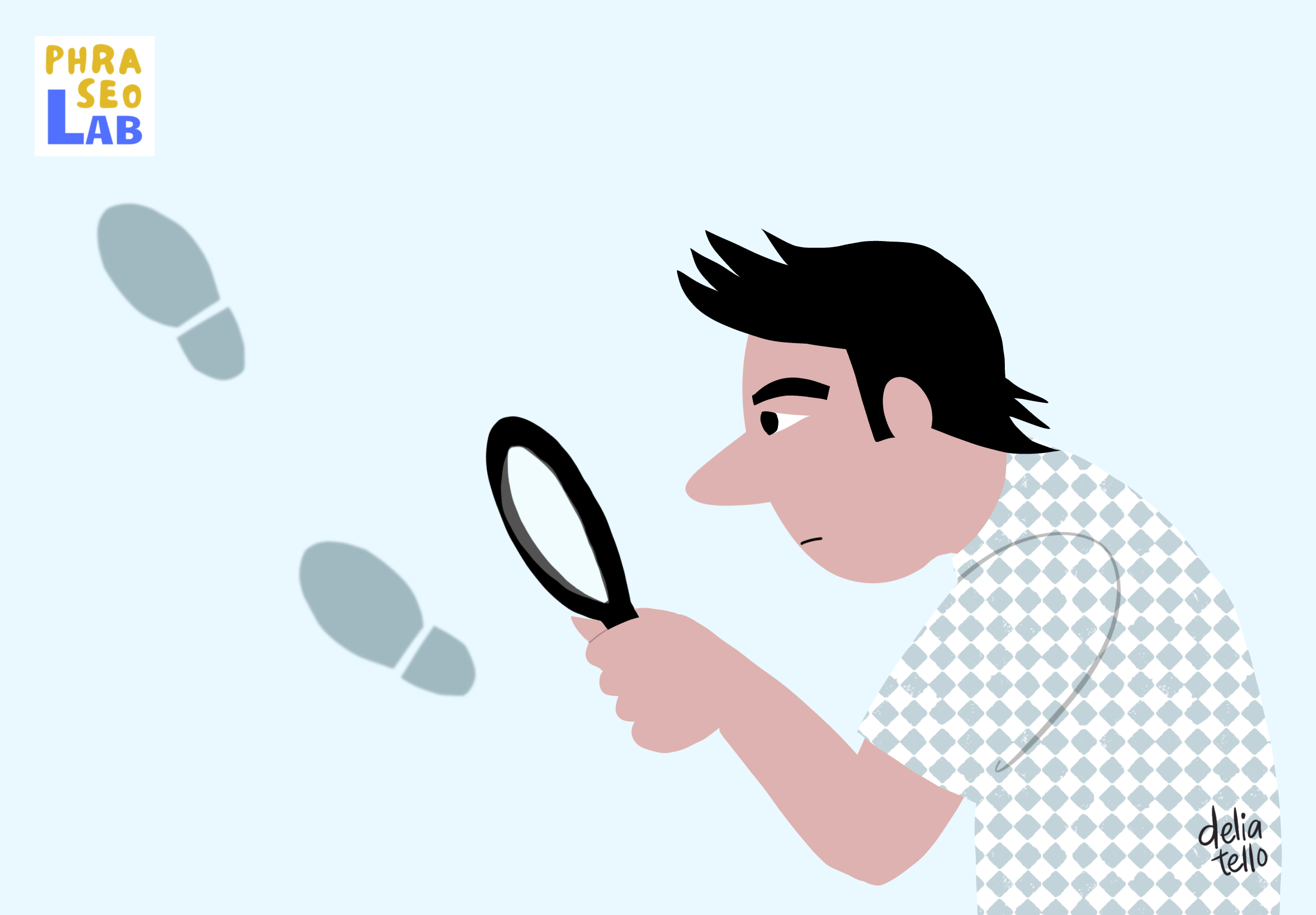
1. jemand ist jemandem auf der Spur: jemand verfolgt jemanden oder versucht, seine Handlungen zu rekonstruieren, 2. jemand ist einer Sache auf der Spur: jemand hat Hinweise, um ein Verbrechen, einen Skandal aufzudecken oder eine Antwort auf eine Frage zu finden
 to be on the trail of somebody / something (!)
to be on the trail of somebody / something (!)
to try to find somebody or to search for information about where something is
 være på sporet (af)
være på sporet (af)
 βρίσκομαι στα ίχνη κάποιου / κάποιας
βρίσκομαι στα ίχνη κάποιου / κάποιας
 być na tropie
być na tropie
 estar / andar tras la pista/rastro de alguien
estar / andar tras la pista/rastro de alguien
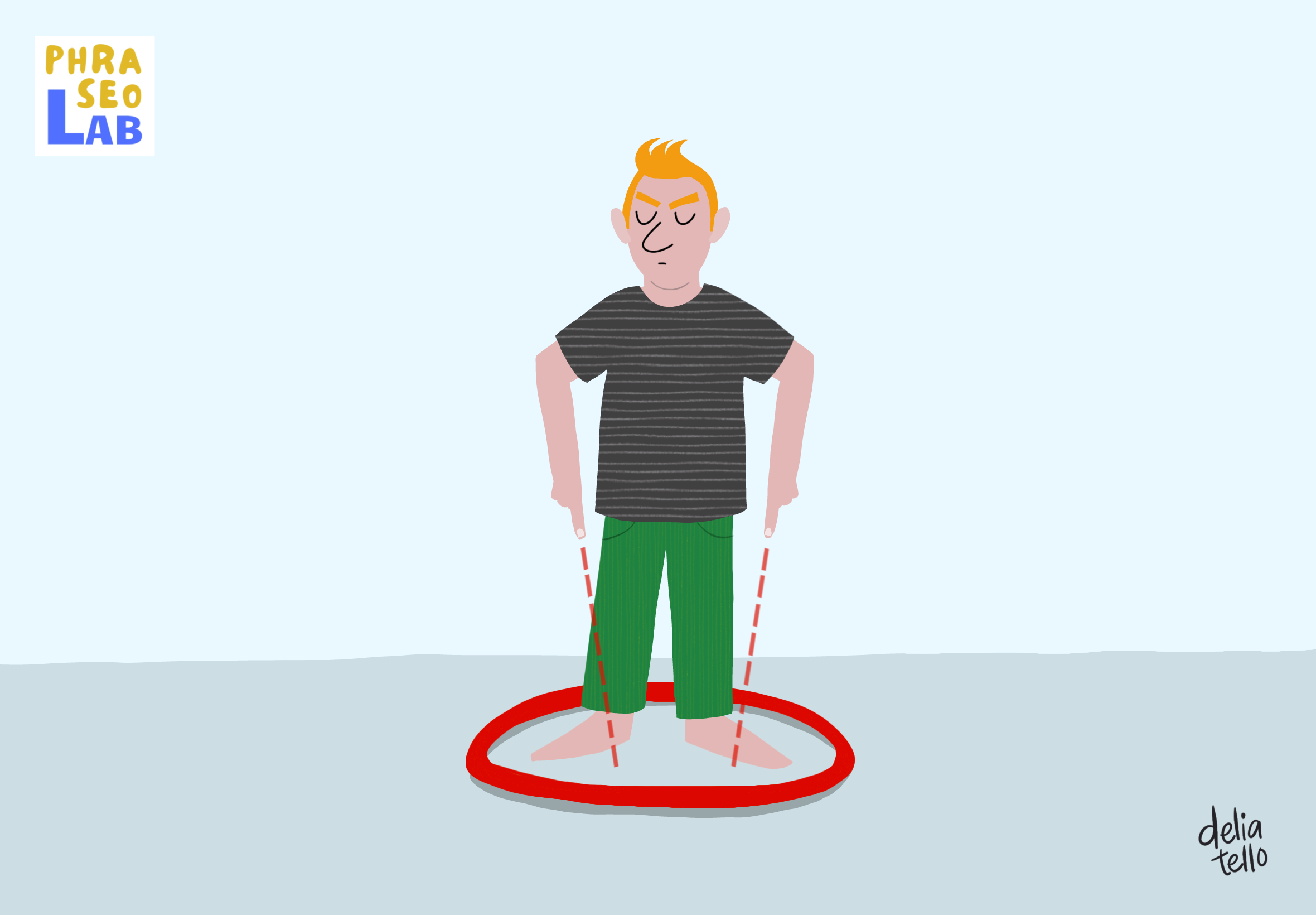
im gleichen Augenblick; unverzüglich, sofort
 on the spot (!)
on the spot (!)
1. where something is happening; 2. immediately
 på stedet
på stedet
 αμέσως
αμέσως
 natchmiast, z miejsca
natchmiast, z miejsca
 en el acto
en el acto
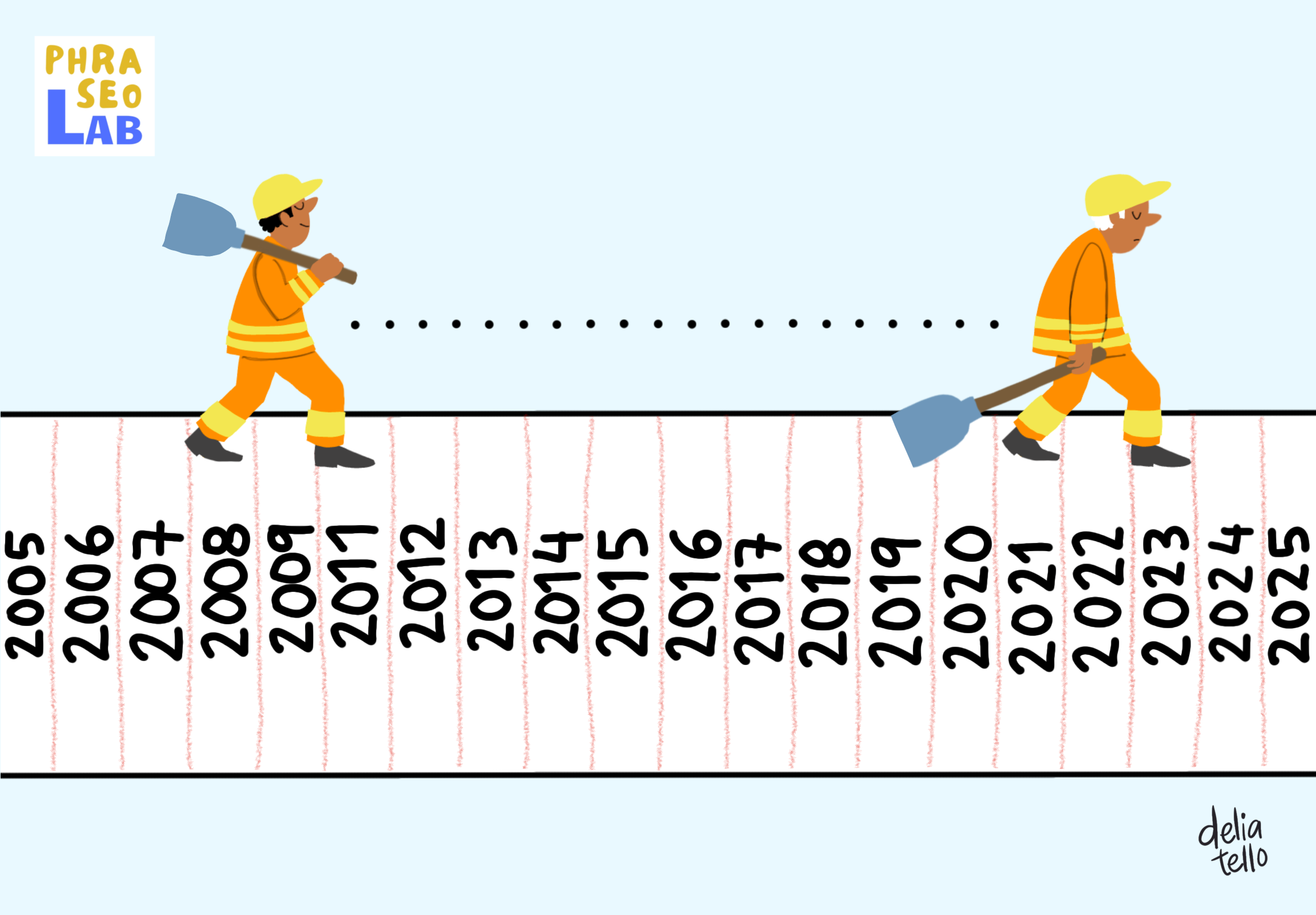
langfristig, über eine längere Zeit
 in the long run
in the long run
in the longer term; at a point in time that is still far in the future
 i det lange løb
i det lange løb
 για μεγάλο χρονικό διάστημα, μακροπρόθεσμα
για μεγάλο χρονικό διάστημα, μακροπρόθεσμα
 na dłuższą metę
na dłuższą metę
 a largo plazo
a largo plazo
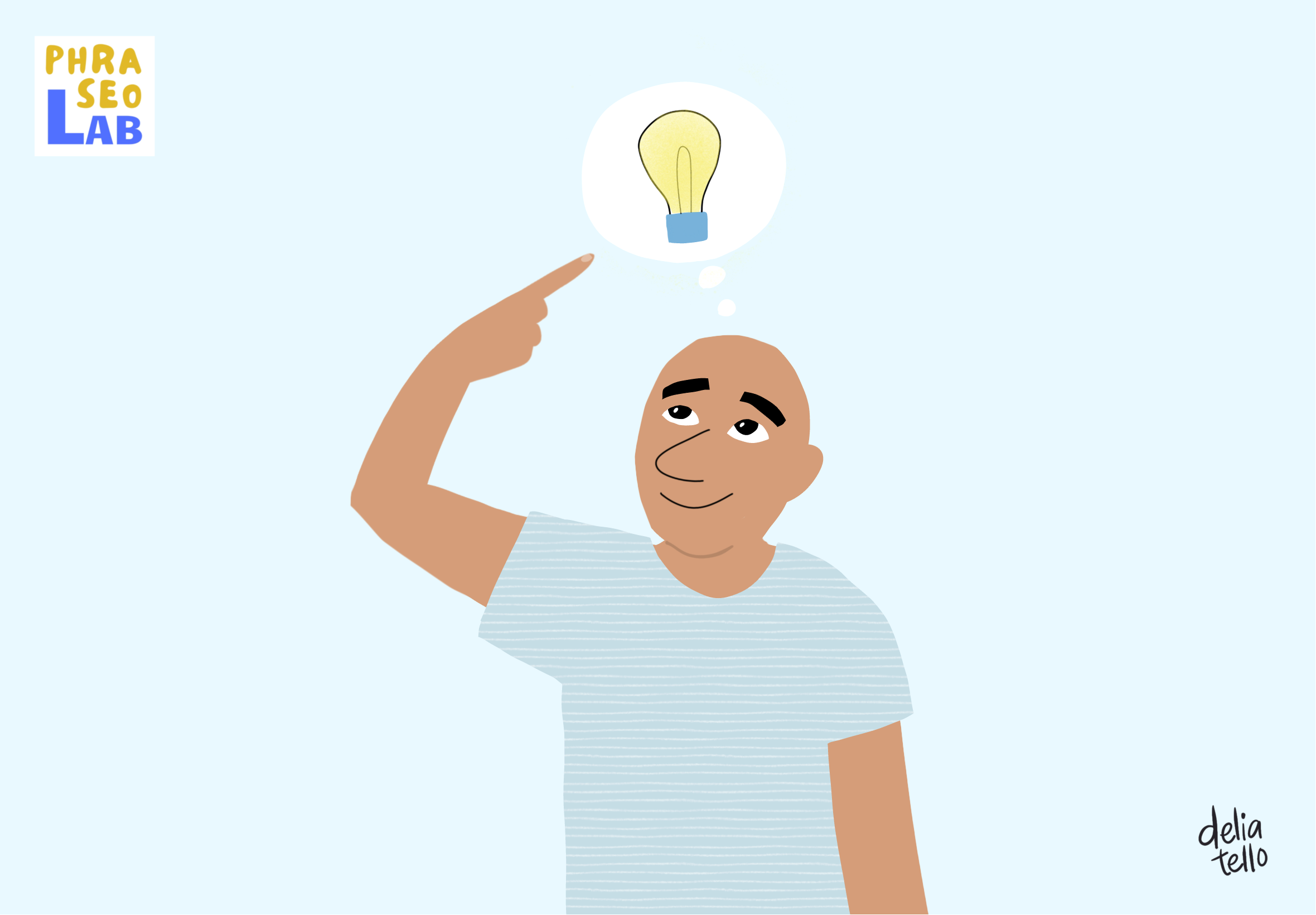
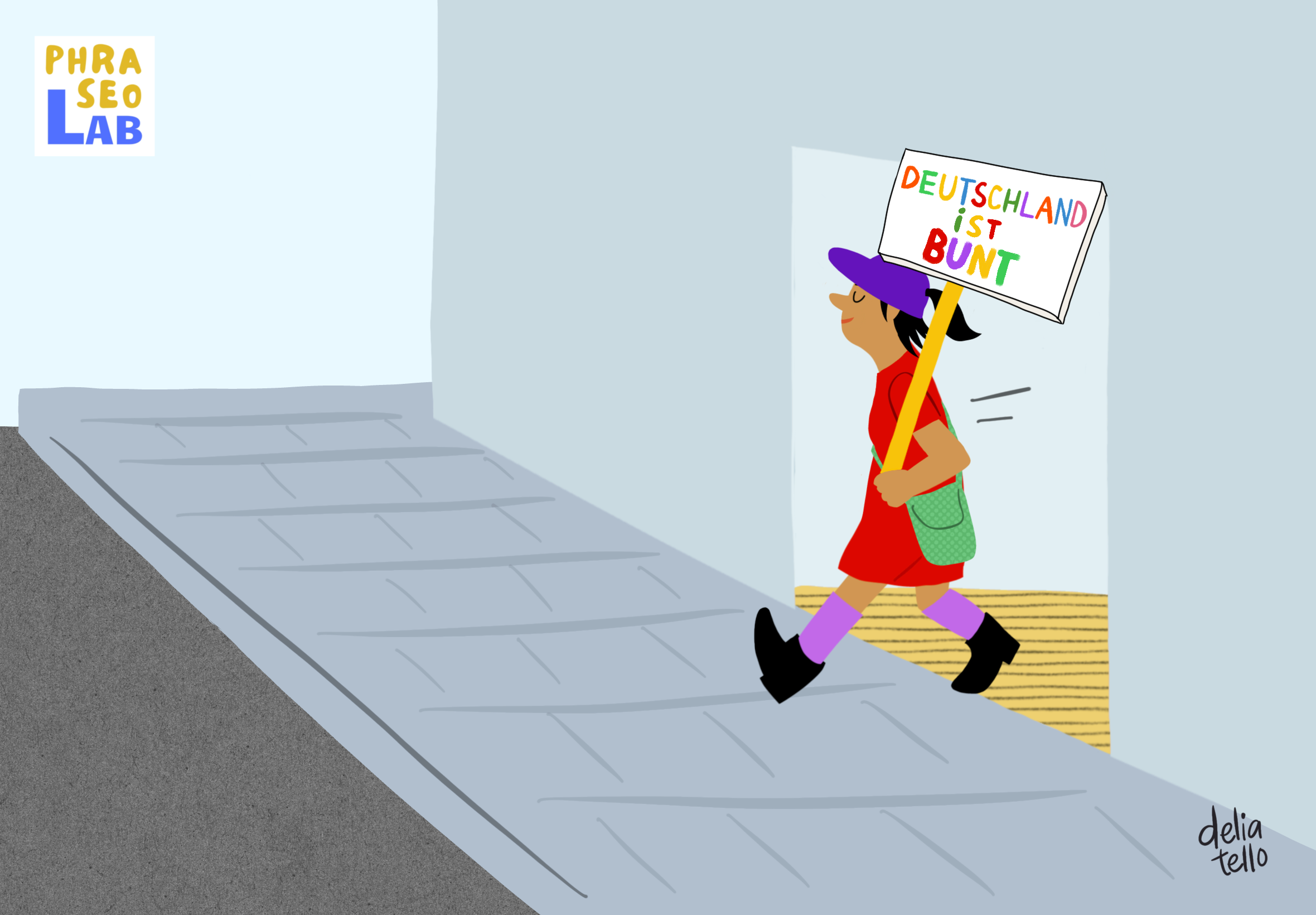
an einer Demonstration, an einem Protest teilnehmen
 to take to the streets
to take to the streets
to protest and demonstrate against something in public
 gå på gaden
gå på gaden
 βγαίνω στους δρόμους (για να διαμαρτυρηθώ για κάτι)
βγαίνω στους δρόμους (για να διαμαρτυρηθώ για κάτι)
 wyjść na ulicę (w proteście przeciwko czemuś)
wyjść na ulicę (w proteście przeciwko czemuś)
 echarse a las calles
echarse a las calles
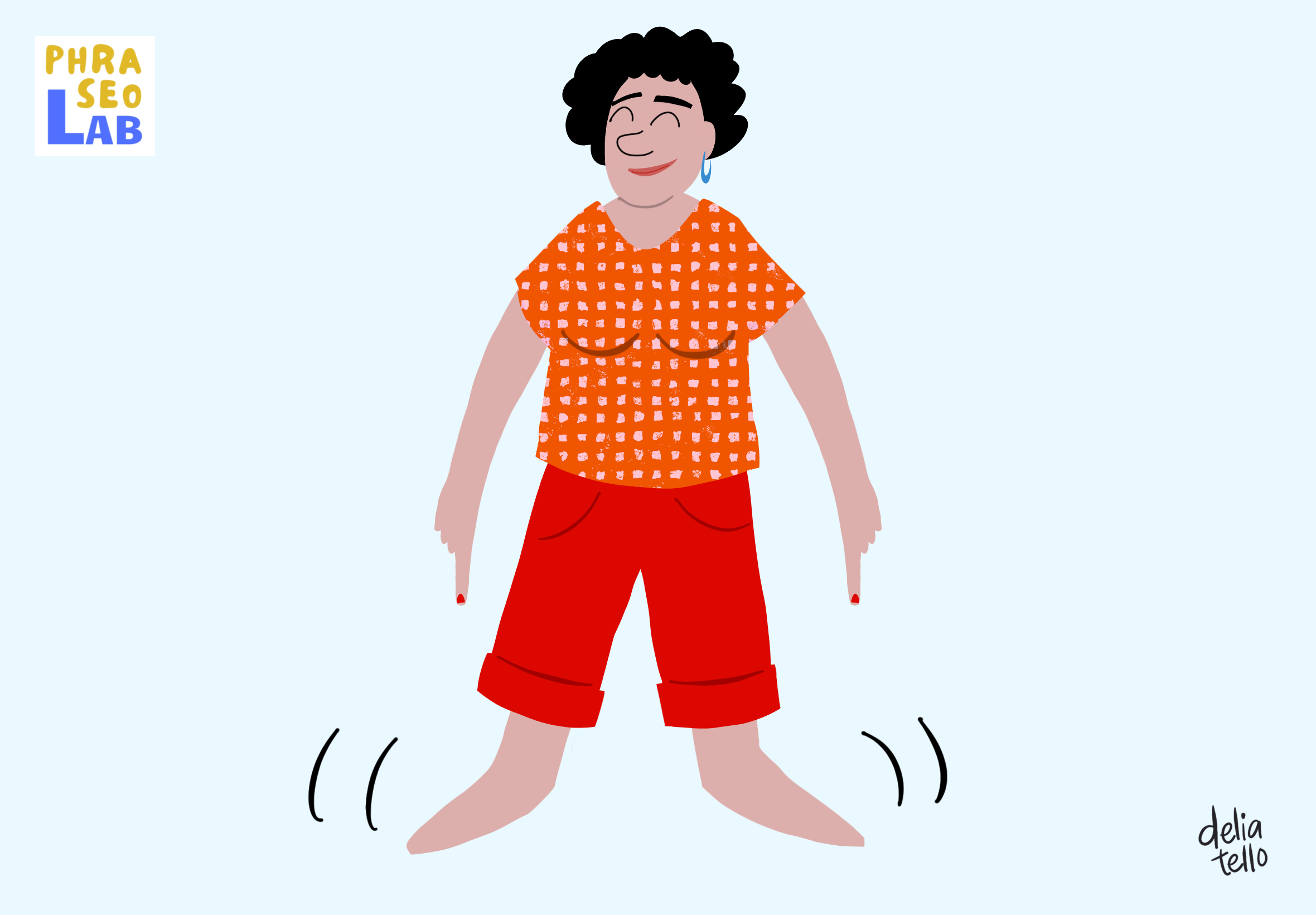
unabhängig, selbstständig sein, für sich selbst sorgen können
 to stand on your own feet
to stand on your own feet
to be independent, to be able to get everything you need to live without anybody's help
 stå på egne ben
stå på egne ben
 στέκομαι στα πόδια μου
στέκομαι στα πόδια μου
 stać na własnych nogach
stać na własnych nogach
 ser independiente / autónomo
ser independiente / autónomo
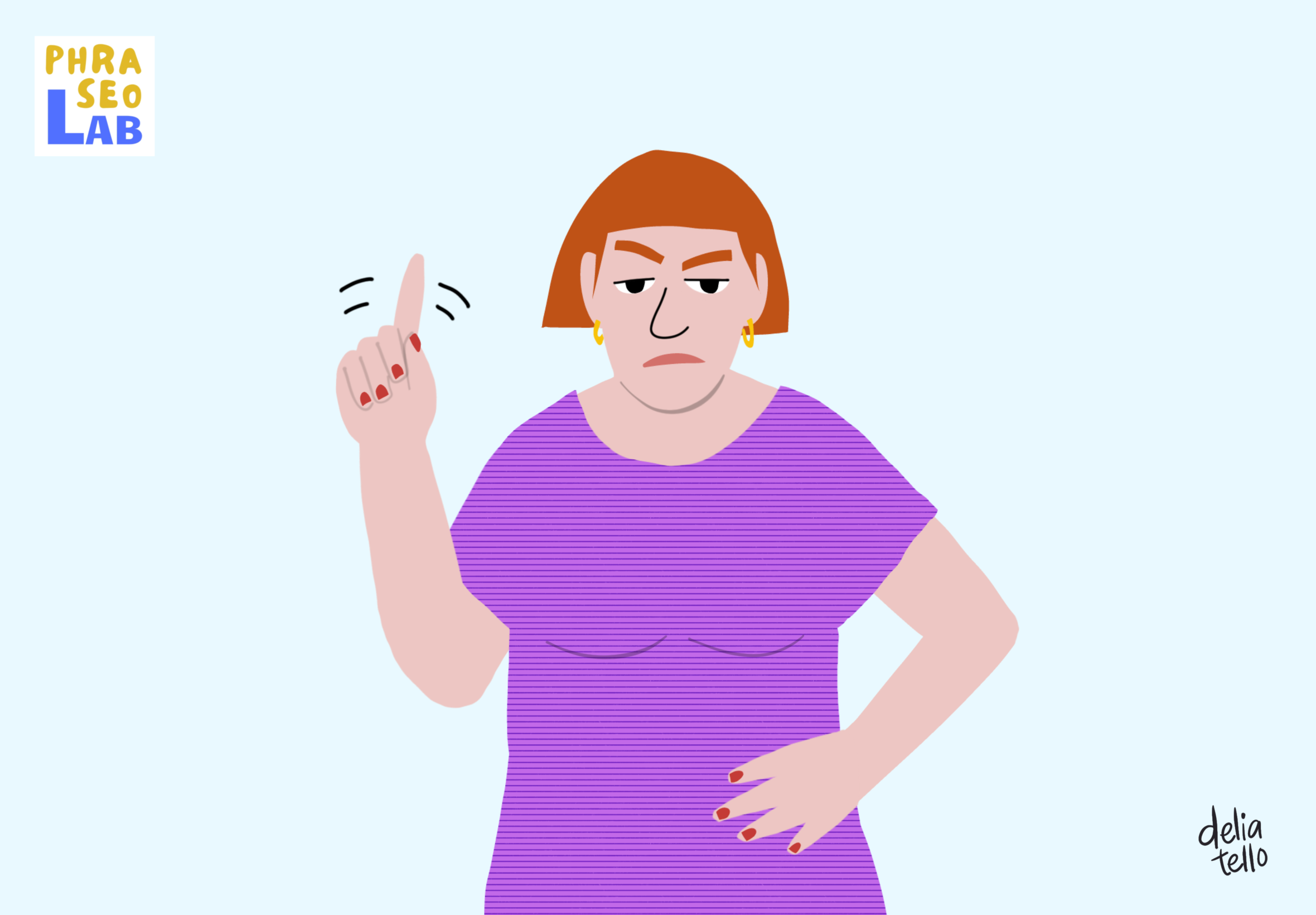
 on no account
on no account
 under ingen omstændigheder
under ingen omstændigheder
 με τίποτα, σε καμία περίπτωση, επουδενί
με τίποτα, σε καμία περίπτωση, επουδενί
 w żadnym razie
w żadnym razie
 de ninguna manera
de ninguna manera
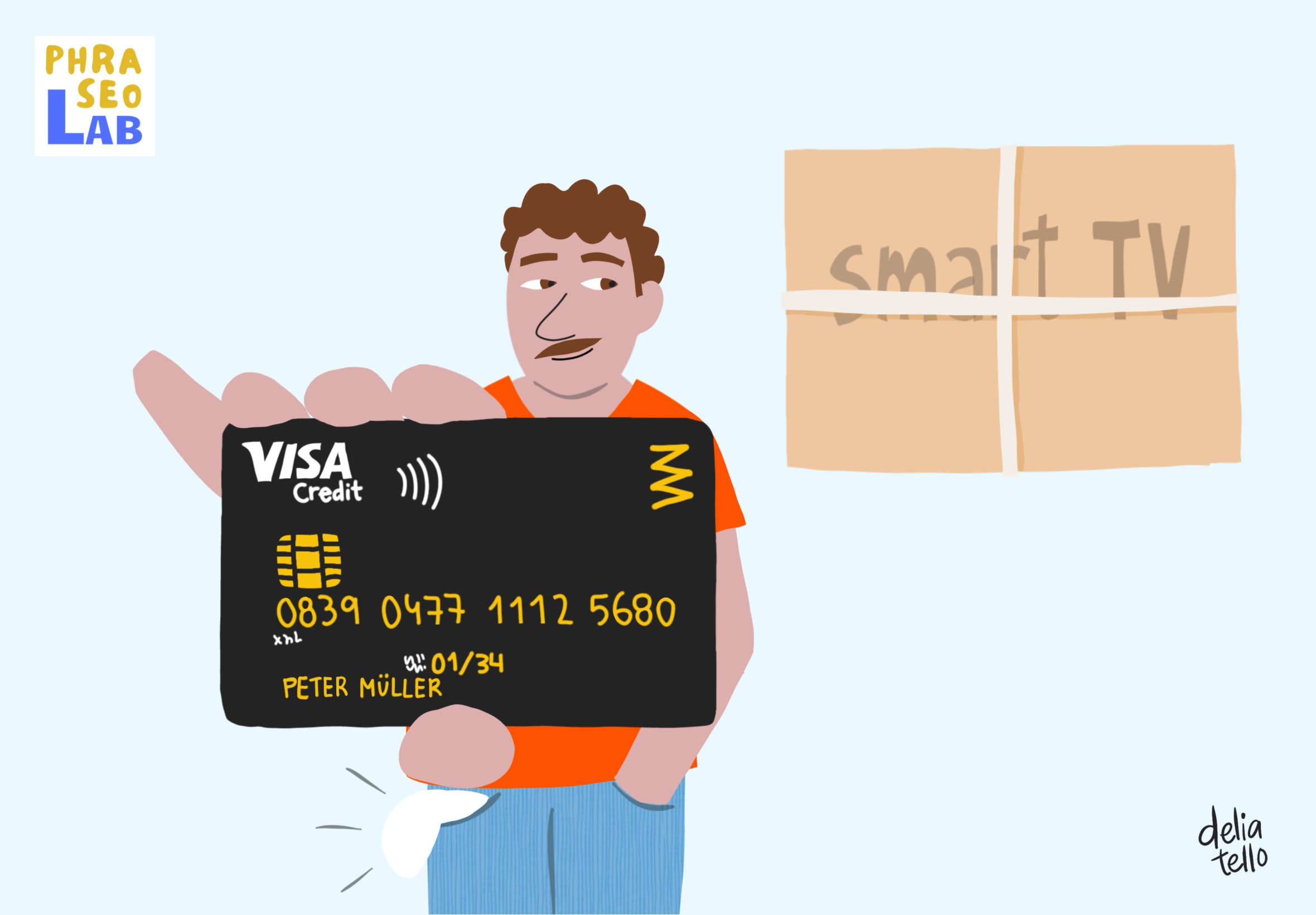
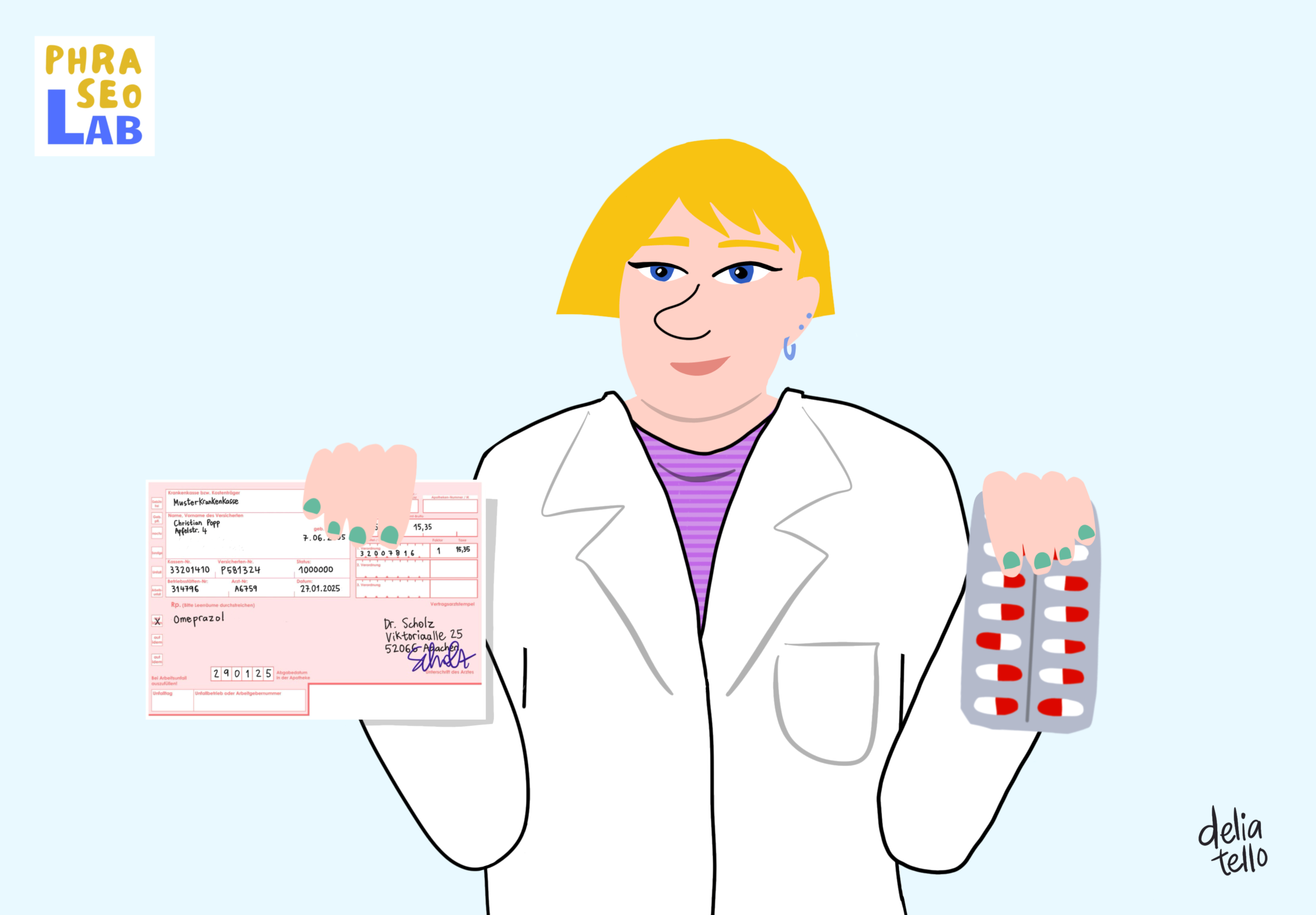
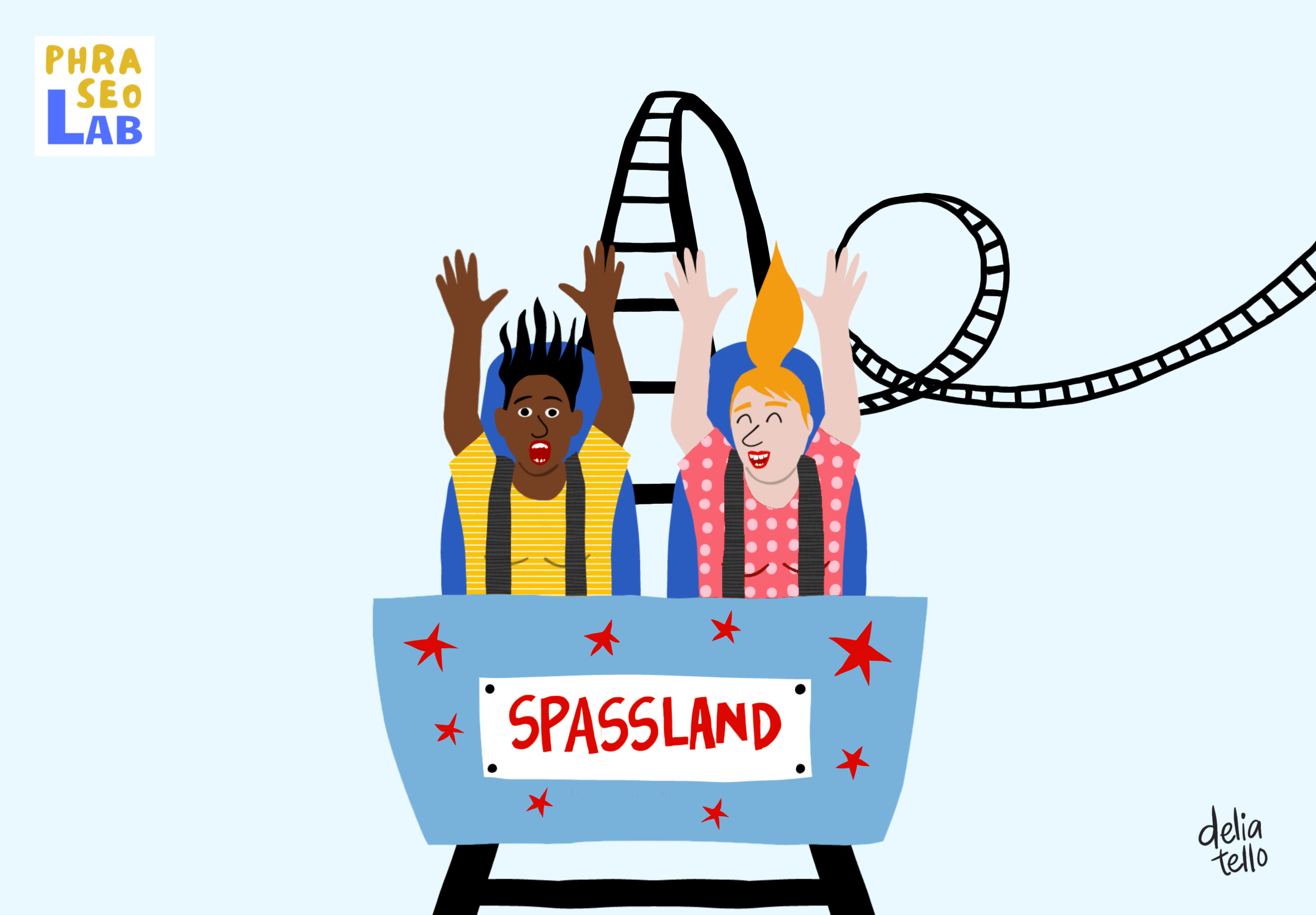
(in seinen Erwartungen, Hoffnungen, Ansprüchen) zufriedengestellt werden, mit etwas sehr zufrieden sein
 to get your money’s worth (!)
to get your money’s worth (!)
to make the most of something, to receive good value from something you have paid for
 få noget for pengene
få noget for pengene
 μένω ευχαριστημένος/η
μένω ευχαριστημένος/η
 wyjść na swoje
wyjść na swoje
 aprovechar al máximo / sacar partido de algo
aprovechar al máximo / sacar partido de algo
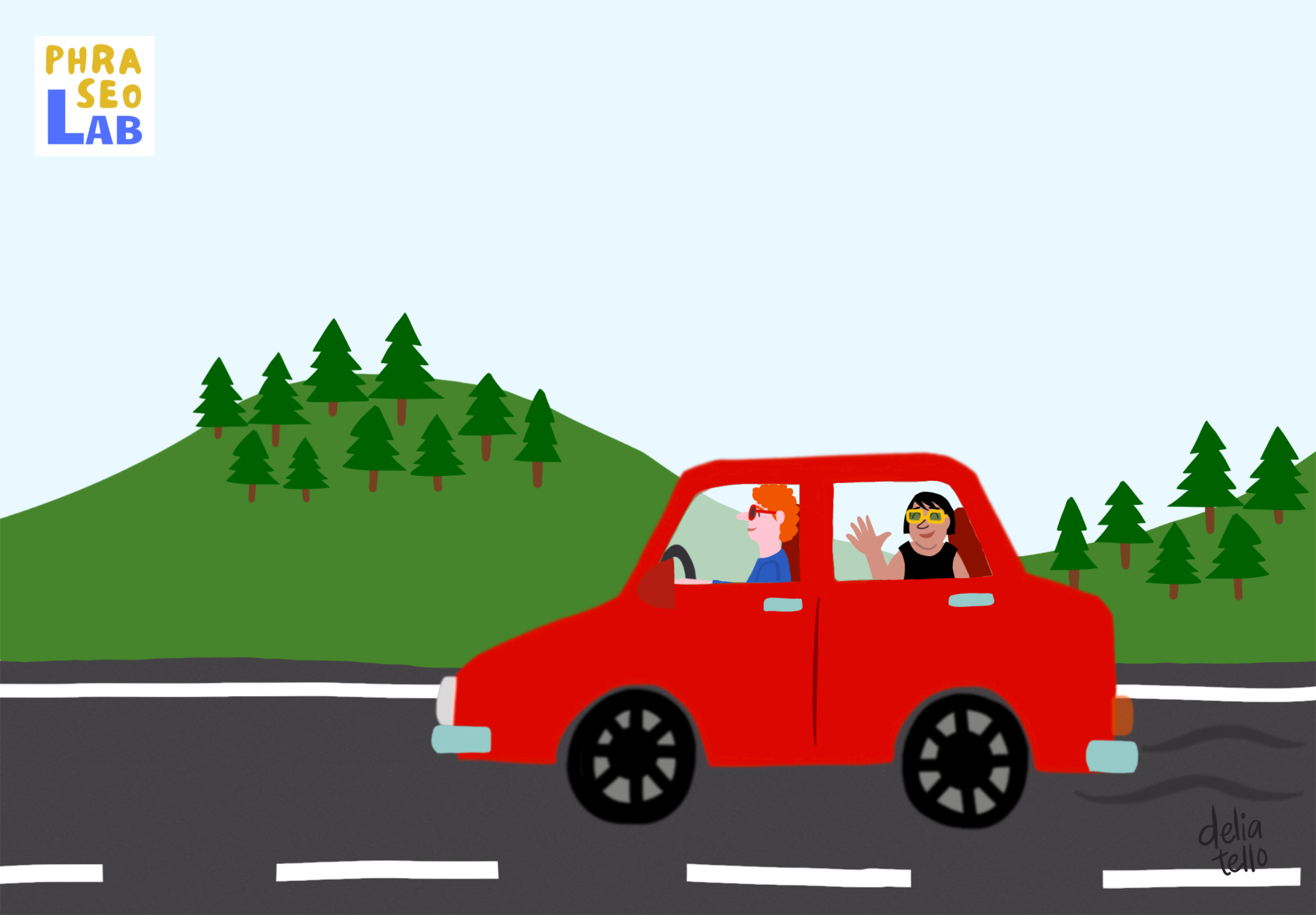
einen Ausflug machen, auf Reisen sein / gehen
 to be on the road
to be on the road
to be driving or travelling, usually for a long time or distance
 være / tage på tur / udflugt
være / tage på tur / udflugt
 κάνω εκδρομή / ταξίδι / τουρισμό
κάνω εκδρομή / ταξίδι / τουρισμό
 ruszyć w trasę
ruszyć w trasę
 estar de viaje
estar de viaje
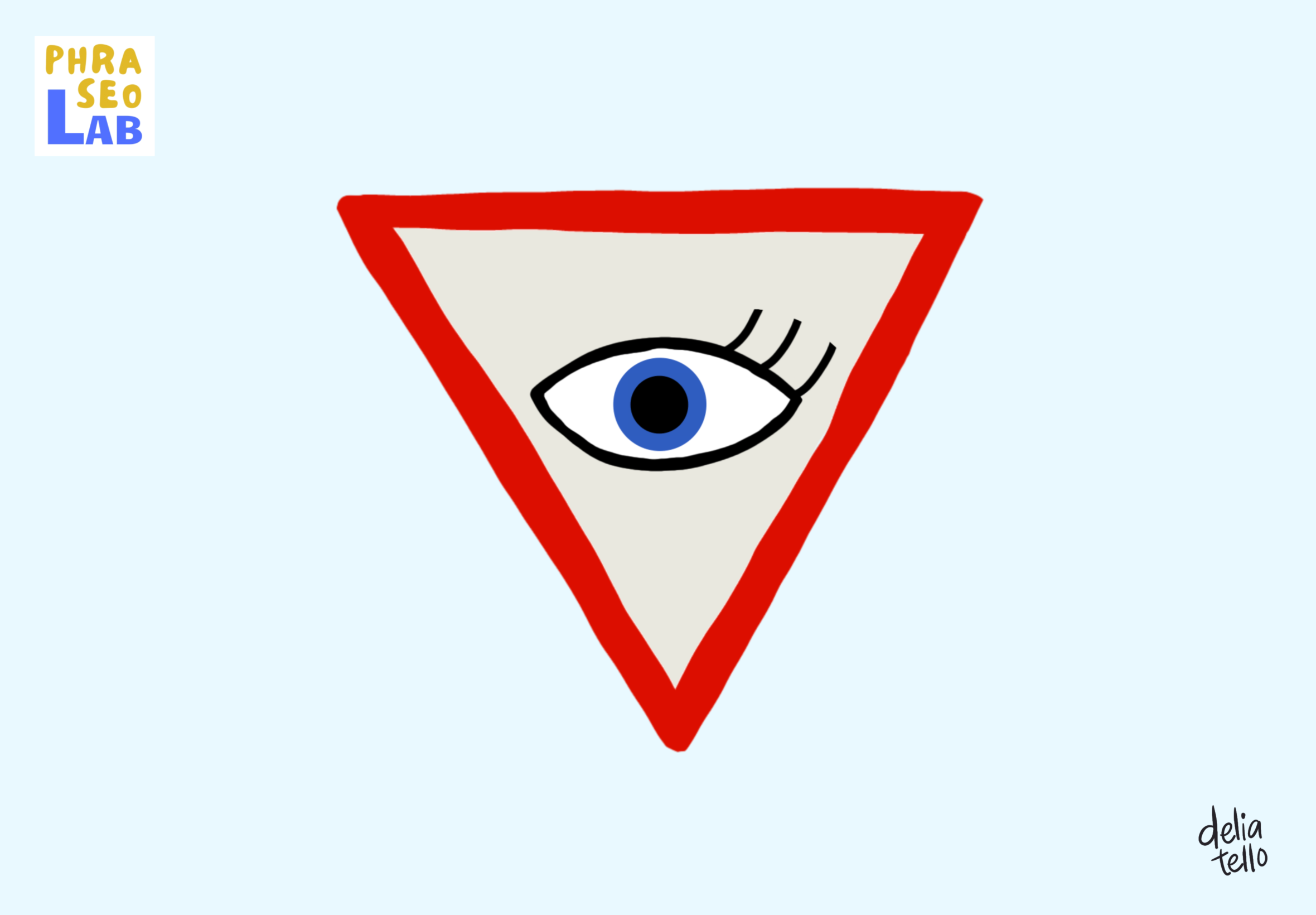
wird gesagt, um jemanden zu warnen, aufmerksam zu sein und sich vor etwas oder jemandem in Acht zu nehmen. "Sei vorsichtig!"
 Keep your eyes open!
Keep your eyes open!
used to tell someone that they should watch out for something, such as a possible danger
 Hold øjnenen åbne! Du må holde øje med det!
Hold øjnenen åbne! Du må holde øje med det!
 Τα μάτια σου δεκατέσσερα!
Τα μάτια σου δεκατέσσερα!
 Uważaj! Miej oczy szeroko otwarte!
Uważaj! Miej oczy szeroko otwarte!
 Mantén los ojos abiertos
Mantén los ojos abiertos
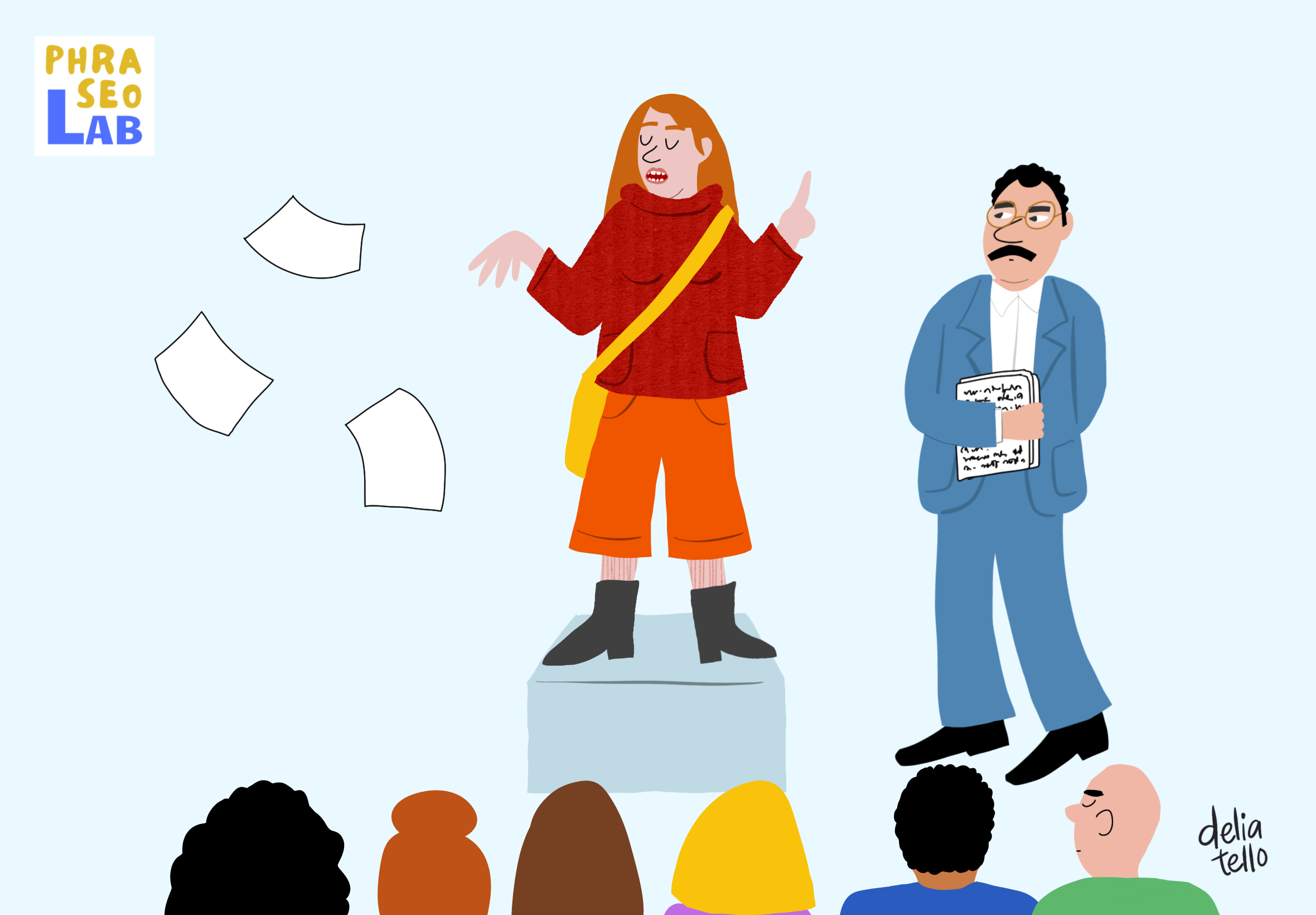
ohne Vorbereitung; spontan und improvisiert
 off the cuff
off the cuff
without preparation
 på stående fod; kunne gøre noget uden forberedelse; improvisere
på stående fod; kunne gøre noget uden forberedelse; improvisere
 αυτοσχεδιάζοντας, αυθόρμητα και χωρίς προετοιμασία
αυτοσχεδιάζοντας, αυθόρμητα και χωρίς προετοιμασία
 z marszu, bez przygotowania
z marszu, bez przygotowania
 de improviso
de improviso

1. zu eng sein (z. B. Kleidung), dick sein (Personen); 2. zu klein sein, um die vorhandene Menge aufzunehmen
 to be bursting / bulging at the seams (!)
to be bursting / bulging at the seams (!)
to be completely full, especially of people
 være ved at revne; sprænge alle rammer
være ved at revne; sprænge alle rammer
 κοντεύω να σκάσω από το πάχος / επικρατεί το αδιαχώρητο
κοντεύω να σκάσω από το πάχος / επικρατεί το αδιαχώρητο
 pękać w szwach
pękać w szwach
 estar hasta los topes
estar hasta los topes
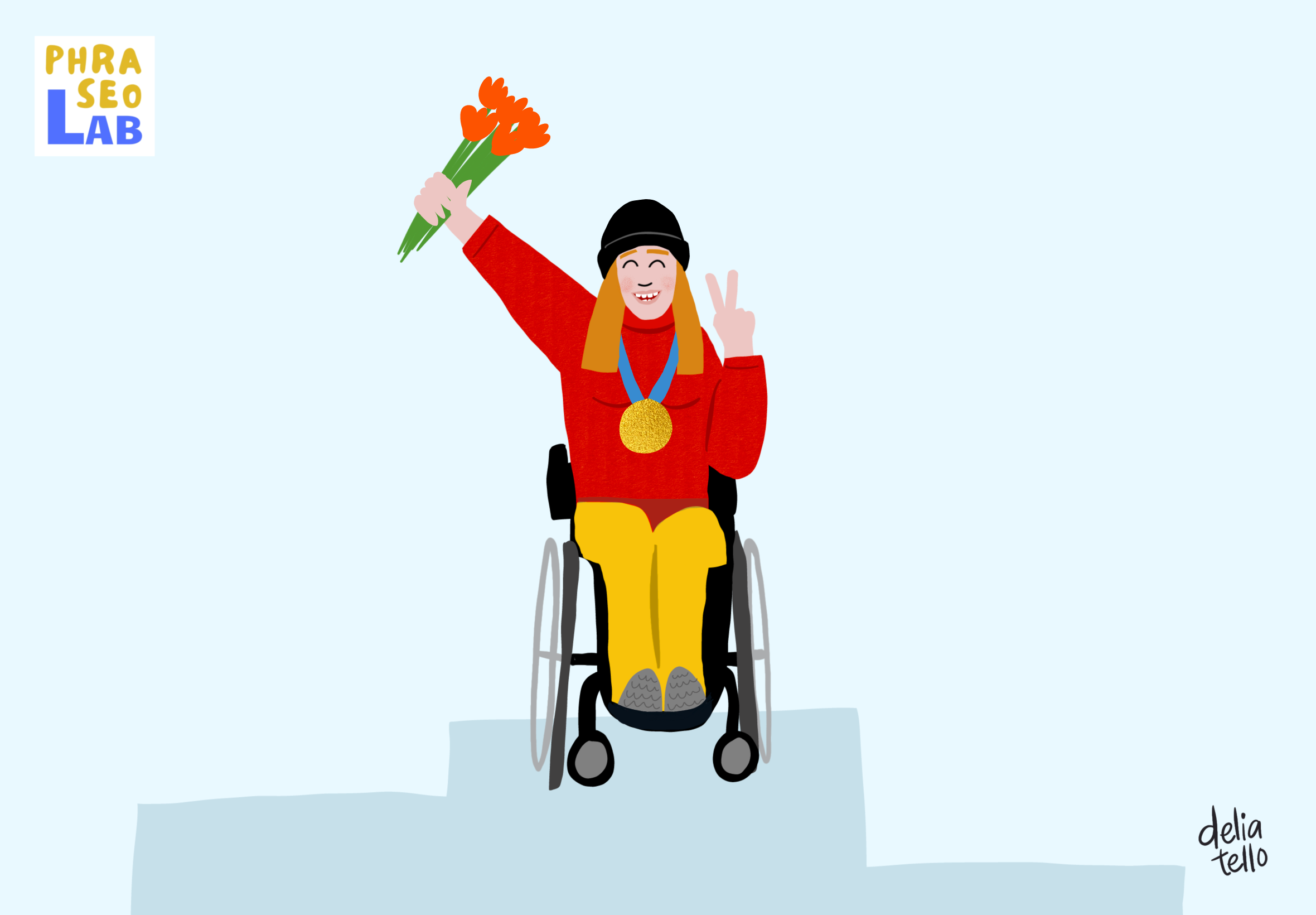
das Beste aus einer schwierigen Situation machen
 to make a virtue of necessity
to make a virtue of necessity
to take advantage of a situation which you cannot avoid
 gøre en dyd ud af en nødvendighed
gøre en dyd ud af en nødvendighed
 βγάζω κάτι καλό από μια άσχημη κατάσταση
βγάζω κάτι καλό από μια άσχημη κατάσταση
 z konieczności uczynić cnotę
z konieczności uczynić cnotę
 hacer de la desgracia virtud
hacer de la desgracia virtud
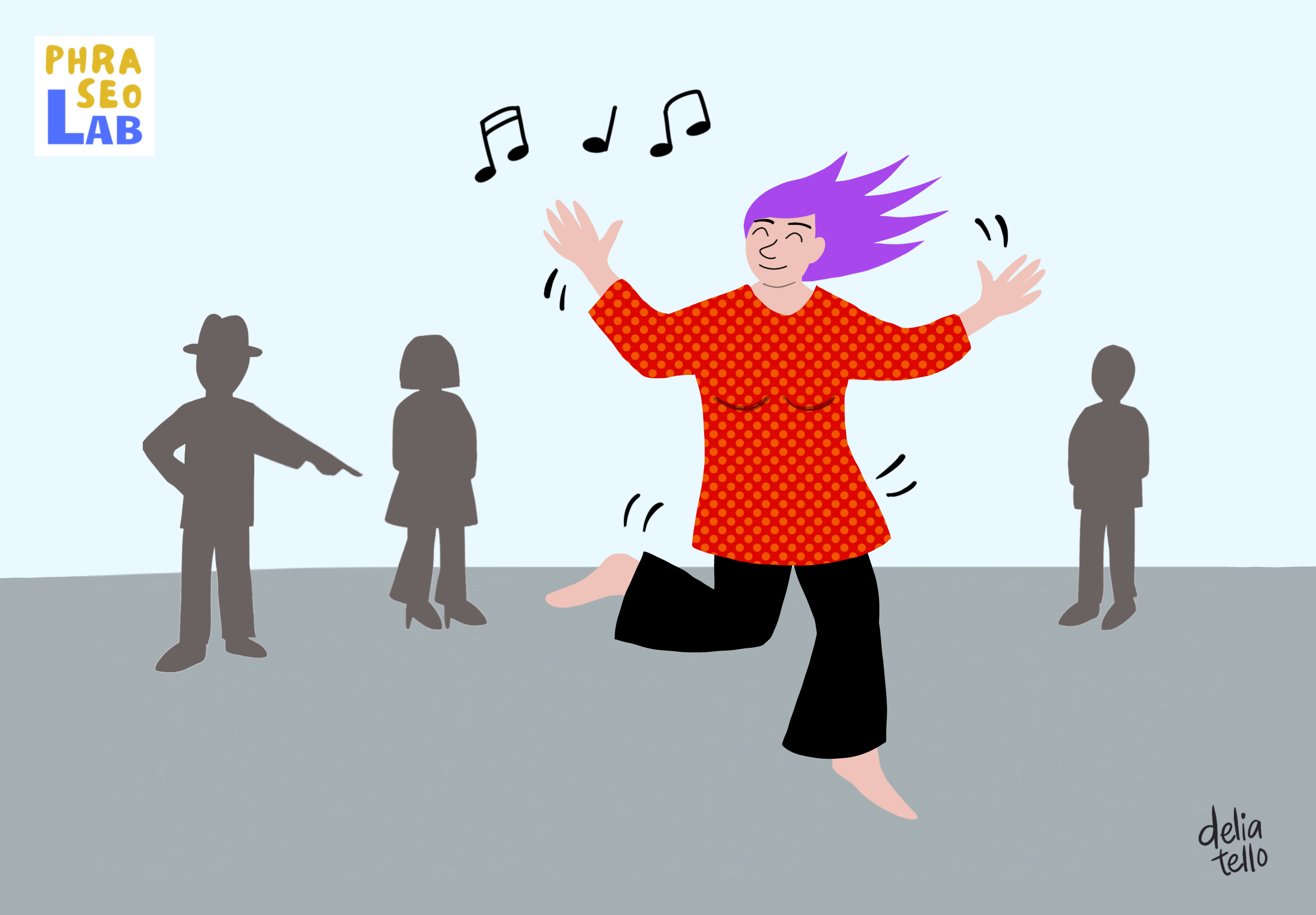
1. jemand tanzt aus der Reihe: jemand hält sich nicht an Regeln, Konventionen; 2. etwas tanzt aus der Reihe: etwas ist ungewöhnlich, weicht von der Norm ab
 to step out of line (!)
to step out of line (!)
to behave in a way that is not acceptable or is unexpected
 gå sine egne veje
gå sine egne veje
 πάω κόντρα στο ρεύμα, αποτελώ παραφωνία
πάω κόντρα στο ρεύμα, αποτελώ παραφωνία
 wyłamywać się z szeregu, odbiegać od normy, postępować inaczej niż inni
wyłamywać się z szeregu, odbiegać od normy, postępować inaczej niż inni
 pasarse / salirse de la raya / saltarse las reglas a la torera
pasarse / salirse de la raya / saltarse las reglas a la torera
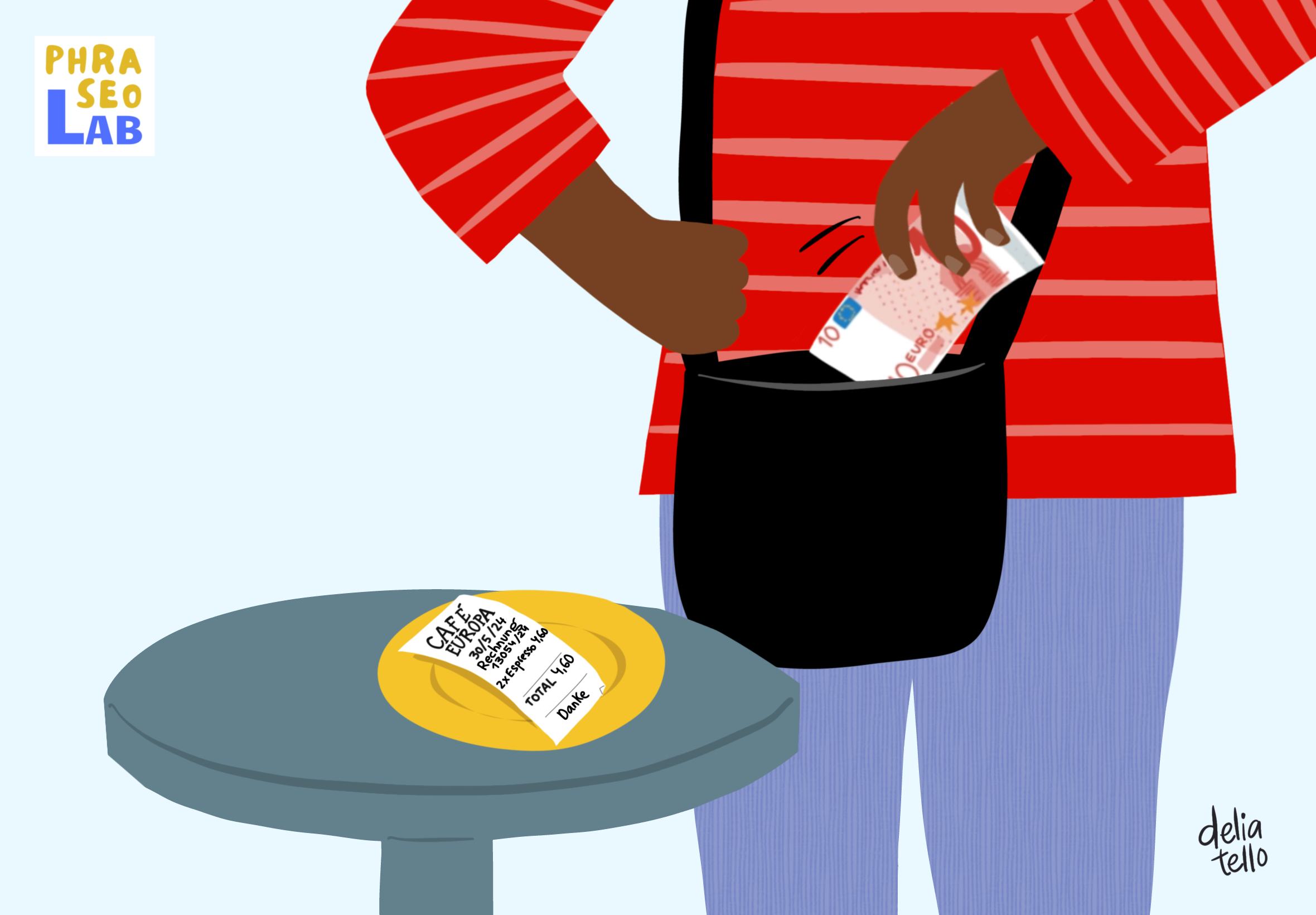
selbst bezahlen
 to pay (for) something out of your own pocket
to pay (for) something out of your own pocket
to pay with your own money
 betale af sin egen lomme
betale af sin egen lomme
 πληρώνω από την τσέπη μου
πληρώνω από την τσέπη μου
 płacić z własnej kieszeni
płacić z własnej kieszeni
 pagar de su (propio) bolsillo
pagar de su (propio) bolsillo
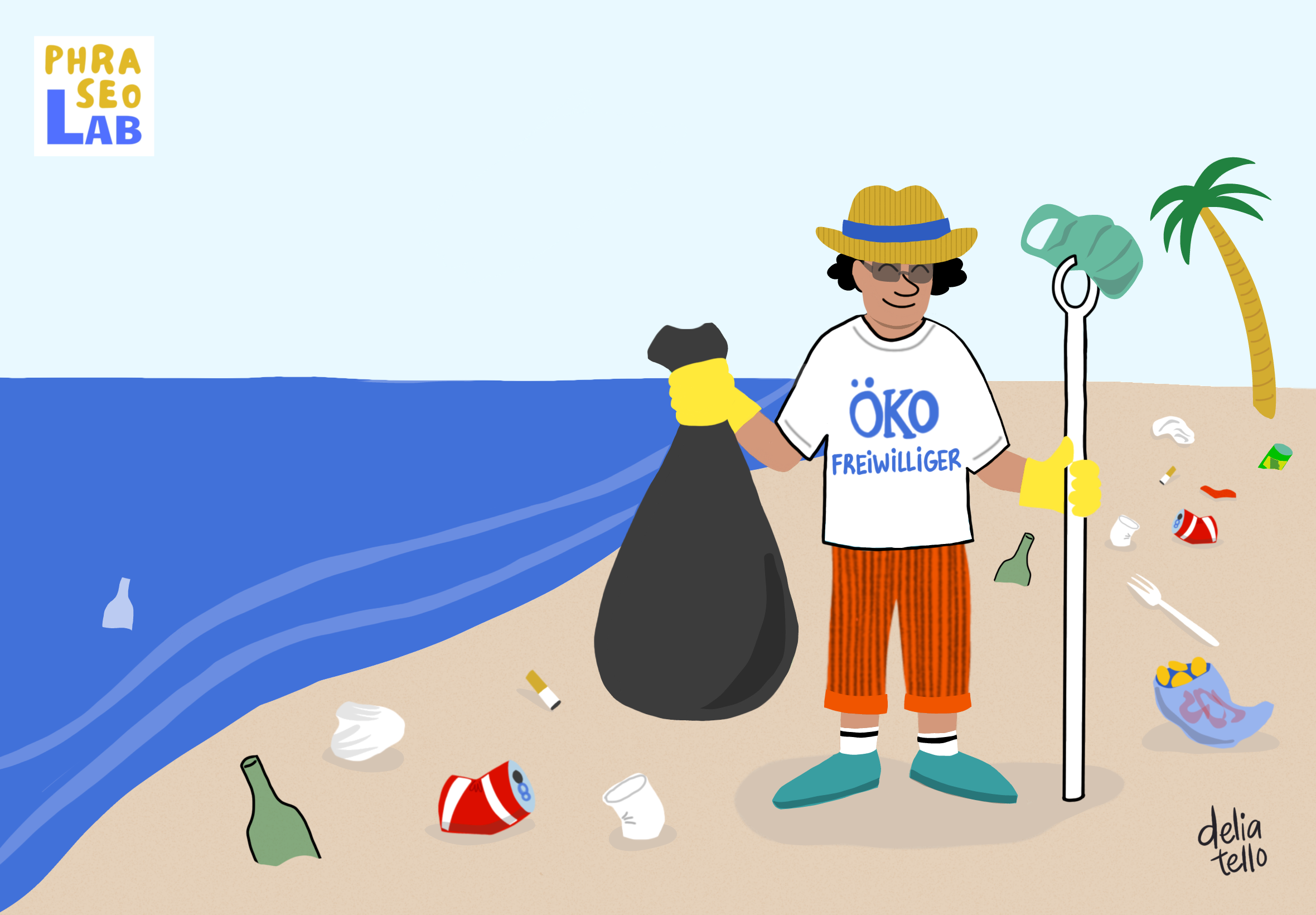
freiwillig, aus eigenem Wunsch; (von) selbst, unaufgefordert
 of your own free will
of your own free will
freely deciding what to do
 af egen fri vilje
af egen fri vilje
 οικειοθελώς, με την δική μου θέληση
οικειοθελώς, με την δική μου θέληση
 z własnej woli
z własnej woli
 hacer algo de motu proprio
hacer algo de motu proprio
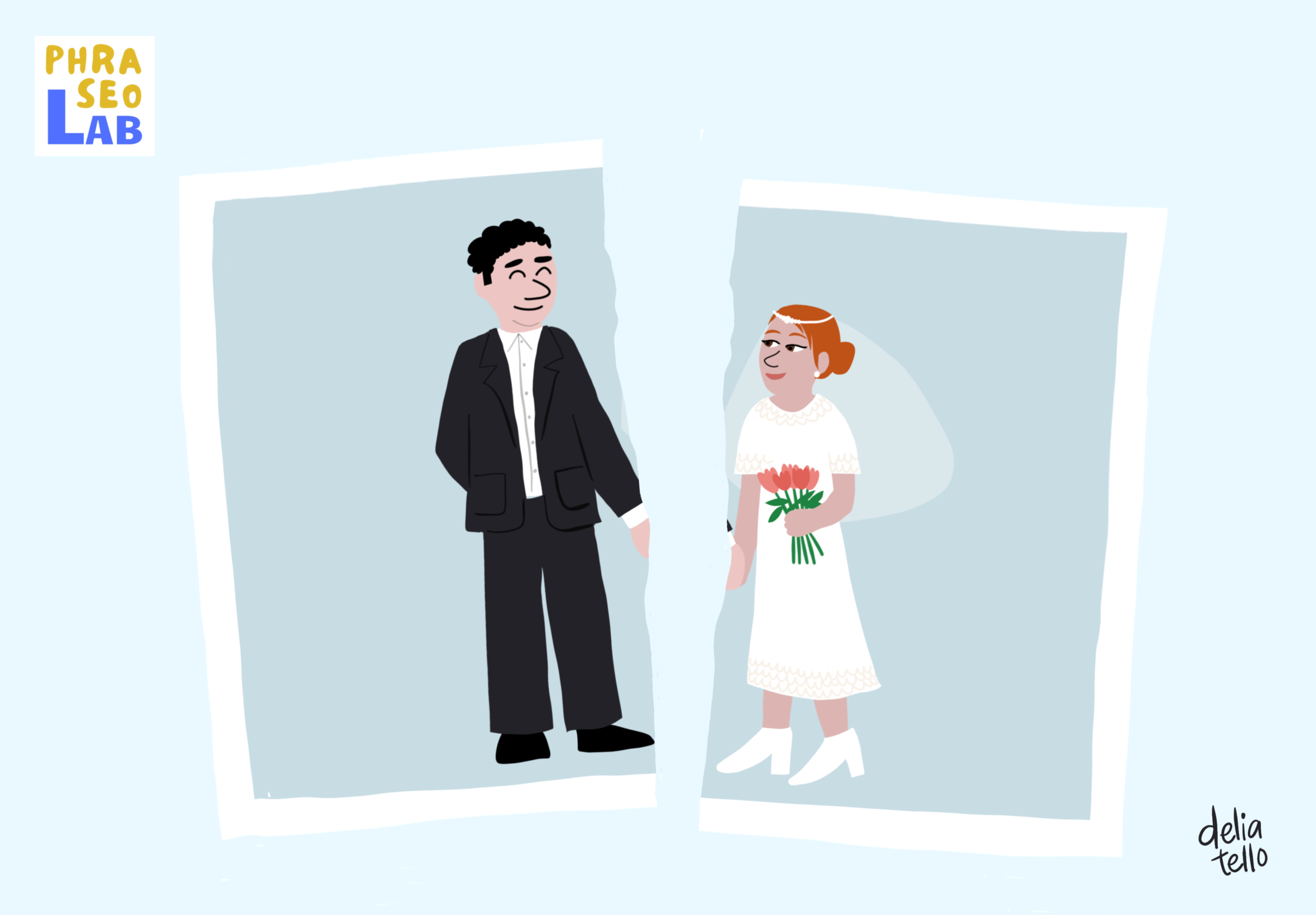
wird gesagt, wenn etwas zu Ende ist oder nicht mehr wichtig ist, nicht wiederholbar, es war einmal und ist vorbei.
 over and done with
over and done with
used to say that something (a task, an activity, etc.) is finished or that you don't have to engage in it anymore.
 endegyldigt forbi
endegyldigt forbi
 Αυτό ήταν, τέλειωσε / τέρμα και τελείωσε
Αυτό ήταν, τέλειωσε / τέρμα και τελείωσε
 koniec i kropka
koniec i kropka
 Listo
Listo
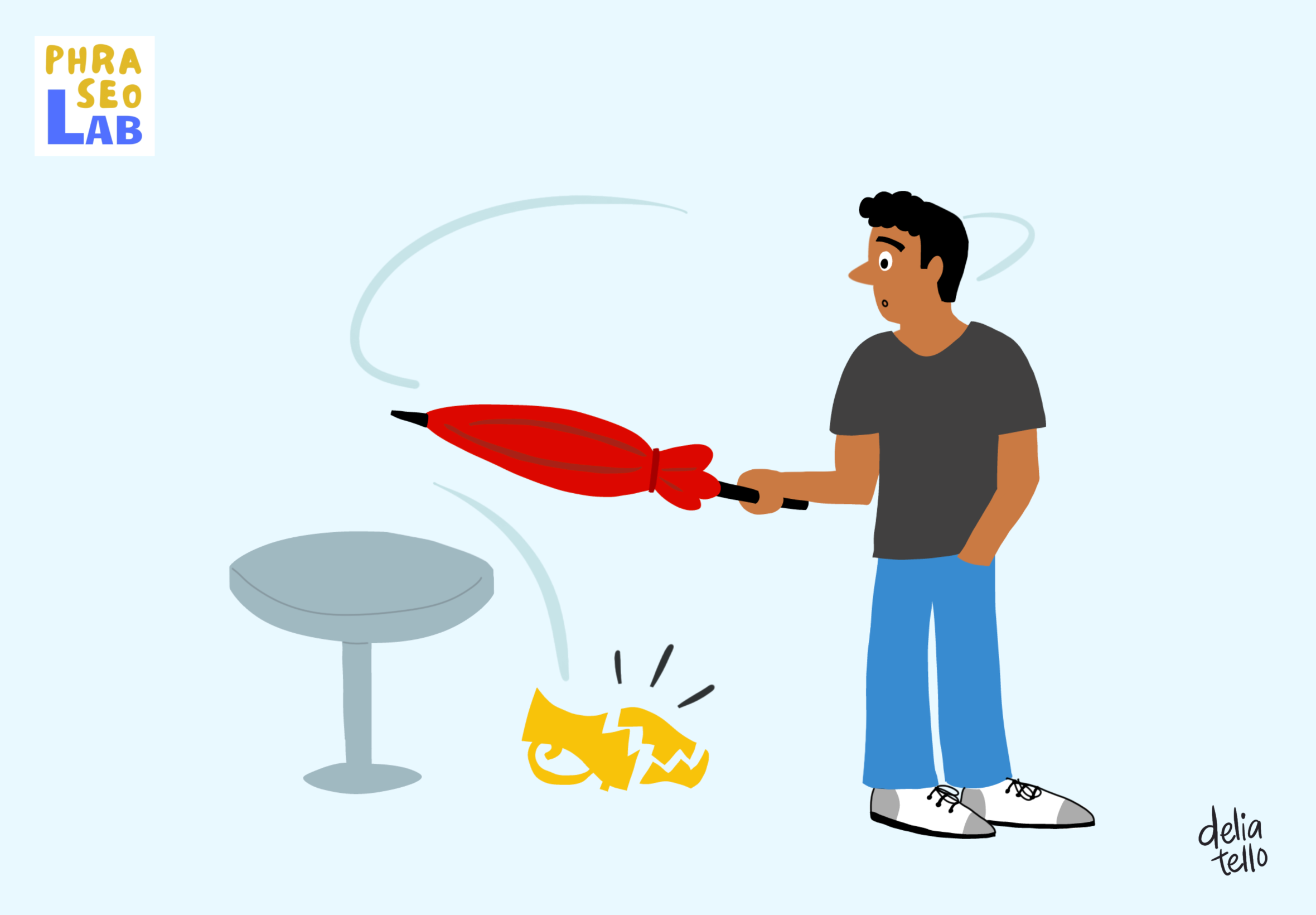
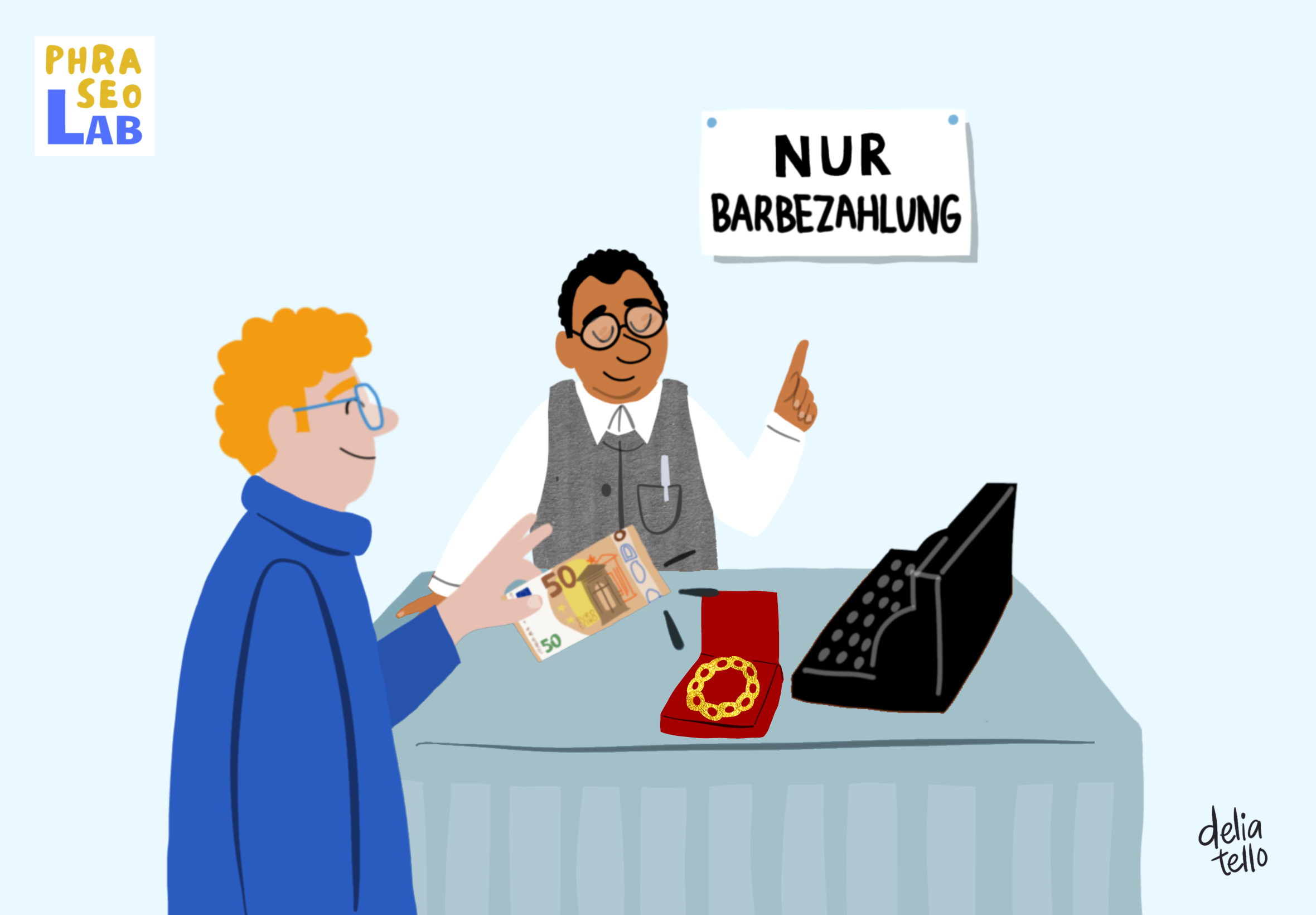
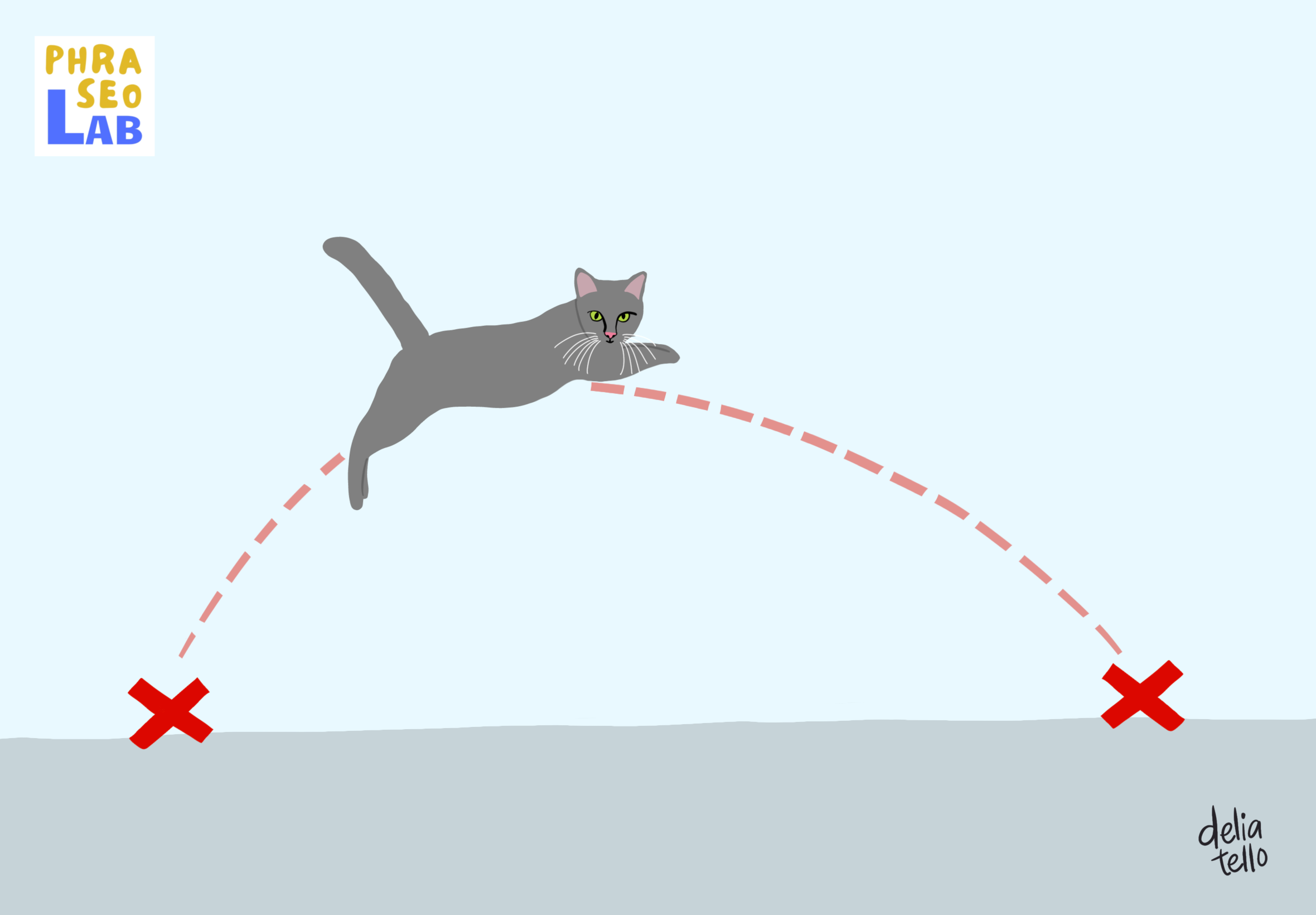
bis/ bis zu / zu.... ist es eine kurze Entfernung
 a stone’s throw
a stone’s throw
a very short distance; used to say that two places are very near each other
 være (kun) et stenkast væk
være (kun) et stenkast væk
 είναι μόνο δύο βήματα μέχρι ...
είναι μόνο δύο βήματα μέχρι ...
 (tylko) rzut kamieniem
(tylko) rzut kamieniem
 a tiro de piedra
a tiro de piedra
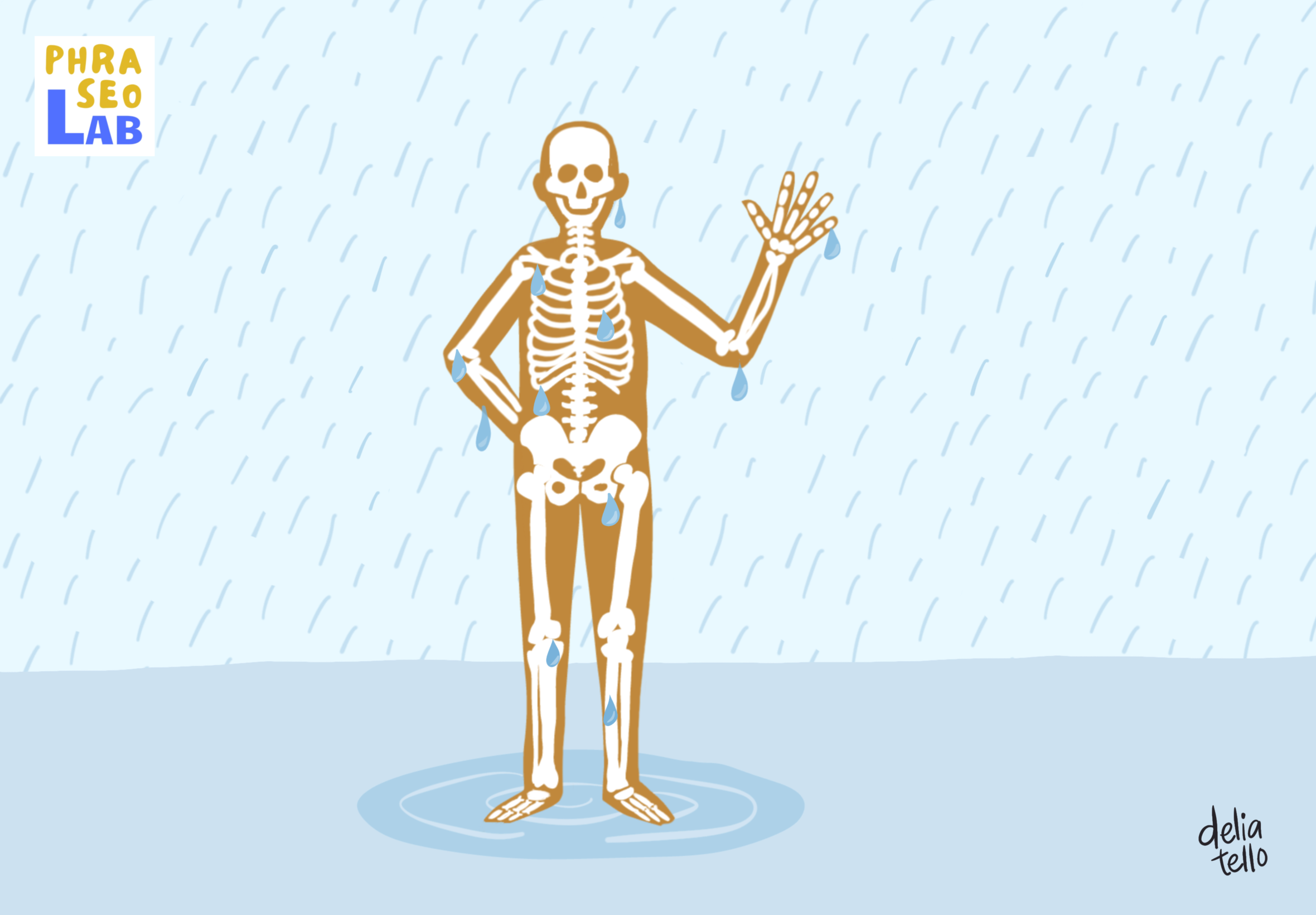
völlig durchnässt
 soaked to the skin
soaked to the skin
very wet
 være meget våd; være gennemblødt til skindet
være meget våd; være gennemblødt til skindet
 βρεγμένος/η, μούσκεμα ως το κόκκαλο
βρεγμένος/η, μούσκεμα ως το κόκκαλο
 być przemokniętym do suchej nitki
być przemokniętym do suchej nitki
 calado/empapado hasta los huesos
calado/empapado hasta los huesos
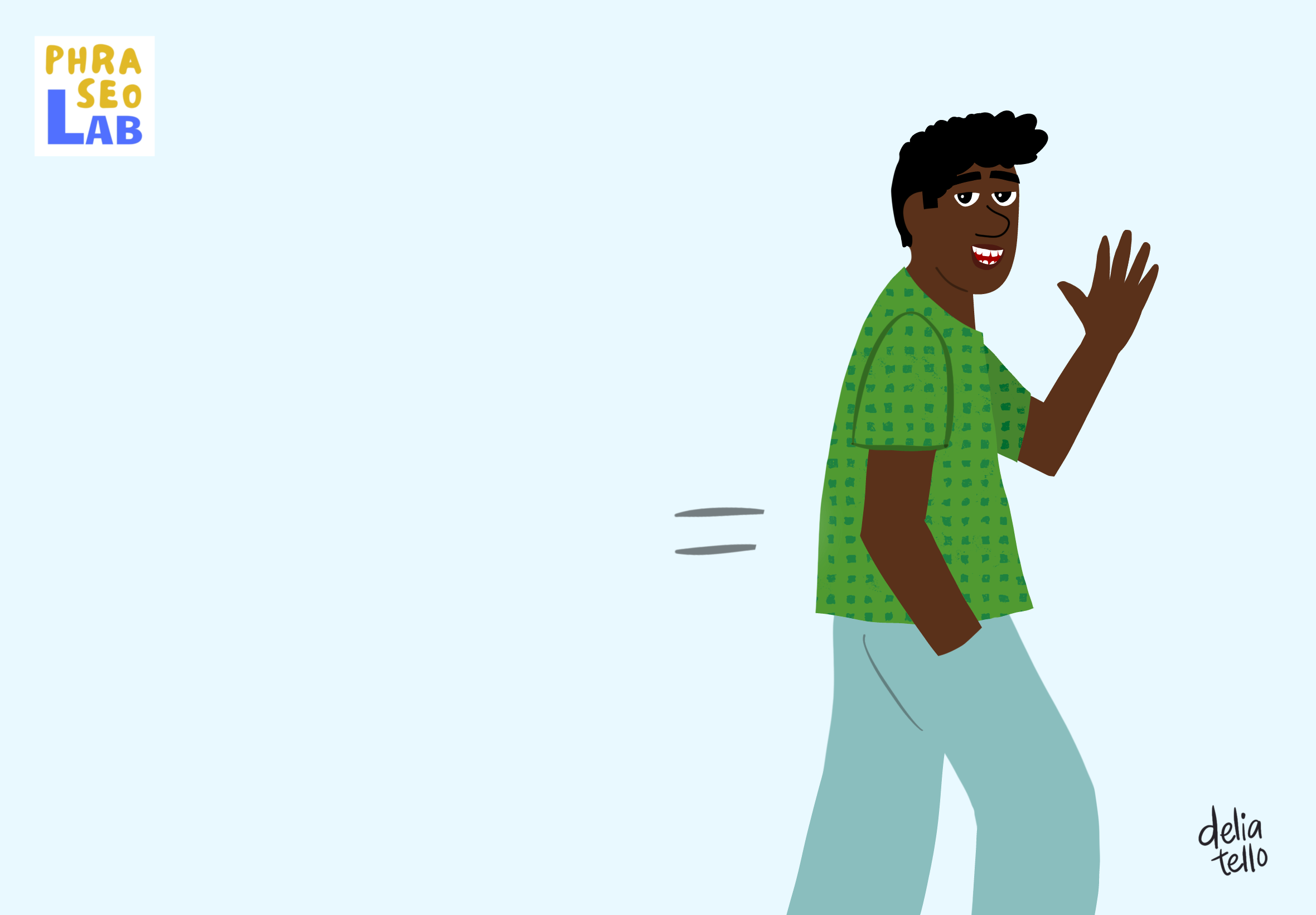
sagt man, wenn man sich verabschiedet aber Absicht hat, jemanden bald wiederzusehen, jemandem zu schreiben oder mit jemandem zu sprechen. Bis bald!
 See you later!
See you later!
used to say goodbye in an informal way
 Vi ses!
Vi ses!
 Θα τα ξαναπούμε αργότερα!
Θα τα ξαναπούμε αργότερα!
 Na razie! Do następnego razu!
Na razie! Do następnego razu!
 ¡Hasta luego!
¡Hasta luego!
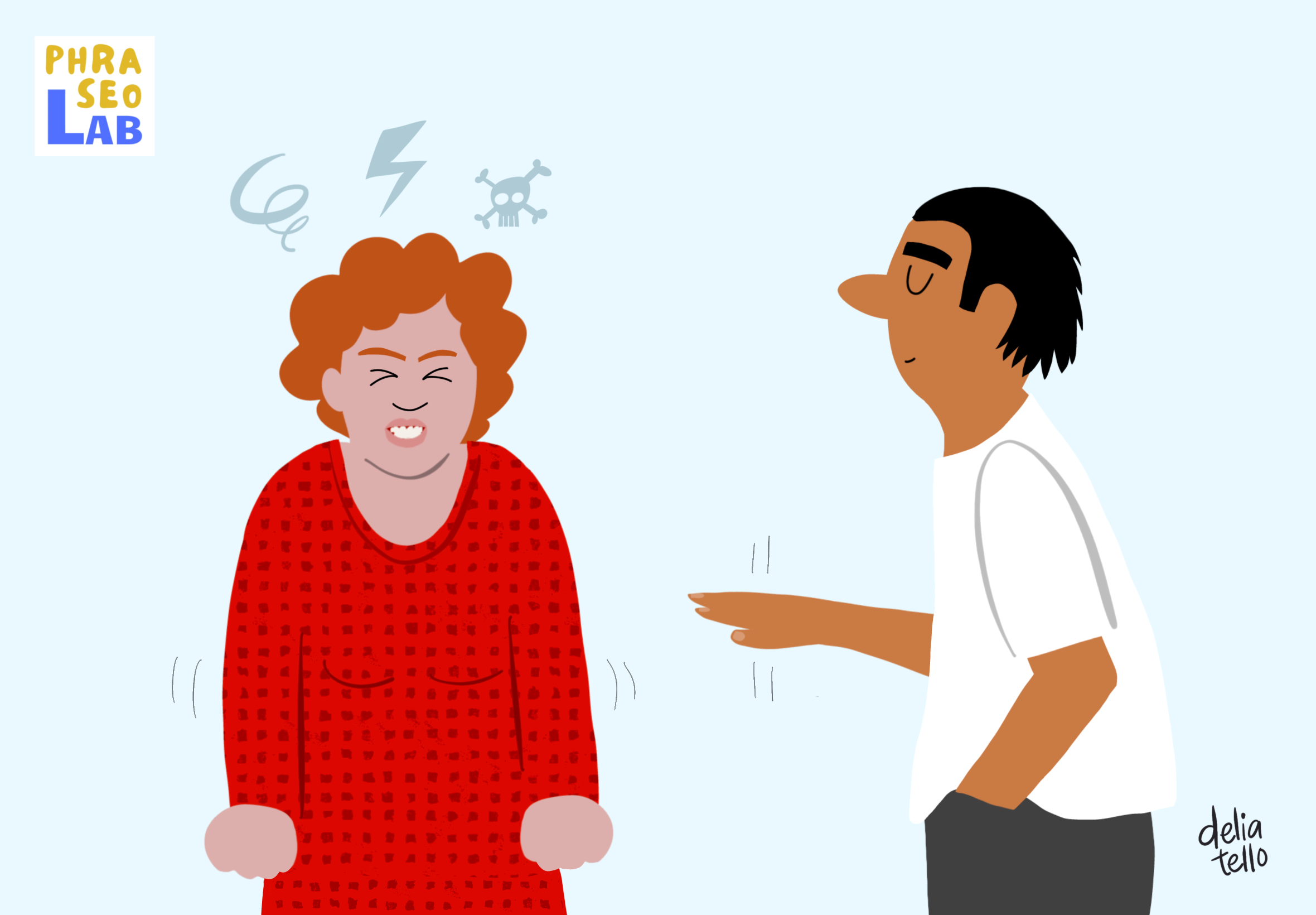
wird verwendet, wenn jemand aufgeregt oder verkrämpft ist und man will ihn beruhigen: Jetzt chill mal! Entspann dich!
 Stay/keep calm!
Stay/keep calm!
to continue to be quiet and not worried, especially in a difficult or frightening situation
 Slap nu af!
Slap nu af!
 Ήρεμα / μείνε ήρεμος.
Ήρεμα / μείνε ήρεμος.
 Wyluzuj! Daj na luz!
Wyluzuj! Daj na luz!
 Tranquilo/a
Tranquilo/a
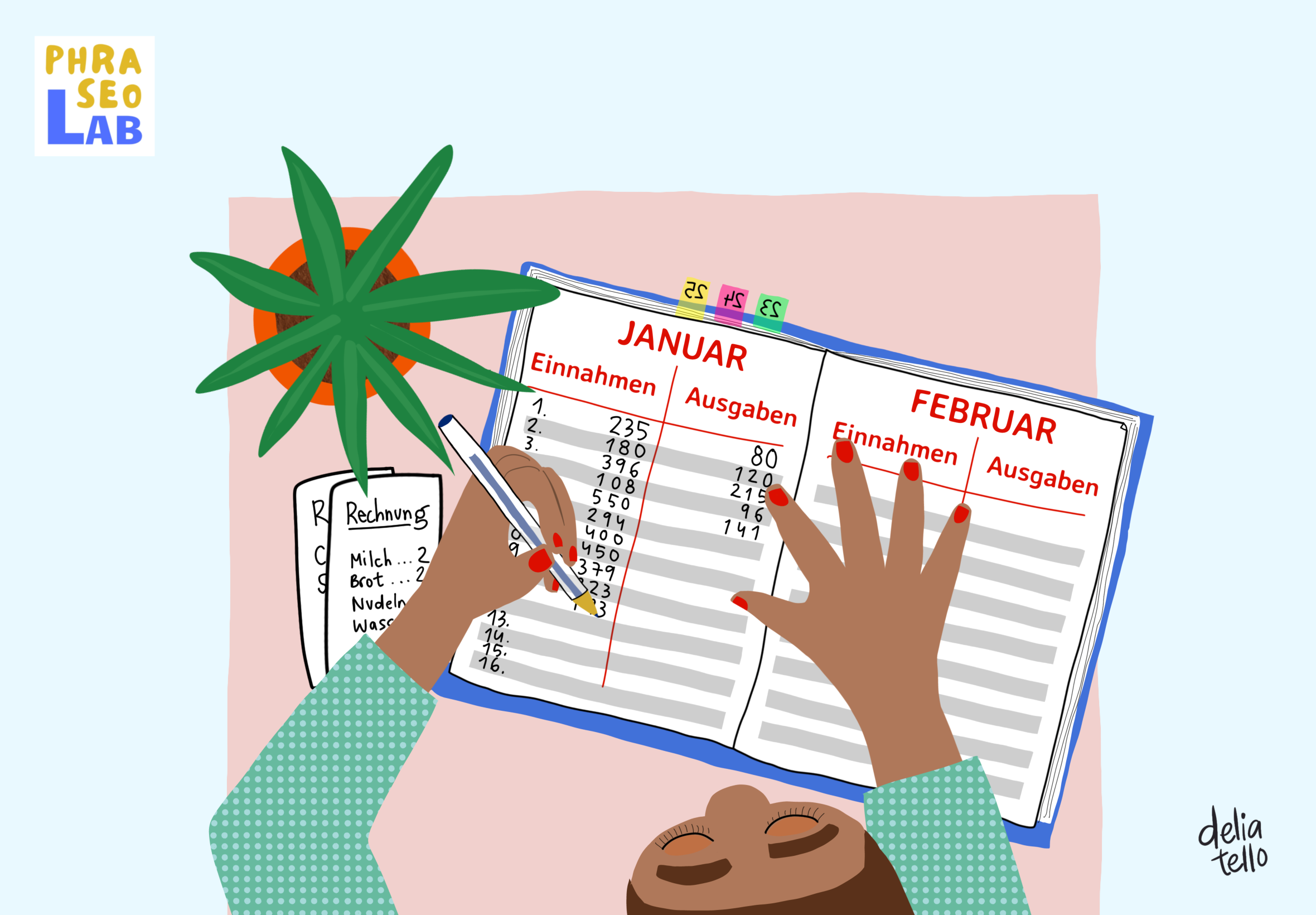
 to keep a record of something, to
keep (an) account of something
to keep a record of something, to
keep (an) account of something
 føre regnskab med noget
føre regnskab med noget
 κρατάω αρχείο
κρατάω αρχείο
 rozliczać, prowadzić księgowość
rozliczać, prowadzić księgowość
 llevar un registro
llevar un registro
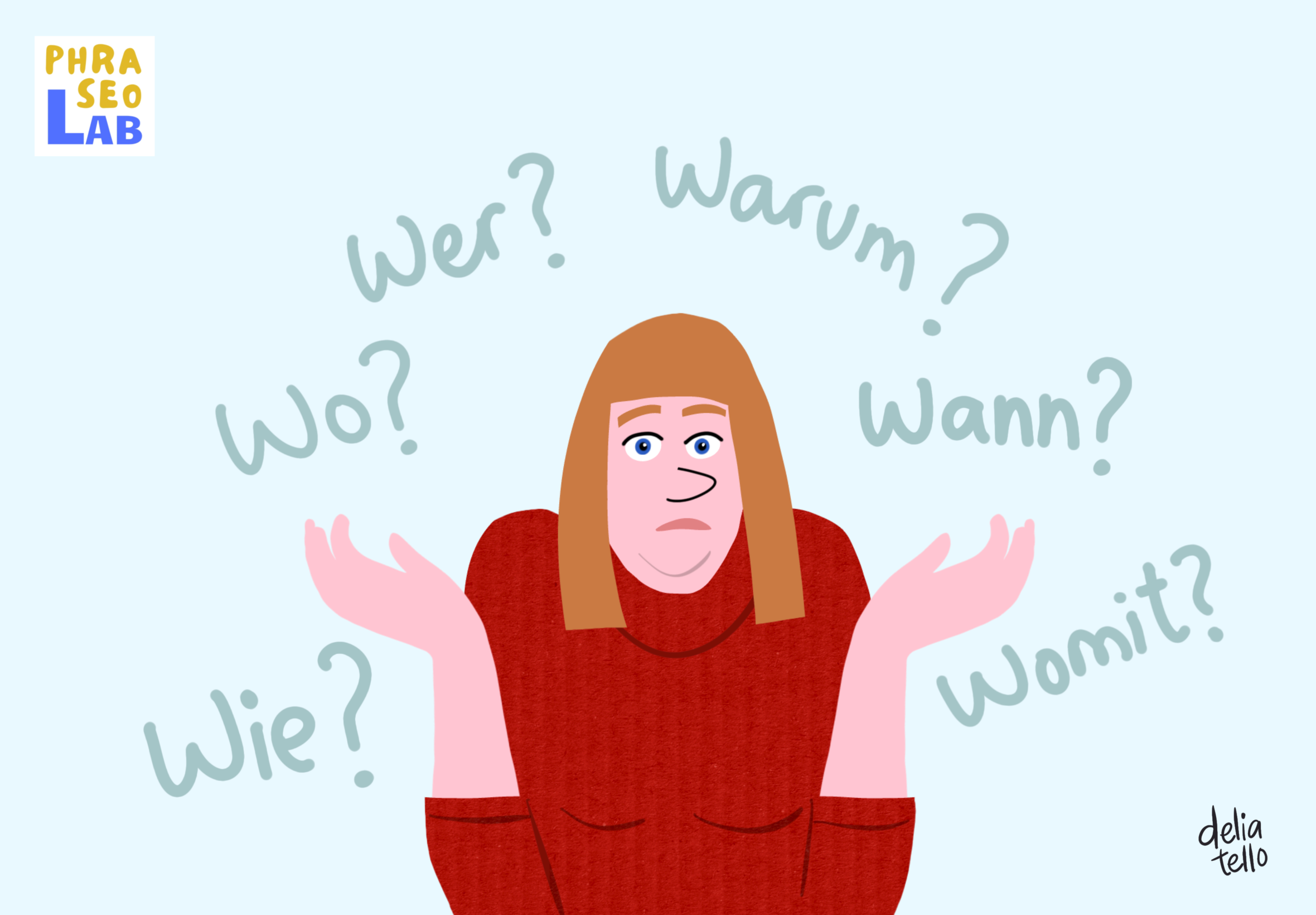
verwendet, wenn man die Antwort nicht weiß. "Es tut mir leid, diese Frage kann ich nicht beantworten"
 I have no idea / I haven't the faintest idea (!)
I have no idea / I haven't the faintest idea (!)
used to say that you know nothing about something
 Det er jeg ikke sikker på!
Det er jeg ikke sikker på!
 Θα σας / σε γελάσω! (δεν είμαι σε θέση να απαντήσω ένα ερώτημα)
Θα σας / σε γελάσω! (δεν είμαι σε θέση να απαντήσω ένα ερώτημα)
 Nie znam odpowiedzi na to pytanie! Nie mam pojęcia!
Nie znam odpowiedzi na to pytanie! Nie mam pojęcia!
 Ni idea / Me pillas en eso
Ni idea / Me pillas en eso
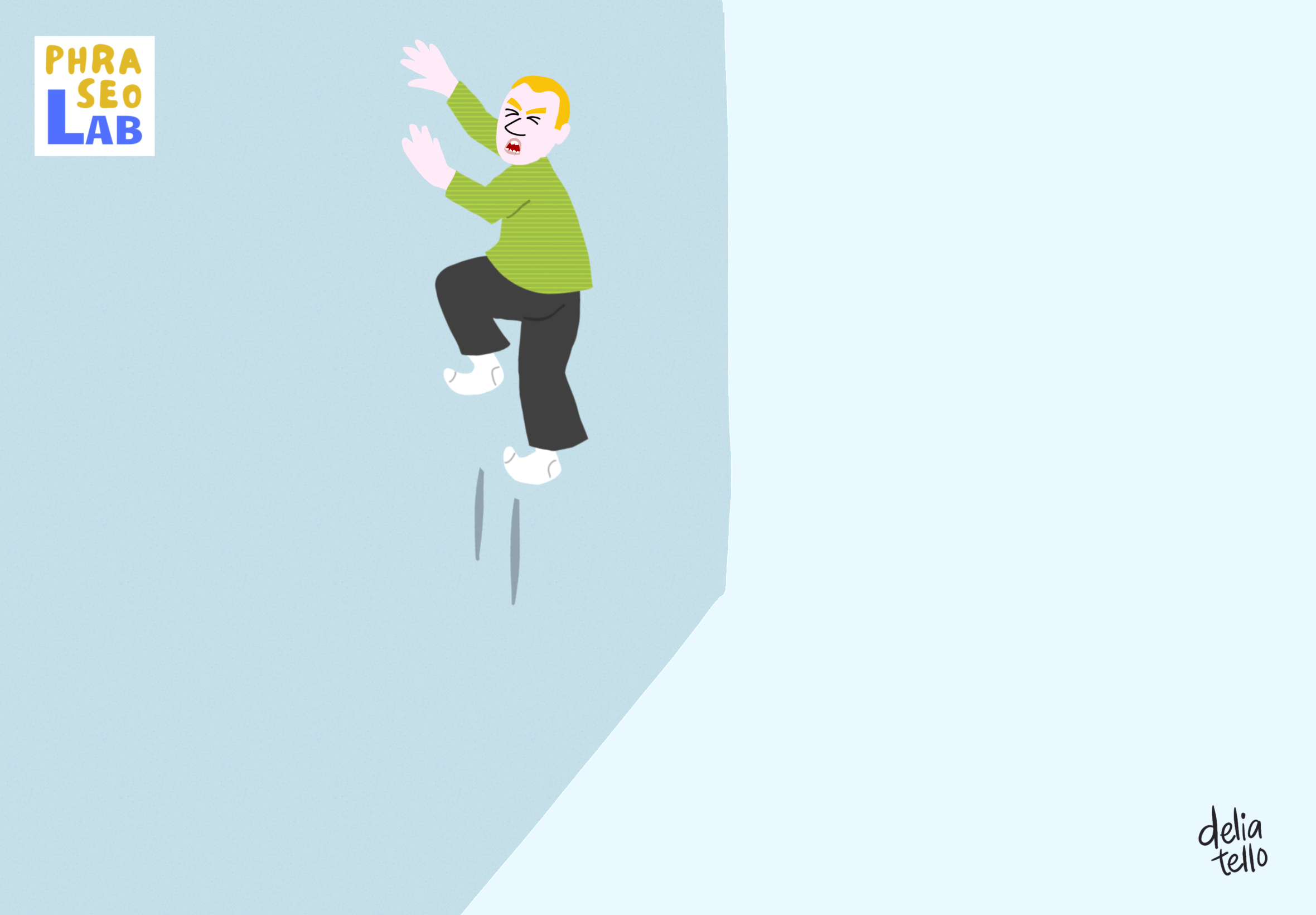
wird verwendet, wenn man wegen etwas, was passiert ist, wütend oder zornig ist "Das ärgert mich so sehr!", "Da könnte ich einen Wutausomebodyruch bekommen."
 That's driving me up the wall
That's driving me up the wall
(informal) used to say that someone or something makes you feel extremely angry or irritated
 Det er til at blive vanvittig over! Det driver mig til vanvid!
Det er til at blive vanvittig over! Det driver mig til vanvid!
 Είναι να να εξοργίζεσαι, να γίνεσαι έξω φρενών!
Είναι να να εξοργίζεσαι, να γίνεσαι έξω φρενών!
 Wściec się można! Szlag człowieka trafia!
Wściec się można! Szlag człowieka trafia!
 Es para subirse por las paredes
Es para subirse por las paredes
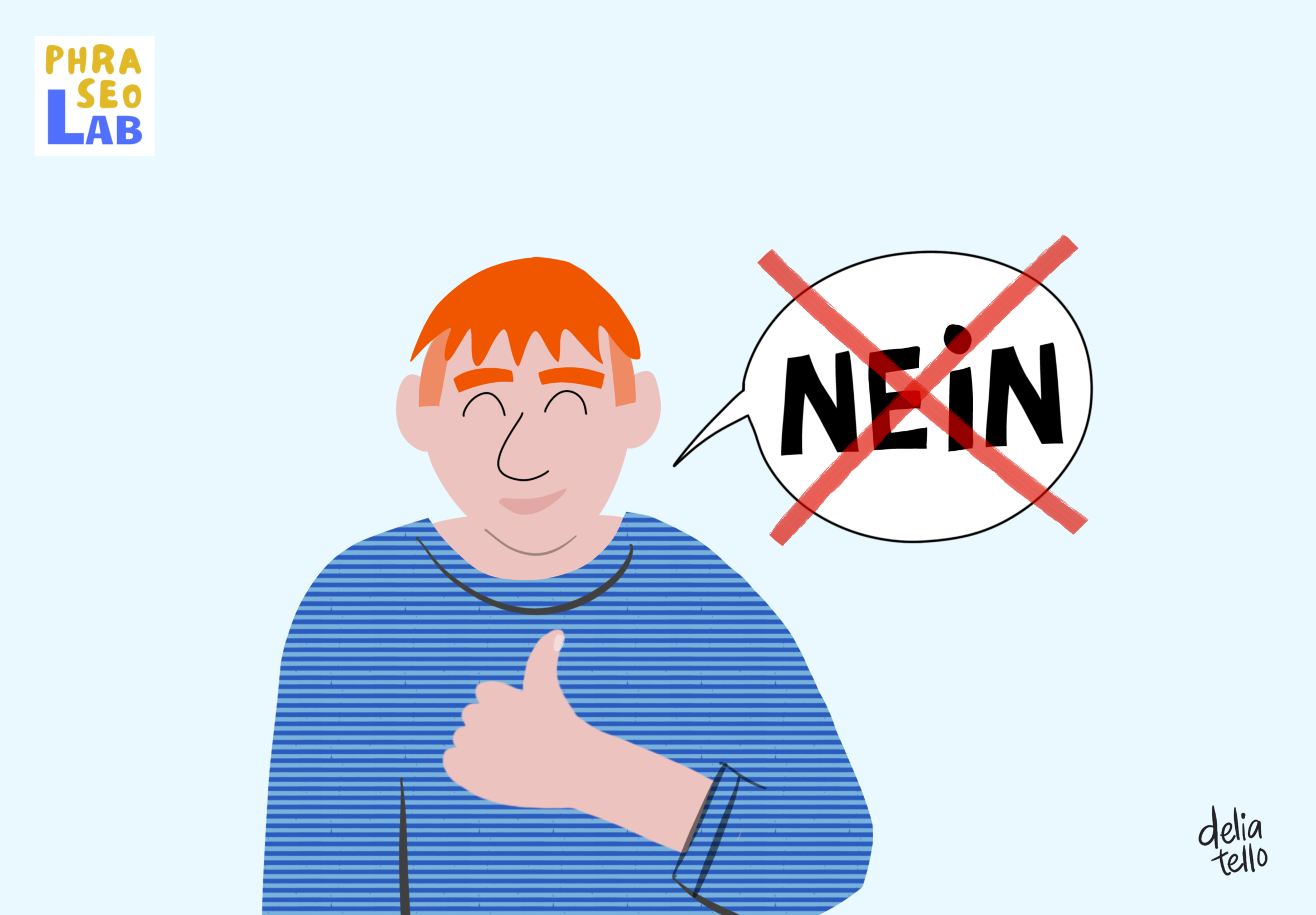
wird verwendet, um etwas zu akzeptieren oder zuzugeben. "Einverstanden! Abgemacht! Machen wir!"
 I wouldn't say no
I wouldn't say no
(informal) used to say that you would like to accept something that has been offered
 Det ville jeg ikke sige nej til!
Det ville jeg ikke sige nej til!
 Δεν λέω όχι
Δεν λέω όχι
 Nie powiem nie. Nie pogardzę, chętnie!
Nie powiem nie. Nie pogardzę, chętnie!
 A eso no digo que no / Por supuesto
A eso no digo que no / Por supuesto
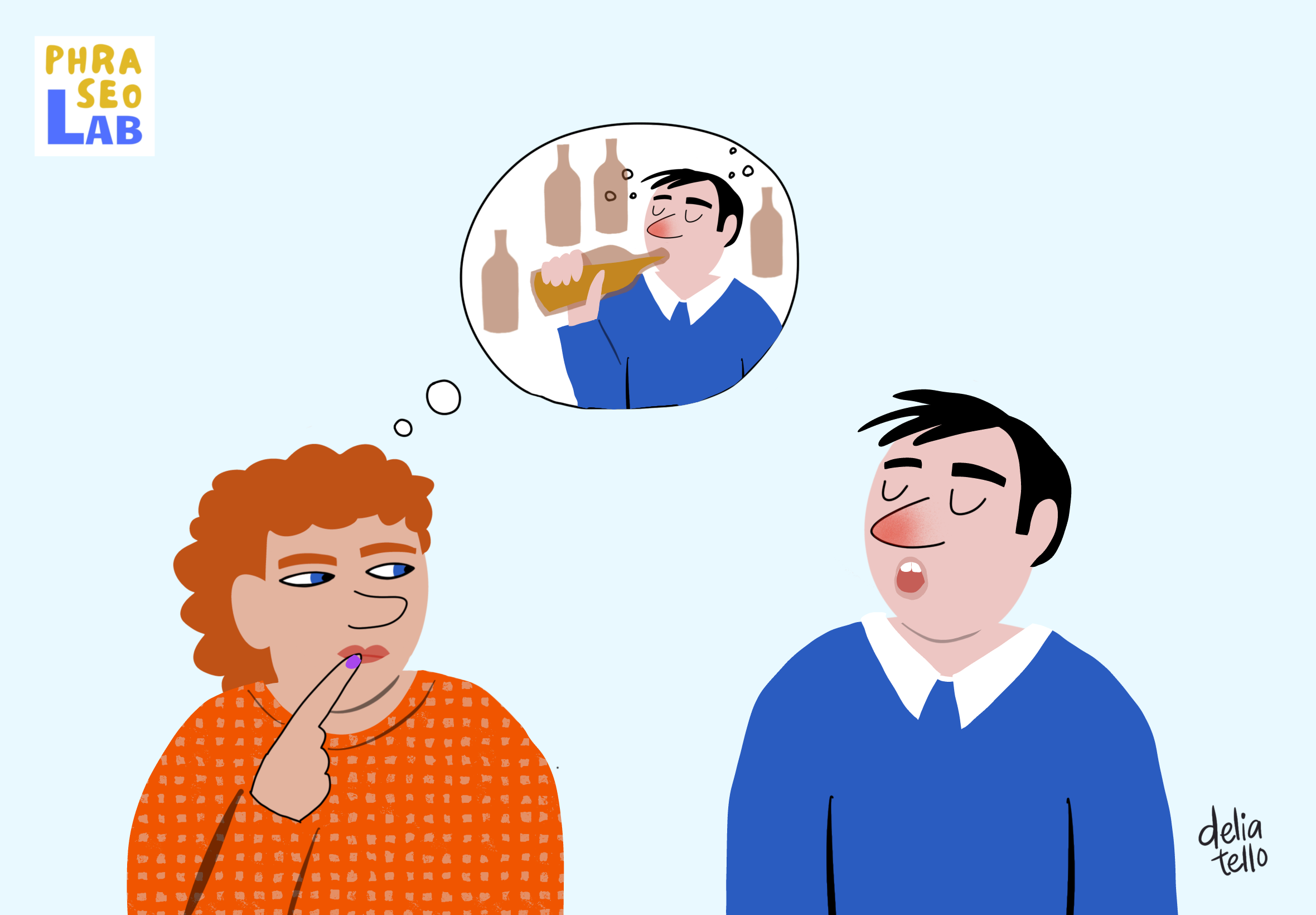
 to have a feeling / hunch
to have a feeling / hunch
 have en fornemmelse
have en fornemmelse
 έχω μια / την αίσθηση
έχω μια / την αίσθηση
 mieć uczucie
mieć uczucie
 tener una corazonada
tener una corazonada
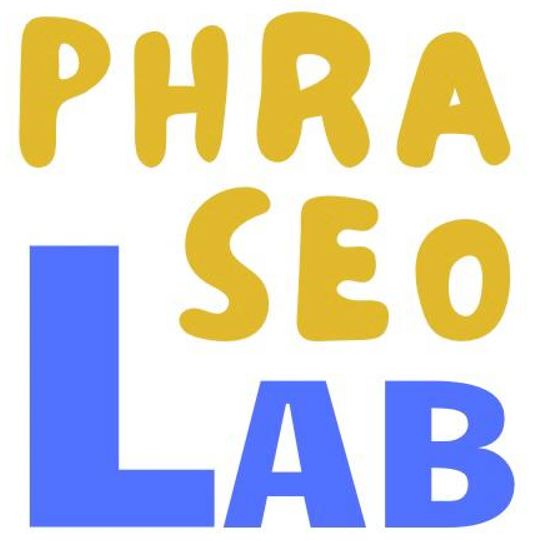
das ist ein anderes Thema, etwas ist mit dem vorher Behandelten nicht vergleichbar
 That’s another story (!)
That’s another story (!)
used when you do not want to say more at this particular time about a topic you have mentioned
 det er en (helt) anden historie
det er en (helt) anden historie
 αυτό είναι άλλο ζήτημα / θέμα / καπέλο
αυτό είναι άλλο ζήτημα / θέμα / καπέλο
 To inna para kaloszy
To inna para kaloszy
 ¡Eso es otra historia!
¡Eso es otra historia!
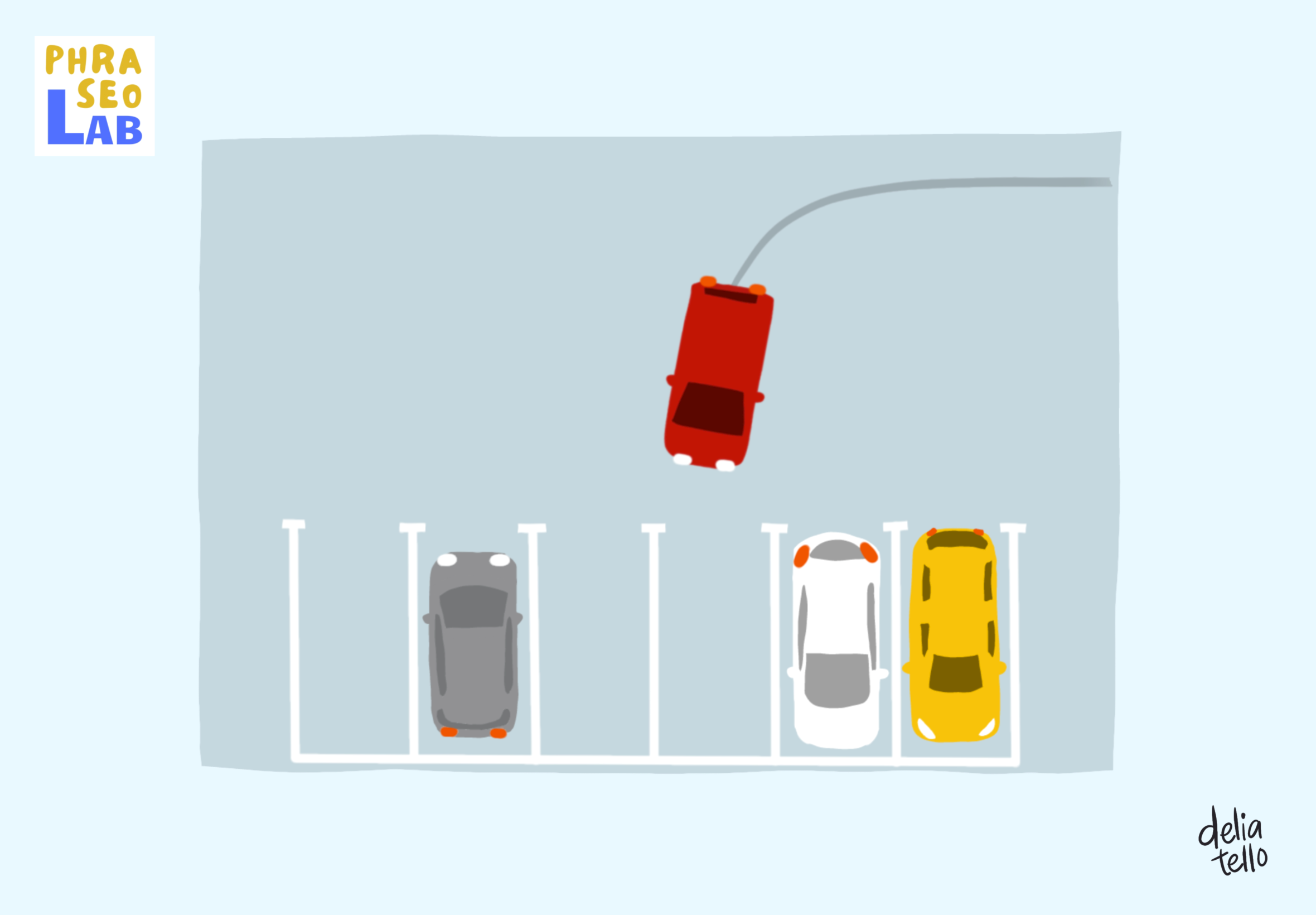
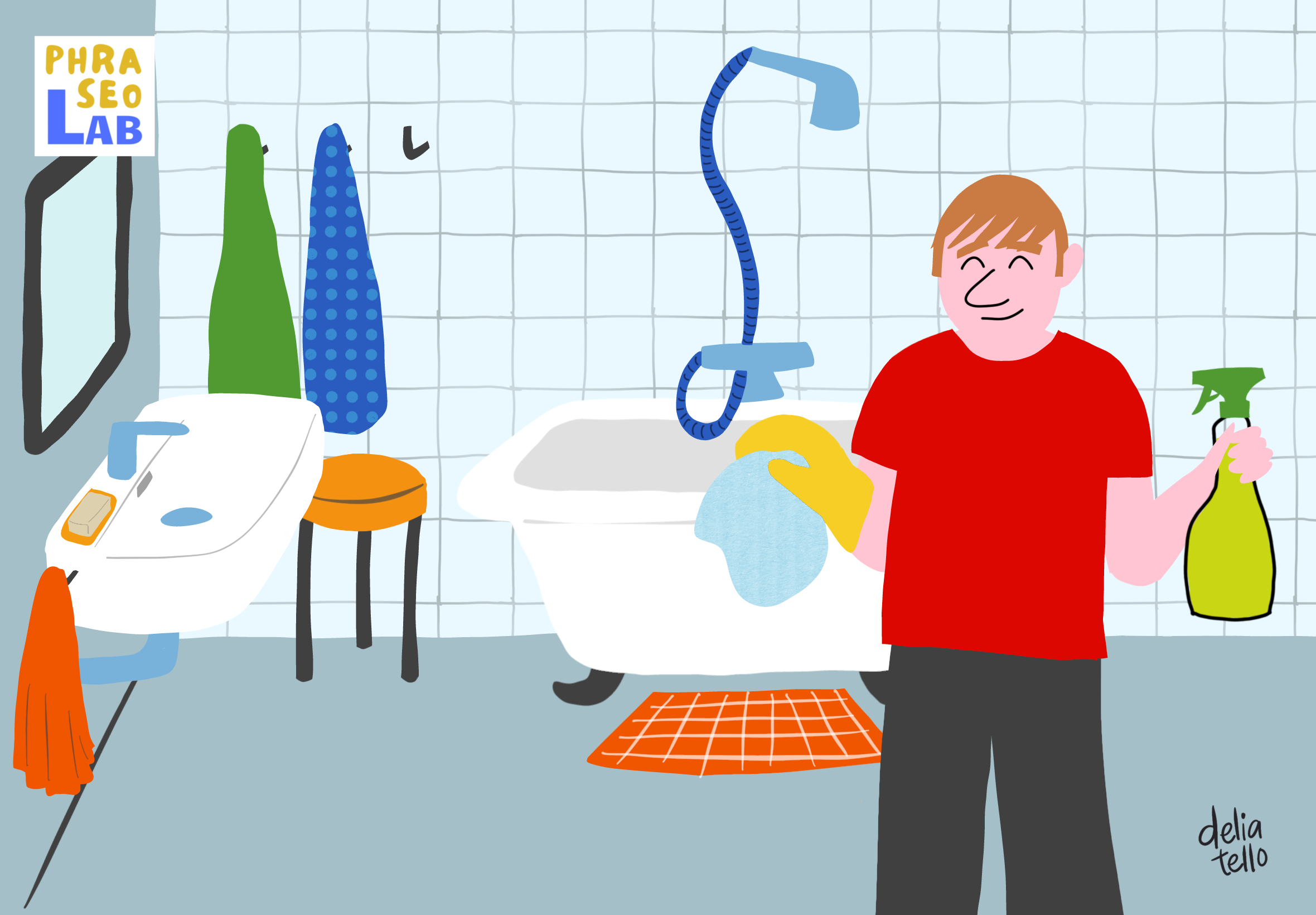

 to lose consciousness
to lose consciousness
 miste bevidsomethingeden
miste bevidsomethingeden
 χάνω τις αισθήσεις μου
χάνω τις αισθήσεις μου
 stracić świadomość
stracić świadomość
 perder la conciencia
perder la conciencia

wird verwendet, um etwas abzulehnen. "Das tue ich bestimmt nicht!", "Das ist ausgeschlossen!"
 I wouldn't dream of (doing) it
I wouldn't dream of (doing) it
used to say that you would not do something because it would not be wise
 Det kunne jeg ikke drømme om (at gøre)! Aldrig i livet!
Det kunne jeg ikke drømme om (at gøre)! Aldrig i livet!
 Αυτό δε θα το 'κανα ούτε στον ύπνο μου, δεν το διανοούμαι καν
Αυτό δε θα το 'κανα ούτε στον ύπνο μου, δεν το διανοούμαι καν
 Ani mi się śni!
Ani mi się śni!
 No se me ocurría nunca / ni de lejos
No se me ocurría nunca / ni de lejos
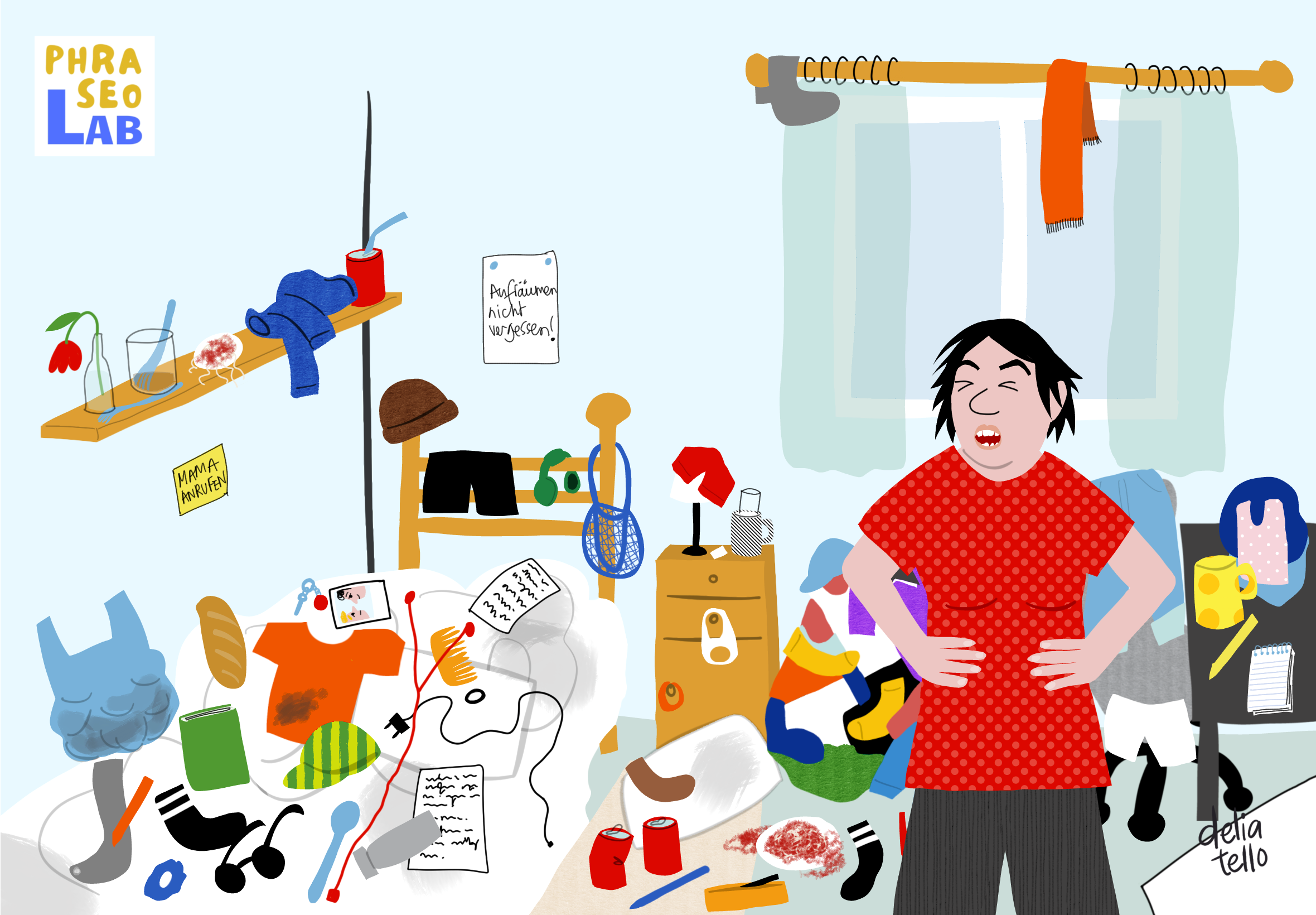
wird verwendet, um auszudrücken, dass die Grenzen des Erträglichen überschritten sind. "Das ist zuviel / unangemessen / inakzeptabel!"
 That's going too far!
That's going too far!
used to say that someone's behaviour is unacceptable because it exceeds reasonable limits
 det går for vidt!
det går for vidt!
 Αυτό πάει πολύ
Αυτό πάει πολύ
 Tego już za wiele!
Tego już za wiele!
 Eso se pasa de la raya / Te has pasado tres pueblos
Eso se pasa de la raya / Te has pasado tres pueblos

wird gesagt, wenn man der Meinung ist, dass das, was dem Zuhörer passiert ist, von ihm selbst verursacht wurde. "Du verdienst dein Unglück!", "Daran bist du selbst schuld!"
 It serves you right!
It serves you right!
(informal) said when you think that your addressee is to blame for something unpleasant that has happened to them, so that they should not be pitied for that.
 Det tjener dig godt!
Det tjener dig godt!
 Καλά να πάθεις!
Καλά να πάθεις!
 Dobrze Ci tak! Masz za swoje!
Dobrze Ci tak! Masz za swoje!
 Te está bien empleado / Te lo mereces
Te está bien empleado / Te lo mereces

 to turn down (volume)
to turn down (volume)
 sætte (mobilen) på lydløs
sætte (mobilen) på lydløs
 χαμηλώνω την ένταση (του κινητού)
χαμηλώνω την ένταση (του κινητού)
 ściszyć telefon
ściszyć telefon
 bajar el volumen (del móvil) / poner el móvil en silencio
bajar el volumen (del móvil) / poner el móvil en silencio
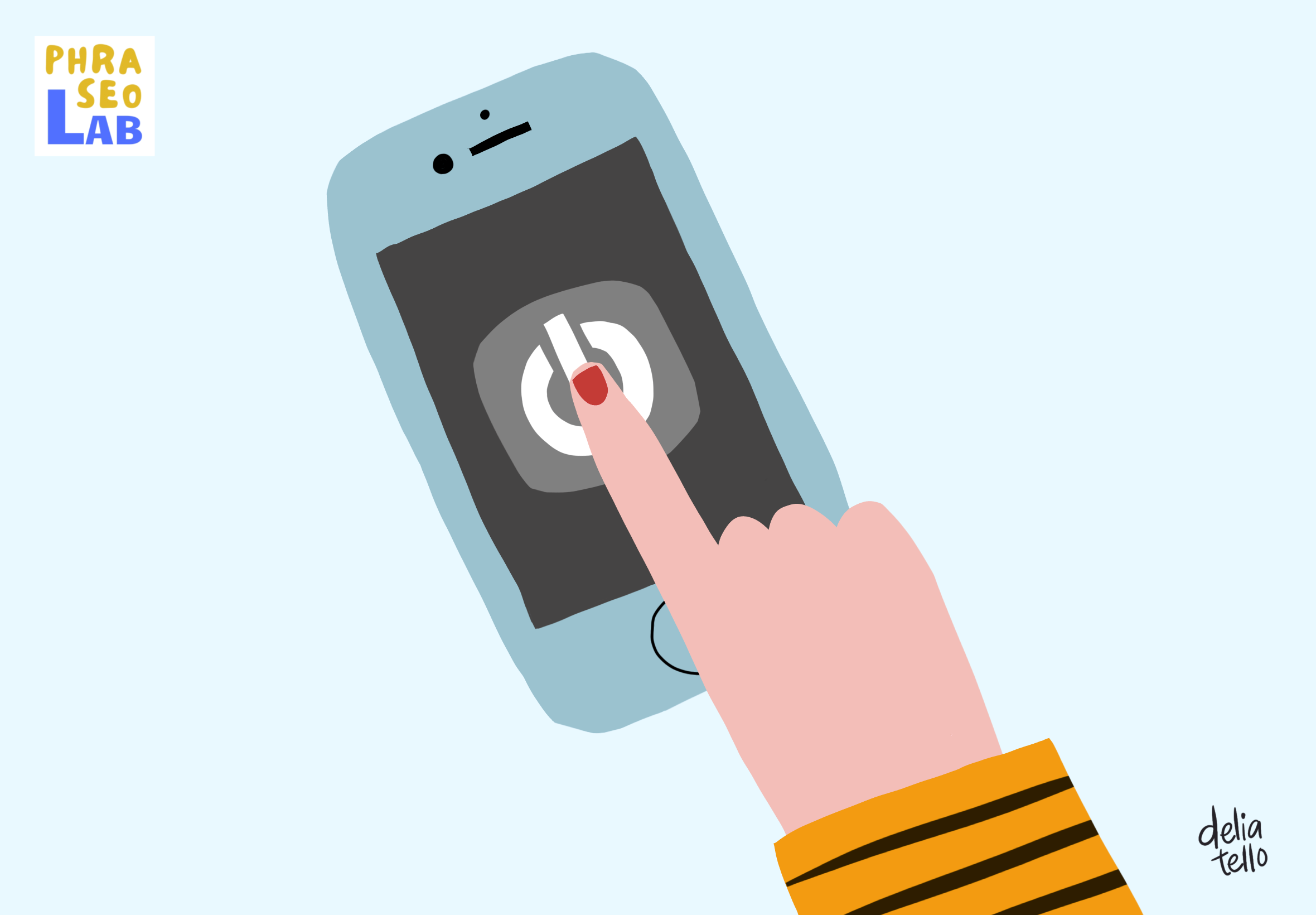
 to switch off one's mobile phone
to switch off one's mobile phone
 slukke mobilen
slukke mobilen
 απενεργοποιώ / κλείνω το κινητό
απενεργοποιώ / κλείνω το κινητό
 wyłączyć telefon
wyłączyć telefon
 apagar el móvil
apagar el móvil
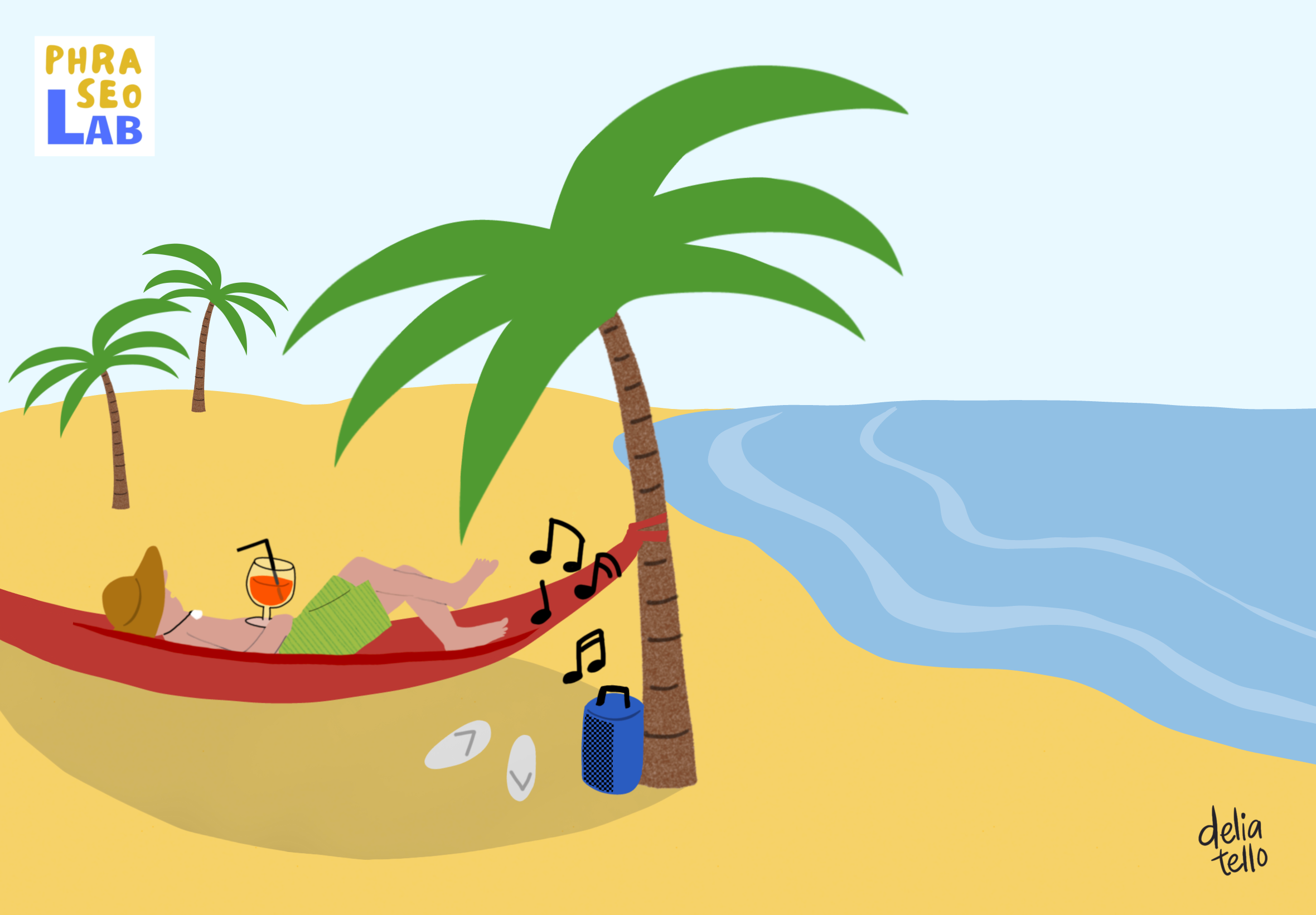
wird verwendet, um Freude über eine gute Situation auszudrücken. "Das ist das süße, angenehme, genussvolle Leben!"
 This is the life!
This is the life!
used to express happiness and enjoyment of a good or very pleasant situation
 Det er bare livet, det her! Livet er godt!
Det er bare livet, det her! Livet er godt!
 Αυτή είναι η ζωή!
Αυτή είναι η ζωή!
 To się nazywa życie!
To się nazywa życie!
 ¡Esto es vida!
¡Esto es vida!
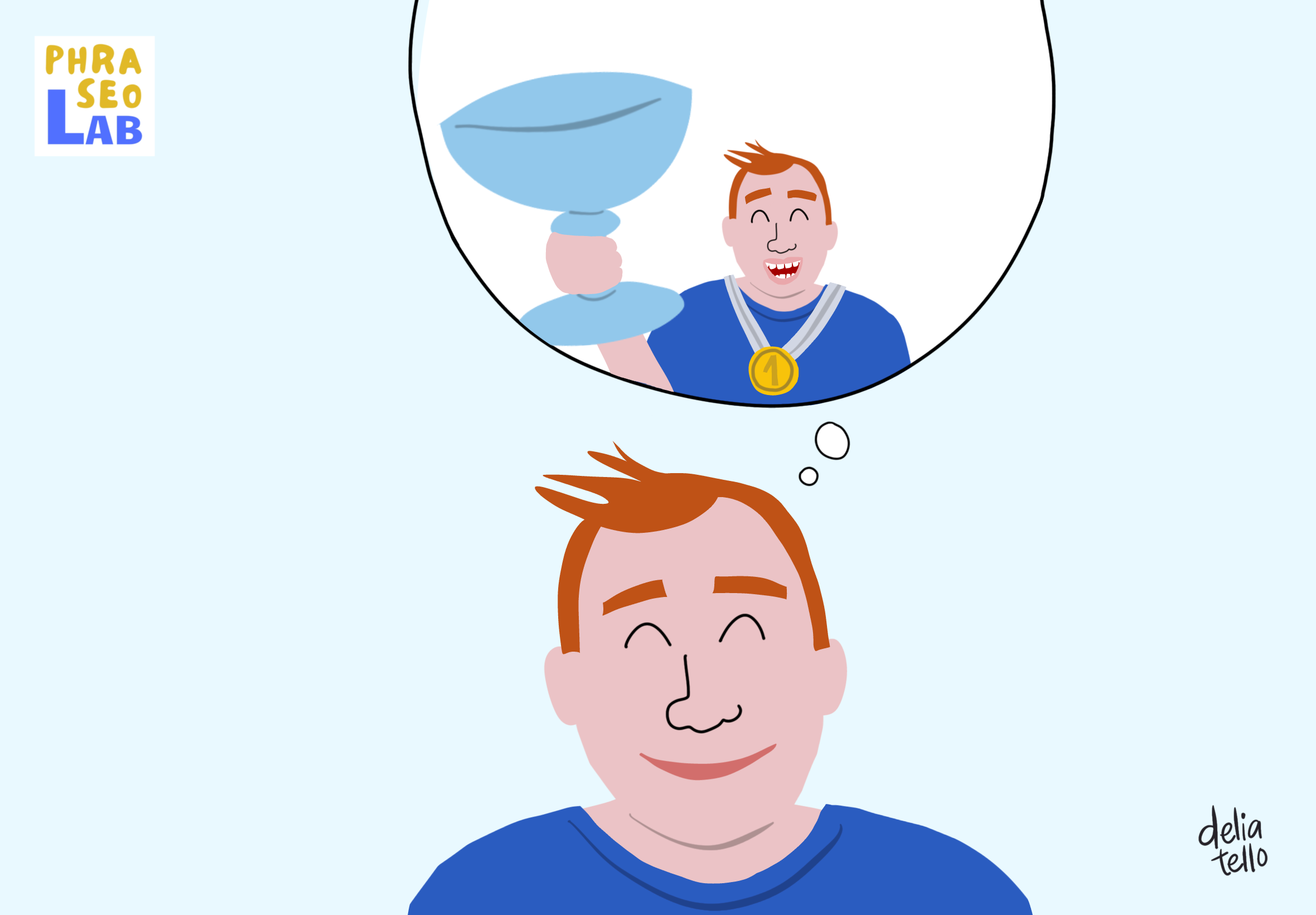
wird verwendet, um auszudrücken, dass etwas sehr gut, aber nicht real ist; man wünscht sich, es wäre real. "Ich wünschte, das wäre wahr"
 It's too good to be true
It's too good to be true
used to say that something is so good that you suspect there is something wrong which is hidden or unknown
 det er for godt til at være sandt
det er for godt til at være sandt
 (Είναι) πολύ ωραίο για να είναι αληθινό
(Είναι) πολύ ωραίο για να είναι αληθινό
 To zbyt piękne, by mogło być prawdziwe
To zbyt piękne, by mogło być prawdziwe
 Es demasiado bueno para ser verdad. ¡Ojalá fuera cierto!
Es demasiado bueno para ser verdad. ¡Ojalá fuera cierto!
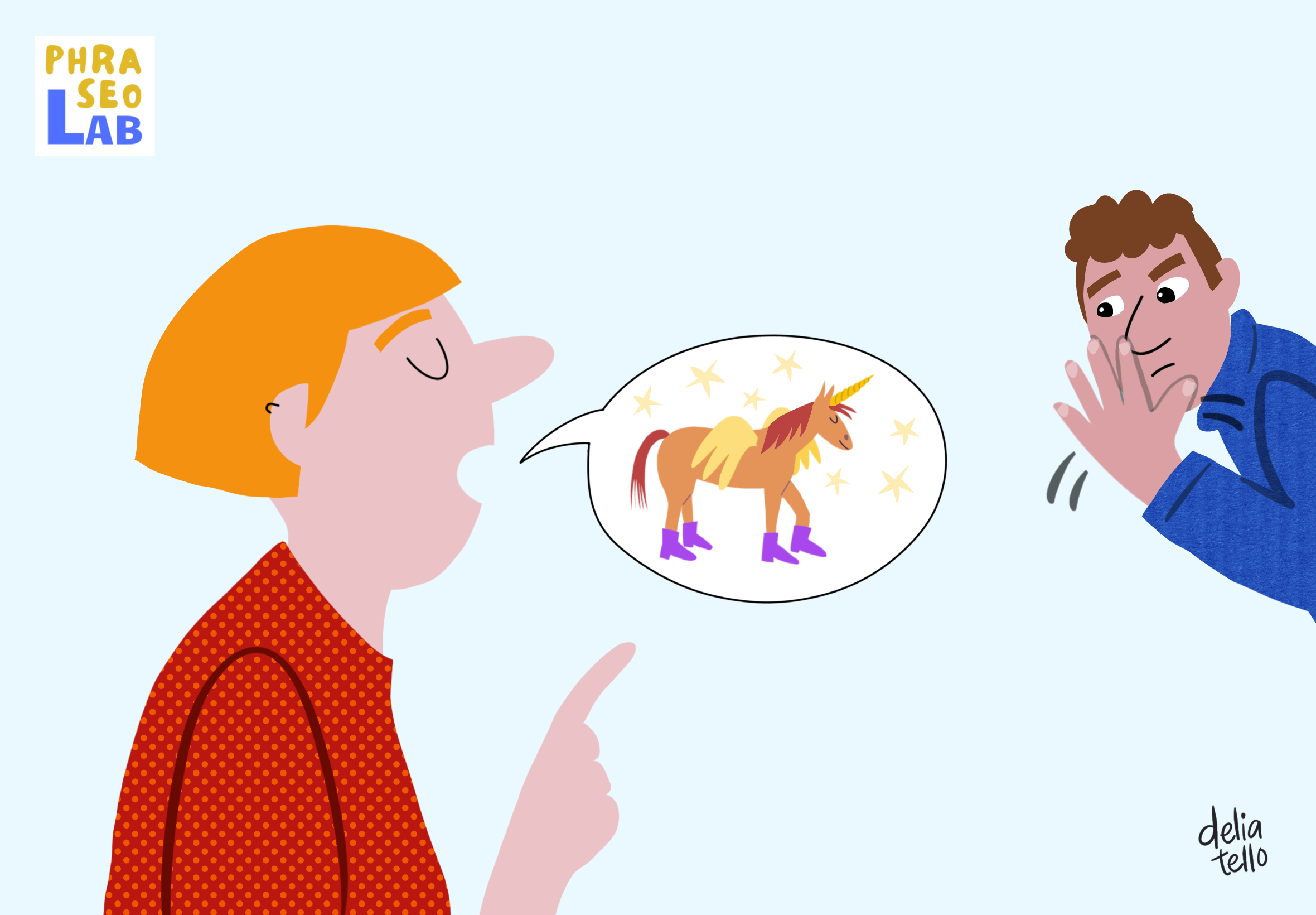
sagt man, wenn jemand etwas Unsinniges, Dummes sagt oder so handelt. Das ist absoluter Unsinn! Das ist völlig falsch!
 (That’s) rubbish / nonsense!
(That’s) rubbish / nonsense!
used to say that an idea or comment is nonsense or foolish
 Det er noget vrøvl!
Det er noget vrøvl!
 Βλακείες! Χαζομάρες!
Βλακείες! Χαζομάρες!
 Bzdura!
Bzdura!
 ¡Tonterías!
¡Tonterías!

wird gesagt, wenn der Sprecher den Zuhörer unterstützen will, indem er sagt, dass das, was passiert ist, nicht so ungewöhnlich, schlimm ist. "Das kann jedem passieren".
 accidents will happen in the best of families
accidents will happen in the best of families
After something undesired has happened, you can use this expression to make it seem less important and help the other speaker not to worry
 Det sker selv i den bedste familie!
Det sker selv i den bedste familie!
 Συμβαίνει και στις καλύτερες οικογένειες
Συμβαίνει και στις καλύτερες οικογένειες
 To się zdarza (w najlepszej rodzinie / w najlepszych rodzinach)!
To się zdarza (w najlepszej rodzinie / w najlepszych rodzinach)!
 Esto pasa en las mejores familias / Esas cosas pasan
Esto pasa en las mejores familias / Esas cosas pasan

wird gesagt, um sich zu rechtfertigen, weil man nicht über alle Informationen verfügte. "Woher sollte ich das wissen?"
 How should I know?
How should I know?
used to say that it is not your duty to know something or that you cannot be expected to know something
 Hvordan skulle jeg vide det?
Hvordan skulle jeg vide det?
 Πού να το φανταστώ; Δεν το περίμενα.
Πού να το φανταστώ; Δεν το περίμενα.
 Skąd miałem / miałam to wiedzieć?
Skąd miałem / miałam to wiedzieć?
 No me lo podría imaginar / ¿Cómo iba a saberlo?
No me lo podría imaginar / ¿Cómo iba a saberlo?

 to overdraw one's account
to overdraw one's account
 overtrække kontoen
overtrække kontoen
 υπερχρεώνω τοv (τραπεζικό) λογαριασμό
υπερχρεώνω τοv (τραπεζικό) λογαριασμό
 przekroczyć stan konta, zrobić debet na koncie
przekroczyć stan konta, zrobić debet na koncie
 exceder del saldo
exceder del saldo
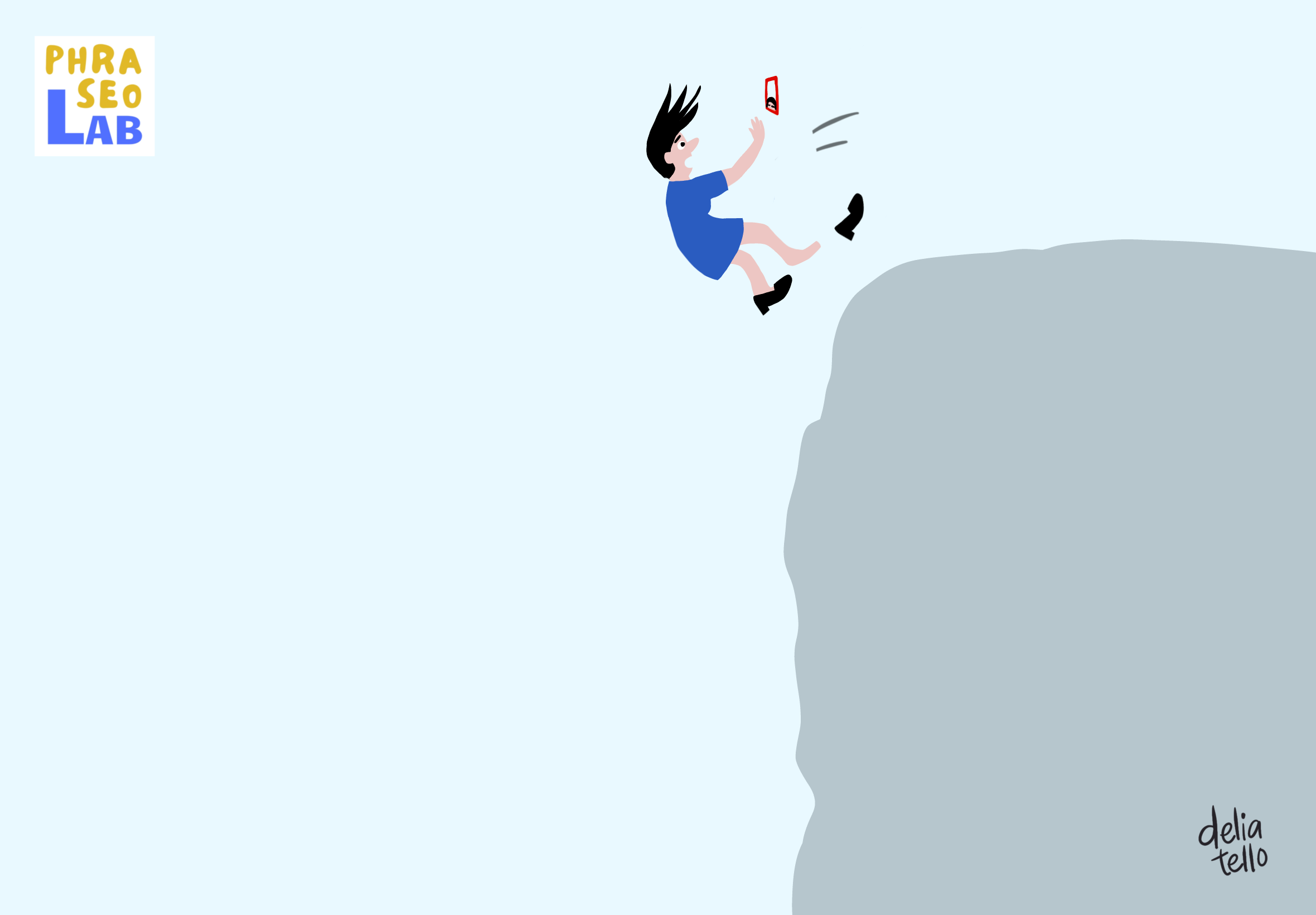
sterben (müssen)
 to cost lives
to cost lives
to cause people to die, usually because of a conflict, war, violent incidents or accidents
 koste livet
koste livet
 κοστίζω τη ζωή κάποιου / κάποιας
κοστίζω τη ζωή κάποιου / κάποιας
 kosztować życie
kosztować życie
 costar(le) la vida (a alguien)
costar(le) la vida (a alguien)
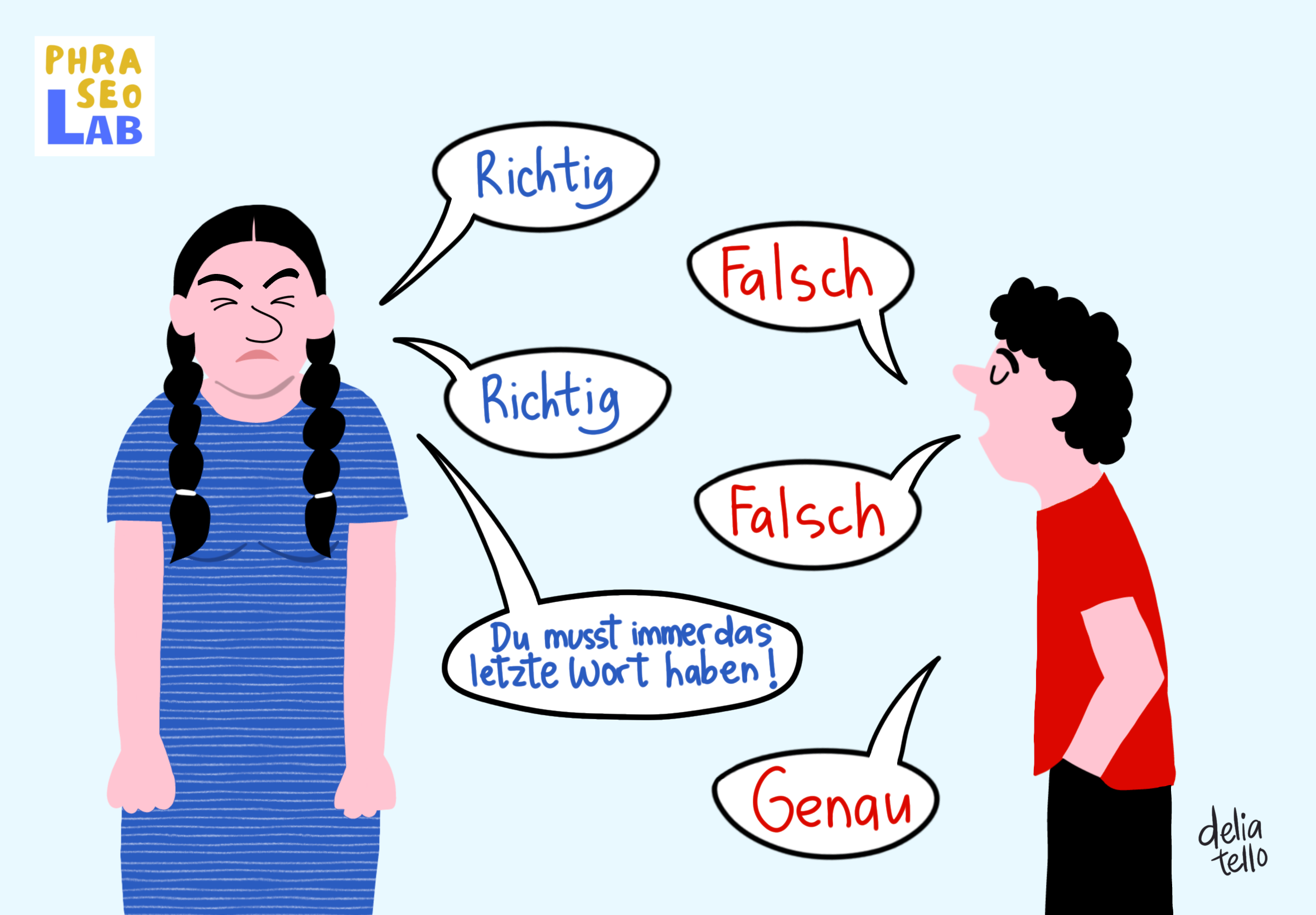
die letzte Bemerkung in einem Streit, die endgültige Entscheidung
 the last / final word (on something)
the last / final word (on something)
the last comment in a discussion, usually in an argument, or the power to decide about something
 (altid) ville have det sidste ord
(altid) ville have det sidste ord
 θέλω να έχω τον τελευταίο λόγο
θέλω να έχω τον τελευταίο λόγο
 mieć ostatnie słowo
mieć ostatnie słowo
 tener la última palabra
tener la última palabra

geboren werden
 to see the light of day (!)
to see the light of day (!)
to appear for the first time or begin to exist; to become public for the first time
 se dagens lys
se dagens lys
 αντικρίζω το φως του κόσμου, έρχομαι στον κόσμο
αντικρίζω το φως του κόσμου, έρχομαι στον κόσμο
 urodzić się, przyjść na świat
urodzić się, przyjść na świat
 ver la luz
ver la luz
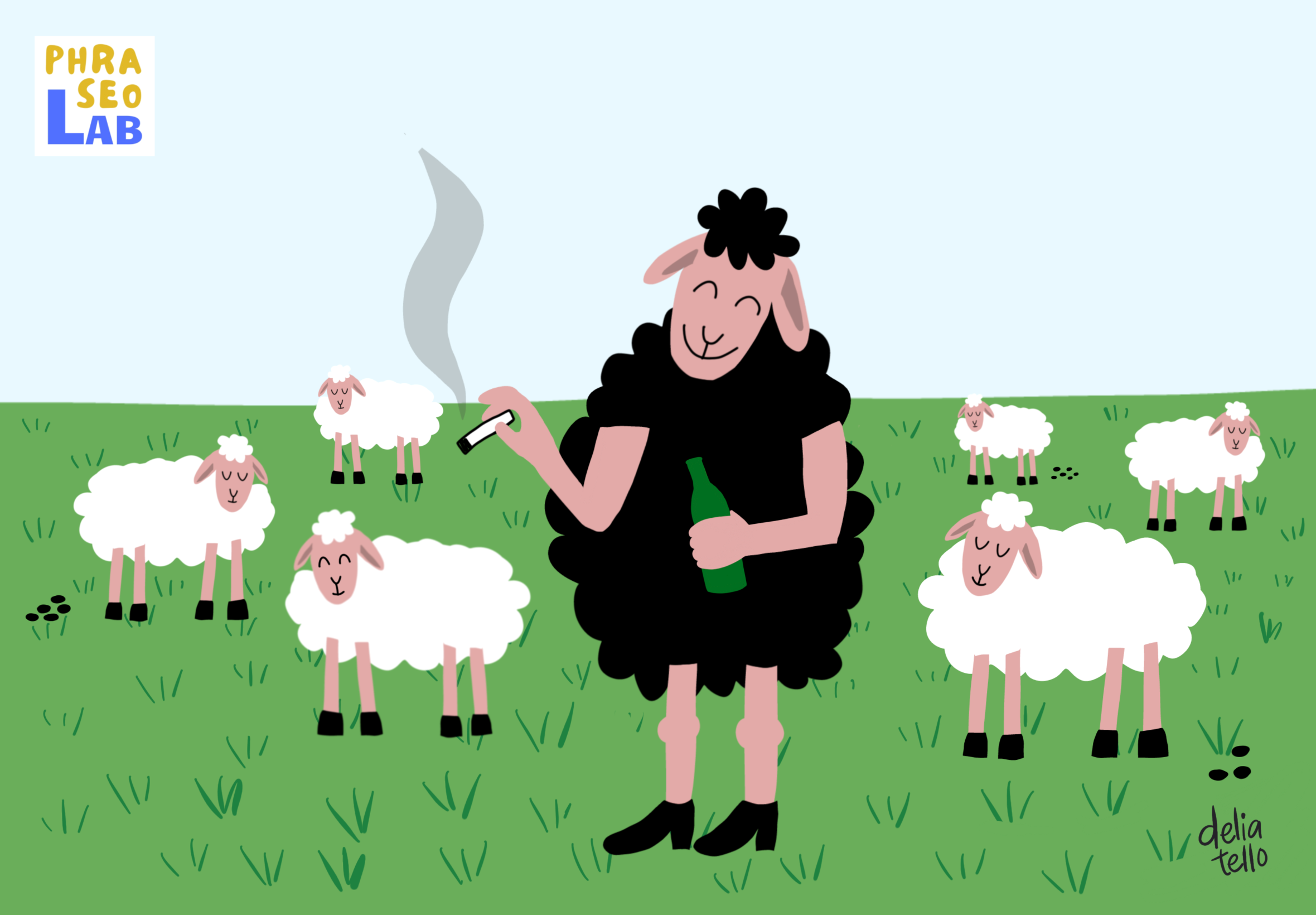
jemand (ein Familienmitglied), der sich unartig, unangepasst benimmt
 to be the black sheep
to be the black sheep
to be considered different from other members of the same group (for instance, a family) and be regarded as embarrassing
 være det sorte får
være det sorte får
 είμαι το μαύρο πρόβατο
είμαι το μαύρο πρόβατο
 czarna owca
czarna owca
 ser la oveja negra
ser la oveja negra
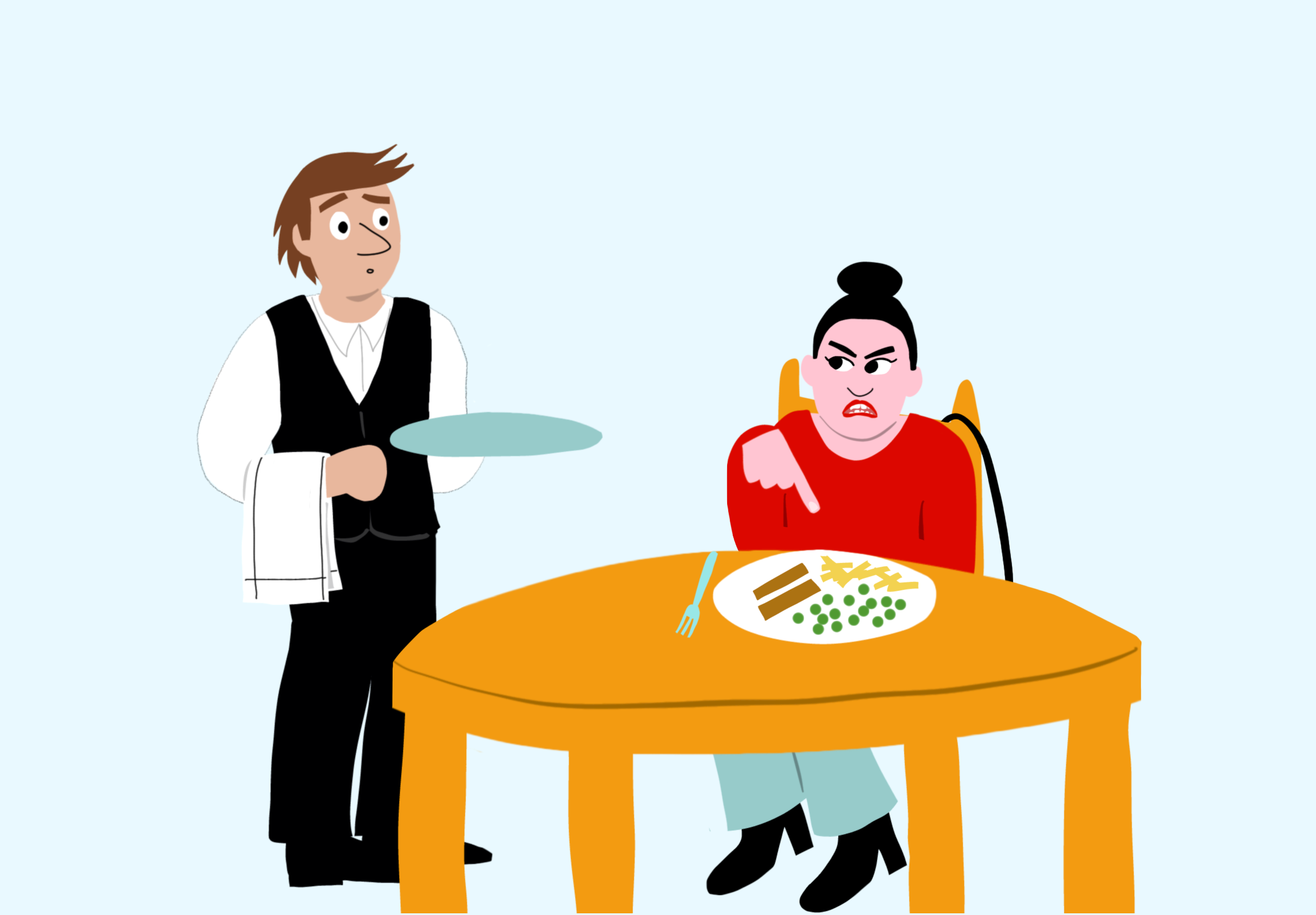
wird verwendet, wenn man nicht glaubt, was einem gesagt wird "Das ist unwahr", "Das ist unglaubwürdig!"
 You must be joking
You must be joking
(informal) used to express your surprise at something which someone has said and which is difficult to believe
 Det mener du ikke! Du må lave sjov!
Det mener du ikke! Du må lave sjov!
 Πλάκα μου κάνεις; Αστειεύεσαι;
Πλάκα μου κάνεις; Αστειεύεσαι;
 To chyba jakiś żart!
To chyba jakiś żart!
 ¿Es una broma, no? / ¿Estás de broma, no?
¿Es una broma, no? / ¿Estás de broma, no?


wird gesagt, wenn man etwas nicht weiß "Das weiß niemand"
 Heaven knows
Heaven knows
used to say that you don't know something or when you want to give emphasis to a statement (this expression might sound offensive to some speakers)
 Det er der ingen, der ved!
Det er der ingen, der ved!
 Ένας Θεός (το) ξέρει!
Ένας Θεός (το) ξέρει!
 Bóg jeden wie!
Bóg jeden wie!
 ¡Dios sabrá!
¡Dios sabrá!

wird verwendet, wenn man sich etwas wünscht. "Das erwarte ich auch!", "Na hoffentlich"
 I should hope so / not
I should hope so / not
used to express agreement or to express your wish that something should (not) happen
 Det håber jeg altså (ikke)!
Det håber jeg altså (ikke)!
 Έτσι θέλω να ελπίζω τουλάχιστον
Έτσι θέλω να ελπίζω τουλάχιστον
 Liczę na to! Mam nadzieję!
Liczę na to! Mam nadzieję!
 ¡Eso espero! / ¡Ojalá! / ¡Dios te oiga!
¡Eso espero! / ¡Ojalá! / ¡Dios te oiga!

wird verwendet, um auf die Tatsache hinzuweisen, dass etwas nicht sicher ist. "Das ist ungewiss!", "Das weiß niemand!", "Das ist alles andere als eindeutig!"
 Heaven / God only knows
Heaven / God only knows
(informal) used to give emphasis to a statement or to refer to the fact that you have no knowledge about it (the use of this expression might sound offensive to some speakers)
 Gud ved hvad
Gud ved hvad
 Ένας Θεός (το) ξέρει
Ένας Θεός (το) ξέρει
 Bóg wie! Jeden Bog wie!
Bóg wie! Jeden Bog wie!
 Solo Dios sabe
Solo Dios sabe

 to decorate the room
to decorate the room
 indrette værelset
indrette værelset
 επιπλώνω / διαμορφώνω το δωμάτιο
επιπλώνω / διαμορφώνω το δωμάτιο
 urządzić pokój
urządzić pokój
 decorar la habitación
decorar la habitación

wird gesagt, wenn man denkt, dass etwas ein Scherz sein muss und dass es unmöglich ist, dass es passiert. "Das ist unglaubwürdig!"
 Don't make me laugh!
Don't make me laugh!
(informal) used to express the thought that what someone has said is foolish and cannot be taken seriously.
 Meget sjovt! Det kan du ikke mene!
Meget sjovt! Det kan du ikke mene!
 Θα βάλω τα γέλια (επειδή δεν πιστεύω κάτι)
Θα βάλω τα γέλια (επειδή δεν πιστεύω κάτι)
 Nie rozśmieszaj mnie! To chyba (jakiś) żart!
Nie rozśmieszaj mnie! To chyba (jakiś) żart!
 ¡No me hagas reír, anda!
¡No me hagas reír, anda!

wird verwendet, um jemanden zu unterstützen. "Das ist nicht so schlimm!", "Das ist kein großes Unglück!"
 It's not the end of the world!
It's not the end of the world!
used to say that worse things could happen. It can be used to try to stop someone from feeling upset by something bad.
 Det er ikke verdens undergang!
Det er ikke verdens undergang!
 Δεν χάθηκε ο κόσμος!
Δεν χάθηκε ο κόσμος!
 Świat się nie zawali! To nie koniec świata!
Świat się nie zawali! To nie koniec świata!
 El mundo no se va a acabar por eso / No es el fin del mundo
El mundo no se va a acabar por eso / No es el fin del mundo

wird verwendet, um jemandem zu sagen, dass seine Probleme nicht groß sind. "Mach dir keine Sorgen! Das ist nicht wichtig!"
 I wish I had your problems!
I wish I had your problems!
used to tell someone that his / her problems are not big
 Hvis jeg bare havde dine problemer! Gid jeg havde dine problemer!
Hvis jeg bare havde dine problemer! Gid jeg havde dine problemer!
 Να 'χα μόνο τα προβλήματά σου
Να 'χα μόνο τα προβλήματά σου
 Chciałbym / chciałabym mieć twoje zmartwienia!
Chciałbym / chciałabym mieć twoje zmartwienia!
 No te quejes / Anda, anda
No te quejes / Anda, anda
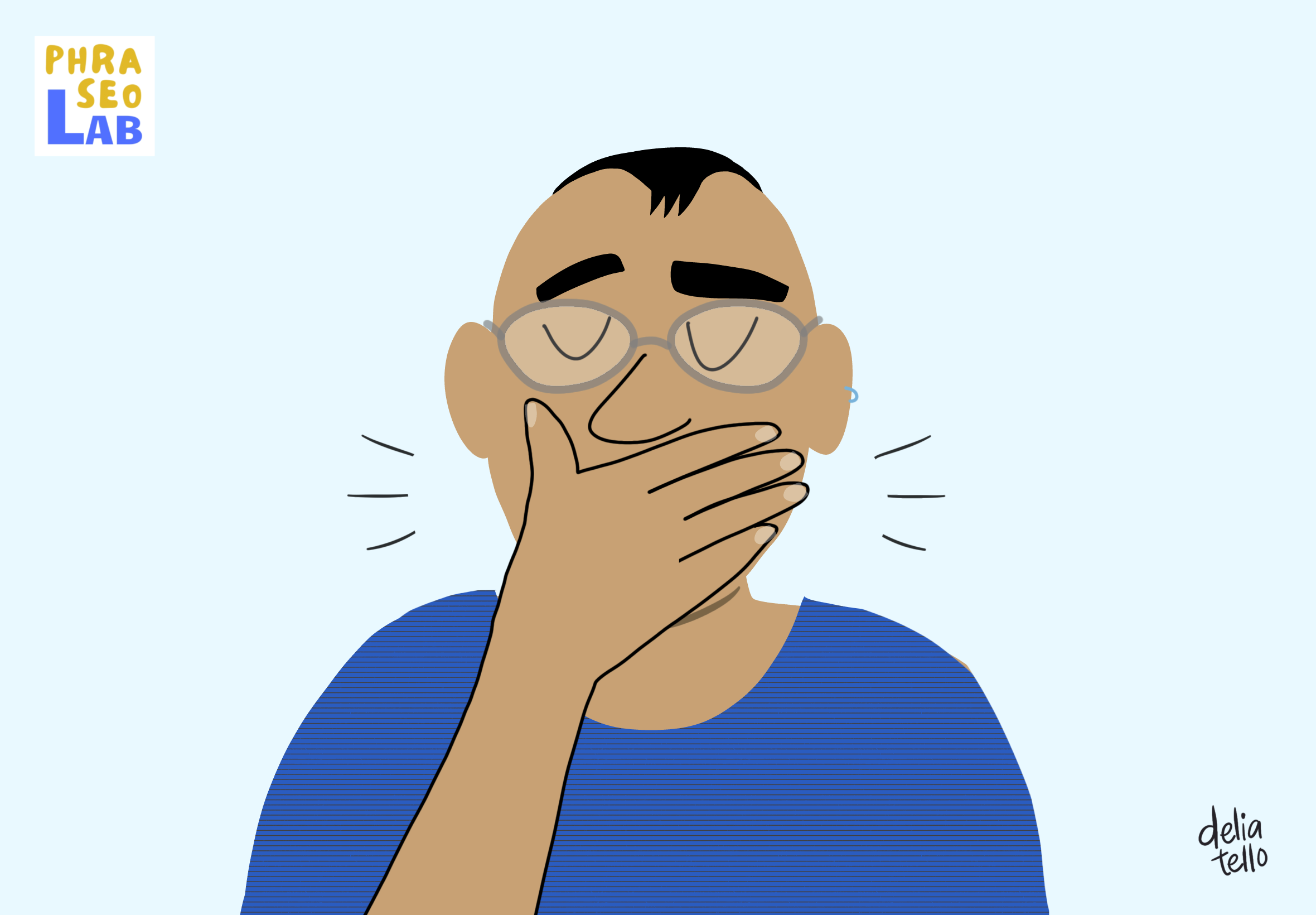
still sein, schweigen; nichts sagen, sich zurückhalten;
 to hold your tongue / peace
to hold your tongue / peace
to be silent; not to say a word, although there is something you wold like to say
 holde sin tunge; holde sin mund lukket
holde sin tunge; holde sin mund lukket
 σκάω, το βουλώνω
σκάω, το βουλώνω
 trzymać gębę na kłódkę
trzymać gębę na kłódkę
 morderse la lengua
morderse la lengua

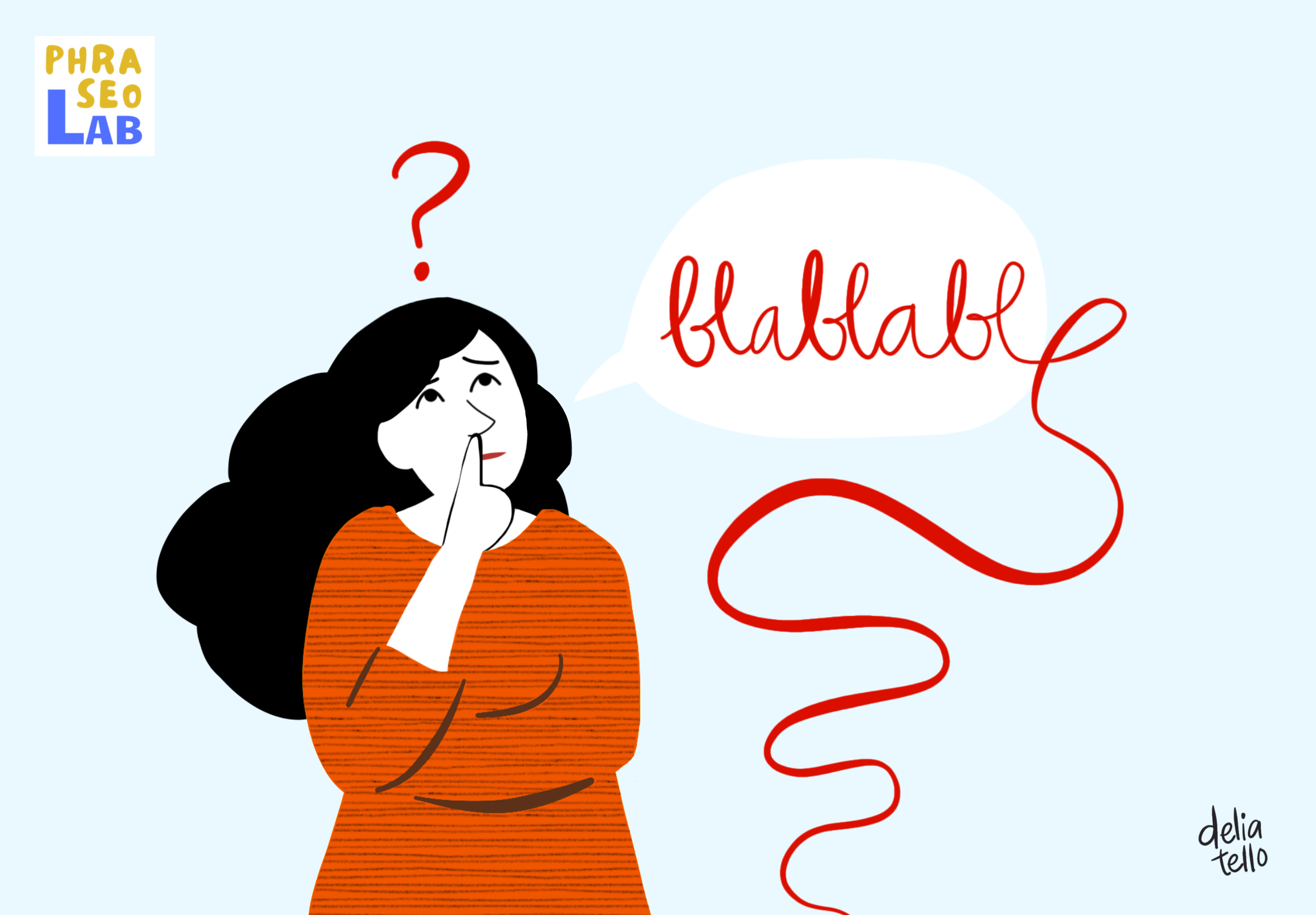
(beim Sprechen oder Zuhören) plötzlich nicht mehr wissen, was man sagen wollte oder den Leitgedanken nicht mehr nachvollziehen können
 to lose the thread
to lose the thread
to get distracted and not to follow what someone is saying or to forget what you want to say
 miste tråden
miste tråden
 χάνω τον ειρμό μου
χάνω τον ειρμό μου
 stracić wątek
stracić wątek
 perder el hilo
perder el hilo

 to take one's / the driving test
to take one's / the driving test
 få kørekort
få kørekort
 βγάζω δίπλωμα οδήγησης
βγάζω δίπλωμα οδήγησης
 zrobić prawo jazdy
zrobić prawo jazdy
 sacarse / obtener el carné de conducir
sacarse / obtener el carné de conducir
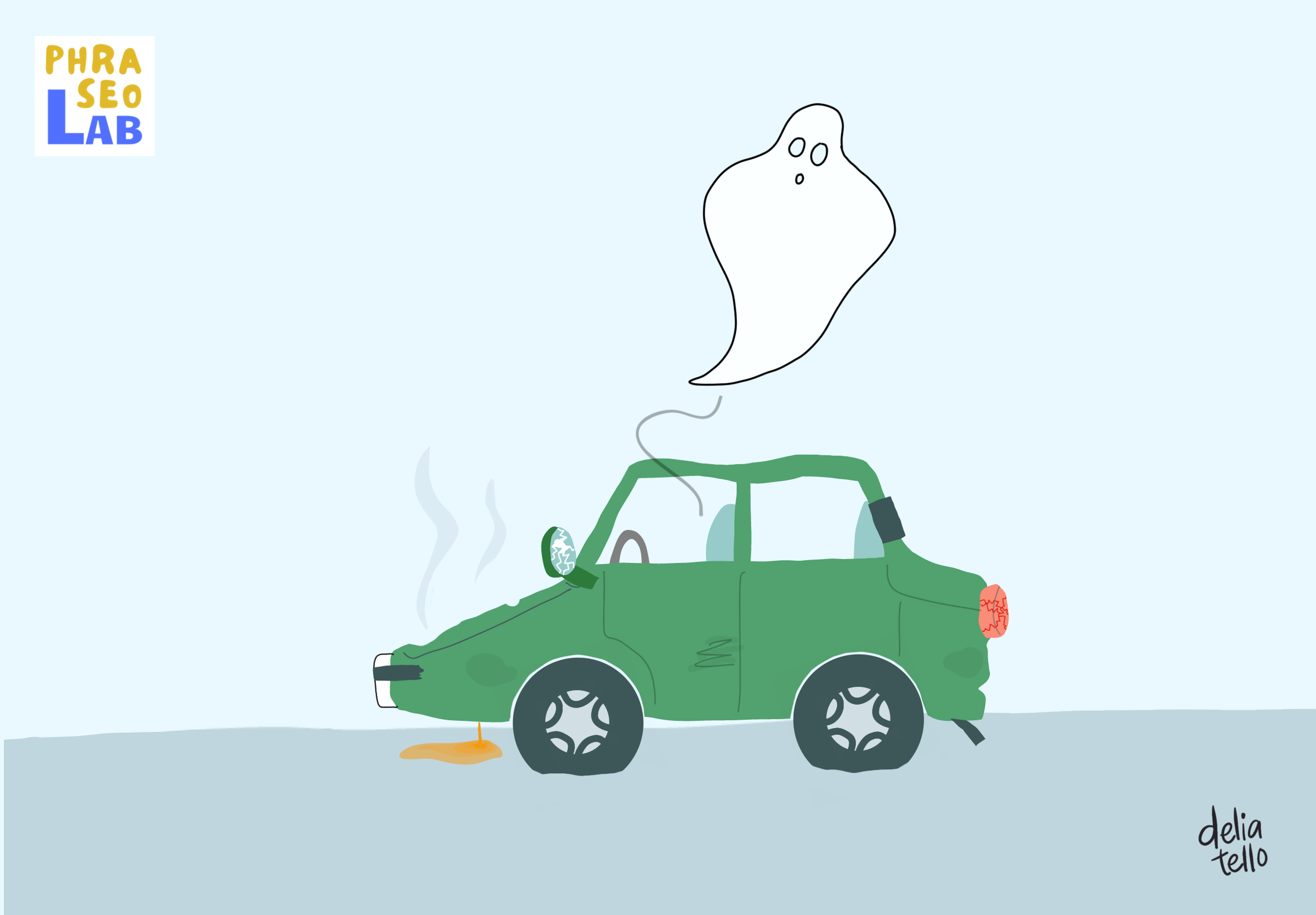
1. (technische Geräte) versagen, kaputtgehen; 2. (Menschen) sterben
 to give up the ghost
to give up the ghost
1. (of living beings) to die; 2. (of a machine) to stop working
 1. gå i stykker; 2. opgive ånden
1. gå i stykker; 2. opgive ånden
 παραδίδω πνεύμα
παραδίδω πνεύμα
 1. (o urządzeniach, sprzęcie) coś wysiada, psuć się; 2. ktoś wyzionął ducha
1. (o urządzeniach, sprzęcie) coś wysiada, psuć się; 2. ktoś wyzionął ducha
 pasar a mejor vida
pasar a mejor vida

 to load the dishwasher
to load the dishwasher
 fylde opvaskemaskinen
fylde opvaskemaskinen
 βάζω τα πιάτα στο πλυντήριο πιάτων
βάζω τα πιάτα στο πλυντήριο πιάτων
 załadować zmywarkę
załadować zmywarkę
 poner el lavavajillas
poner el lavavajillas

 to empty / unload the dishwasher
to empty / unload the dishwasher
 tømme opvaskemaskinen
tømme opvaskemaskinen
 αδειάζω το πλυντήριο πιάτων
αδειάζω το πλυντήριο πιάτων
 opróżnić zmywarkę
opróżnić zmywarkę
 colocar el lavavajillas
colocar el lavavajillas
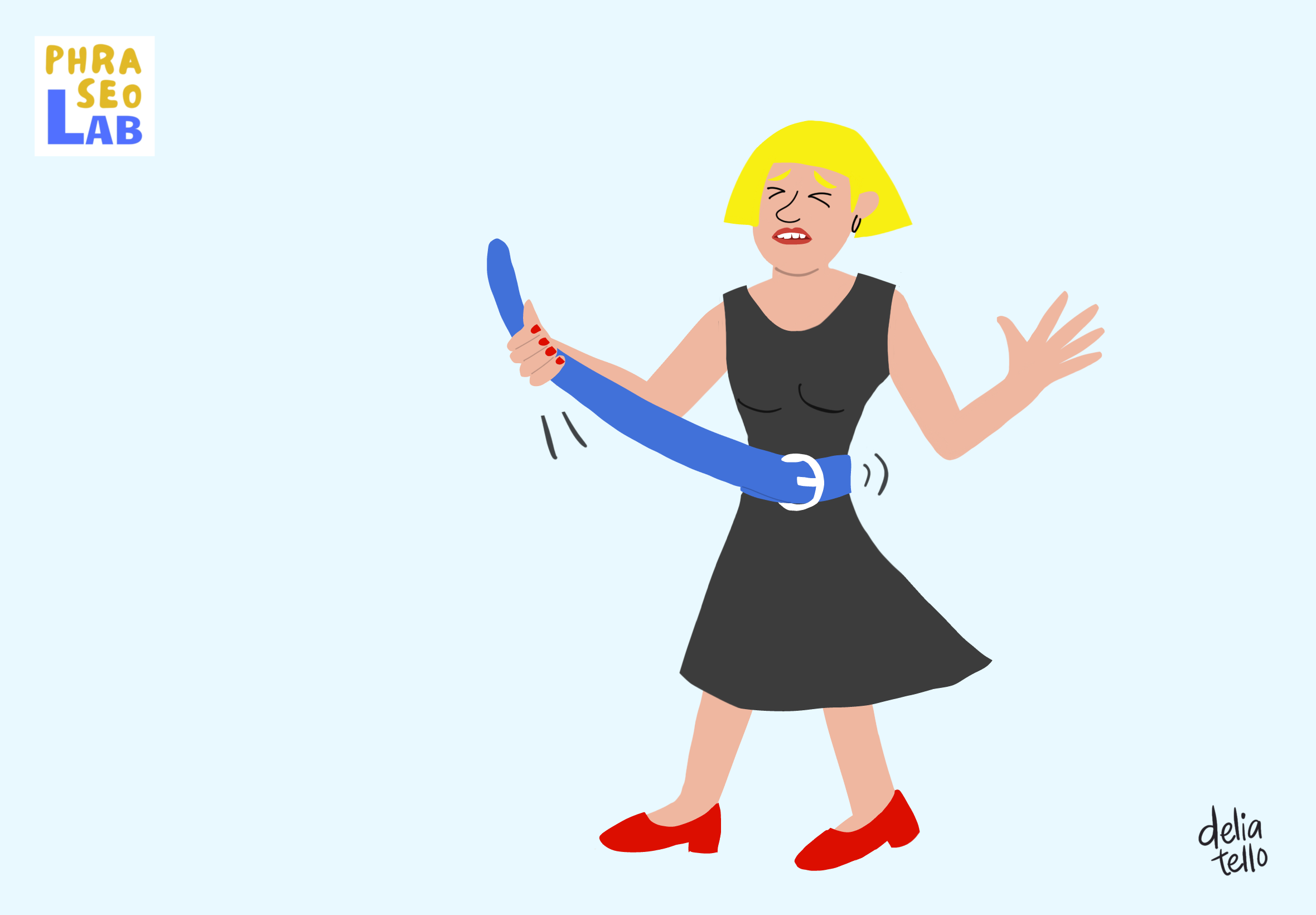
sich einschränken, sparen
 to tighten your belt
to tighten your belt
to spend less money
 spænde livremmen ind
spænde livremmen ind
 σφίγγω το ζωνάρι
σφίγγω το ζωνάρι
 zaciskać pasa
zaciskać pasa
 apretarse el cinturón
apretarse el cinturón

 to do the housework
to do the housework
 stå for husholdningen
stå for husholdningen
 κάνω δουλειές του σπιτιού
κάνω δουλειές του σπιτιού
 wykonywać obowiązki domowe
wykonywać obowiązki domowe
 hacer las tareas de casa
hacer las tareas de casa
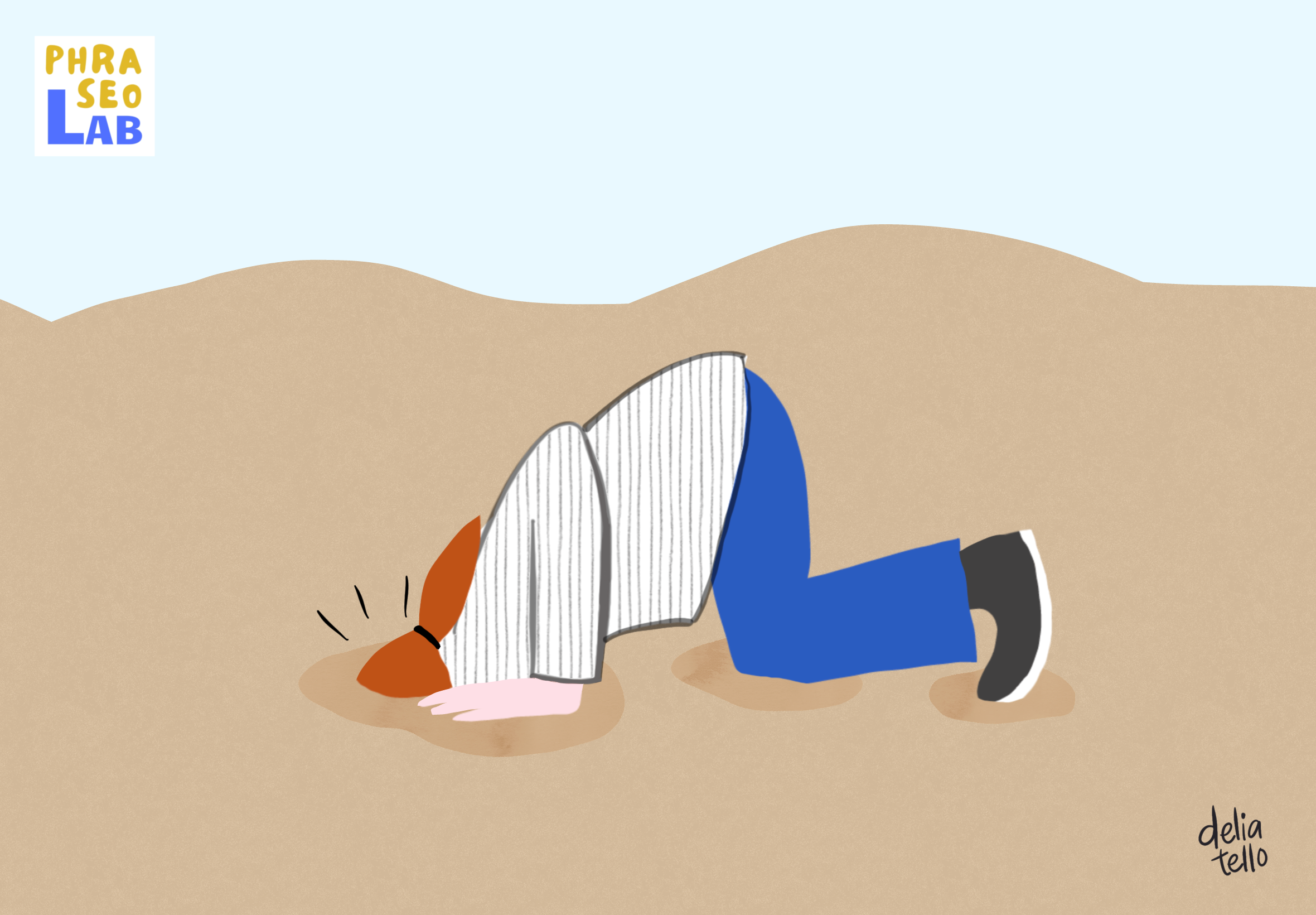
Tatsachen ignorieren; die Realität, eine Situation nicht wahrnehmen und akzeptieren wollen
 to stick your head in the sand, bury / have your head in the sand
to stick your head in the sand, bury / have your head in the sand
to be unwilling to face a problem or a difficult situation
 stikke hovedet i busken
stikke hovedet i busken
 στρουθοκαμηλίζω
στρουθοκαμηλίζω
 schować głowę w piasek
schować głowę w piasek
 esconder la cabeza en la (tierra / arena)
esconder la cabeza en la (tierra / arena)
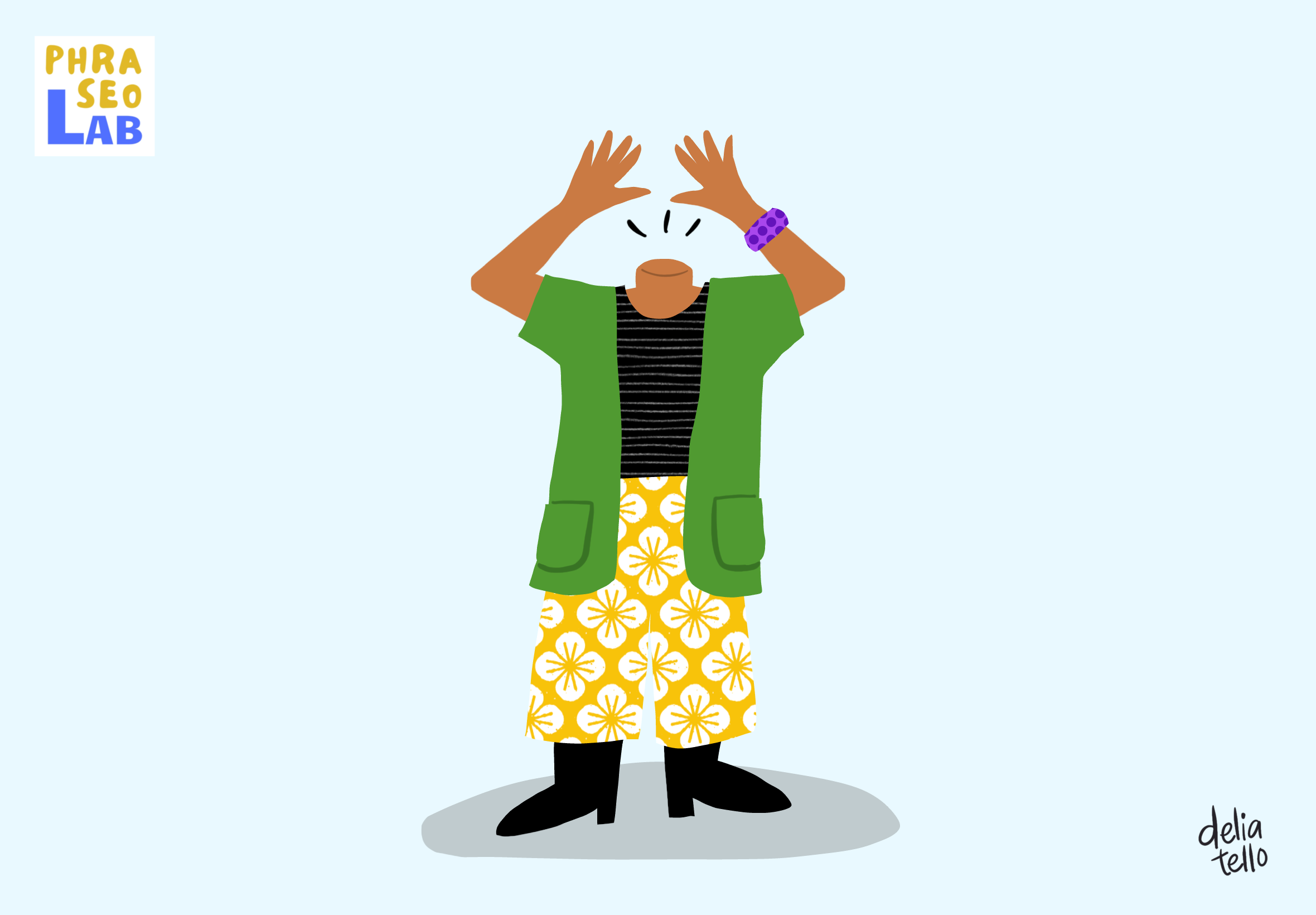
unruhig, aufgeregt, nervös werden, unüberlegt handeln, in Panik geraten
 to lose your head
to lose your head
to lose control of your own behaviour and be unable to act calmly in a difficult situation
 tabe hovedet
tabe hovedet
 χάνω την ψυχραιμία μου / δρω απερίσκεπτα
χάνω την ψυχραιμία μου / δρω απερίσκεπτα
 stracić głowę, wpaść w panikę
stracić głowę, wpaść w panikę
 perder los papeles/los estribos
perder los papeles/los estribos

verlieren, Pech haben; benachteiligt sein und deshalb unterliegen
 to draw the short straw (!)
to draw the short straw (!)
to get the worst part or task
 trække det korteste strå
trække det korteste strå
 βγαίνω χαμένος/η
βγαίνω χαμένος/η
 gorzej na czymś wychodzić
gorzej na czymś wychodzić
 tocarle la china
tocarle la china




